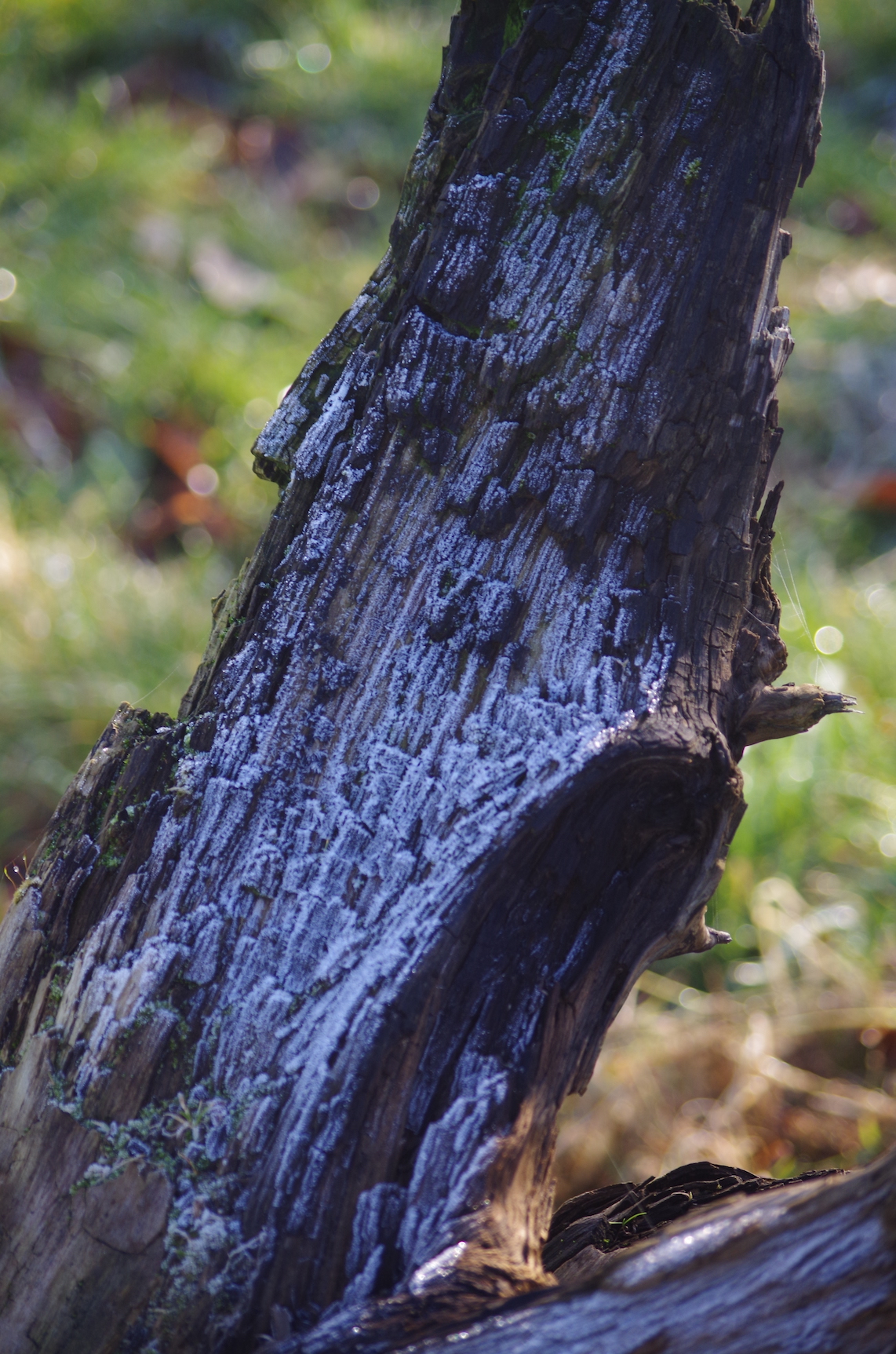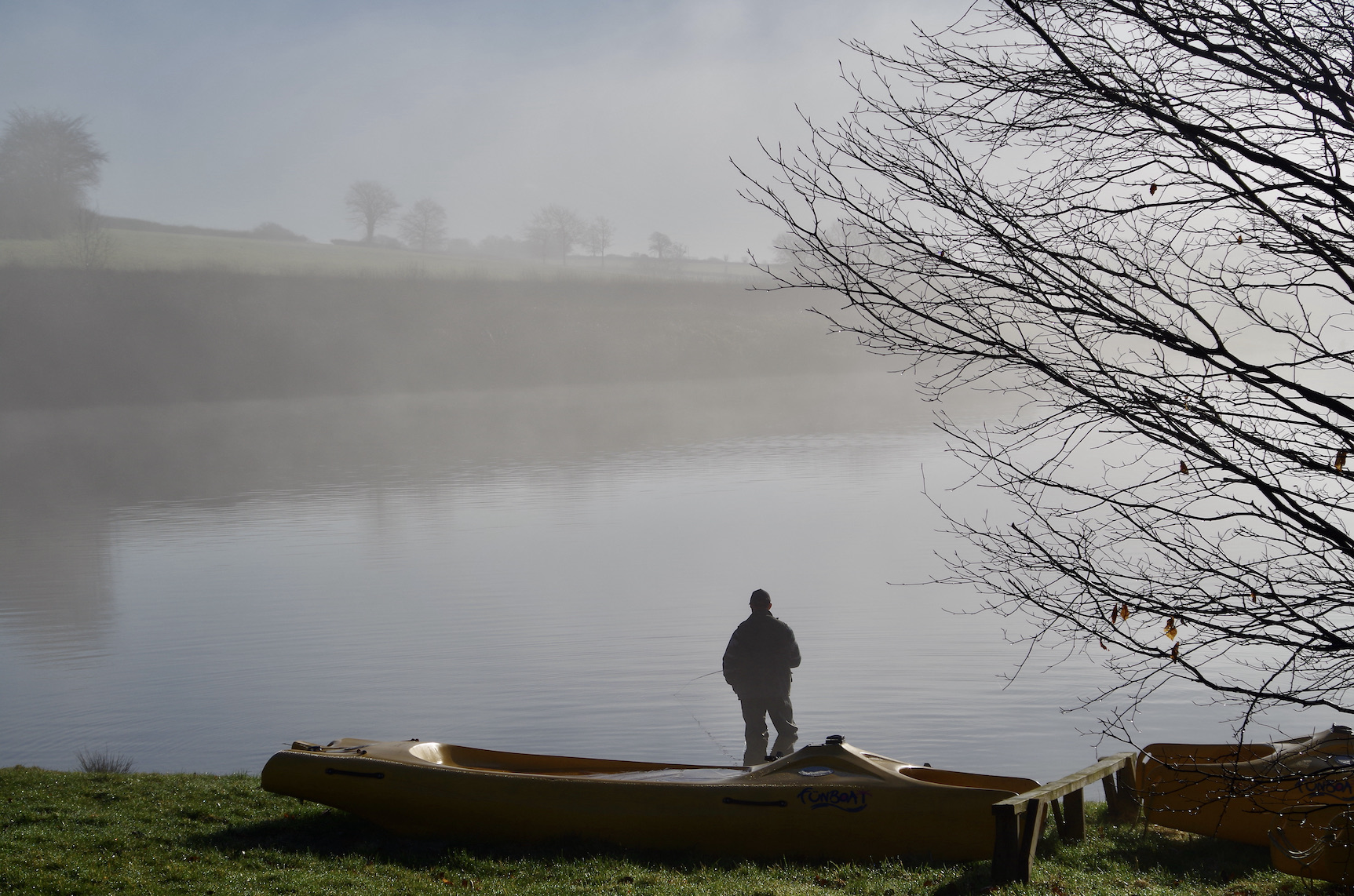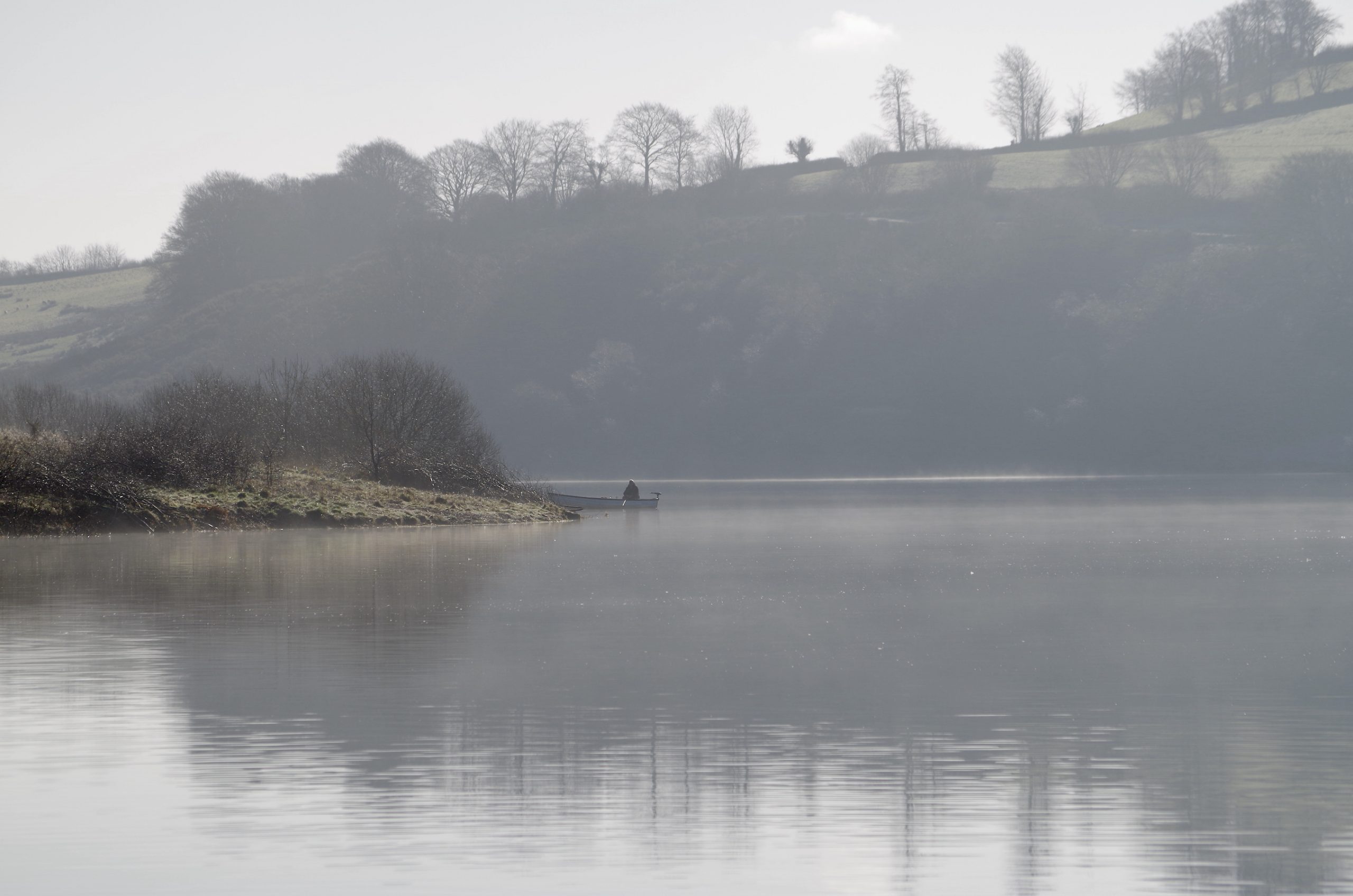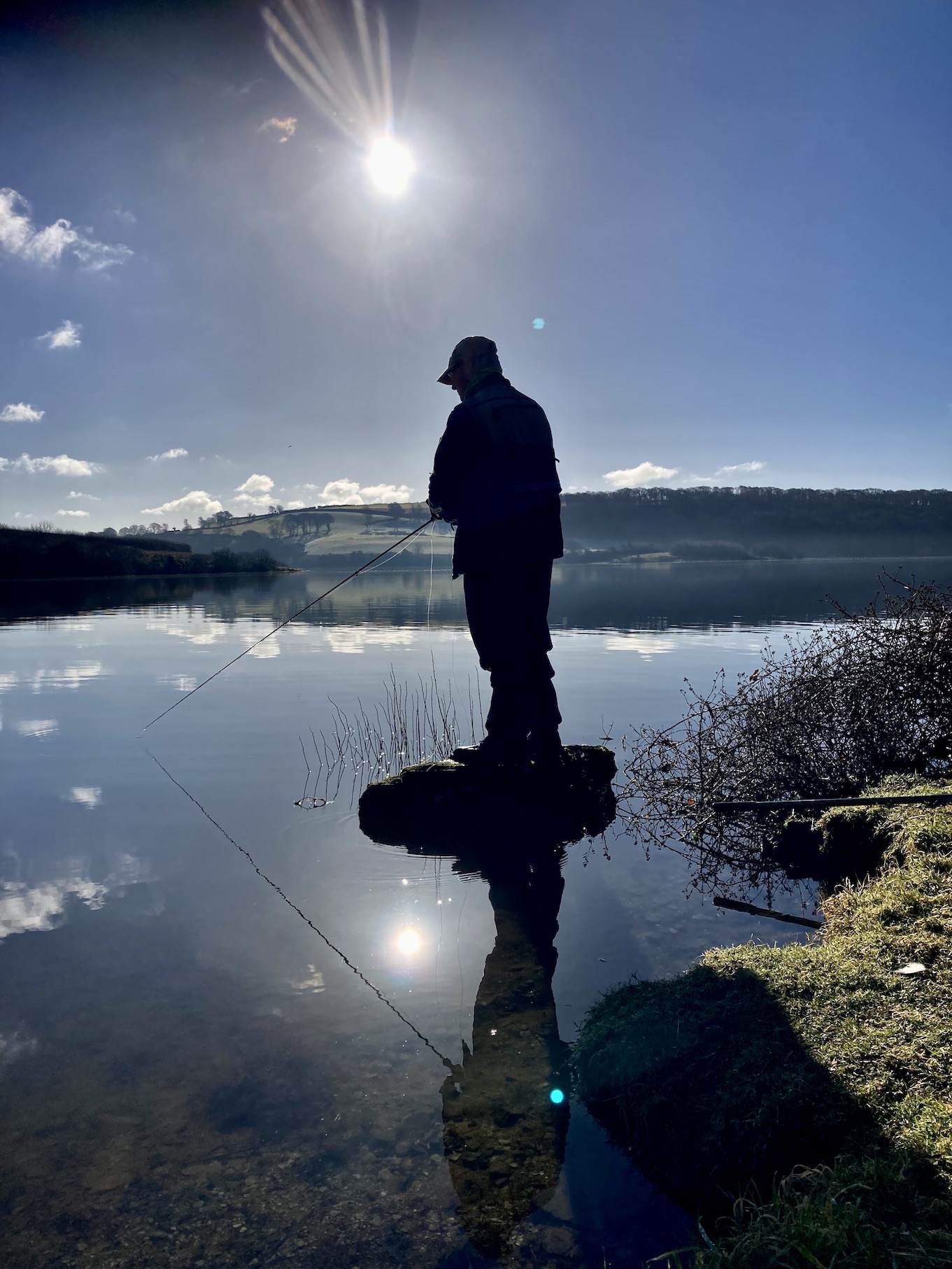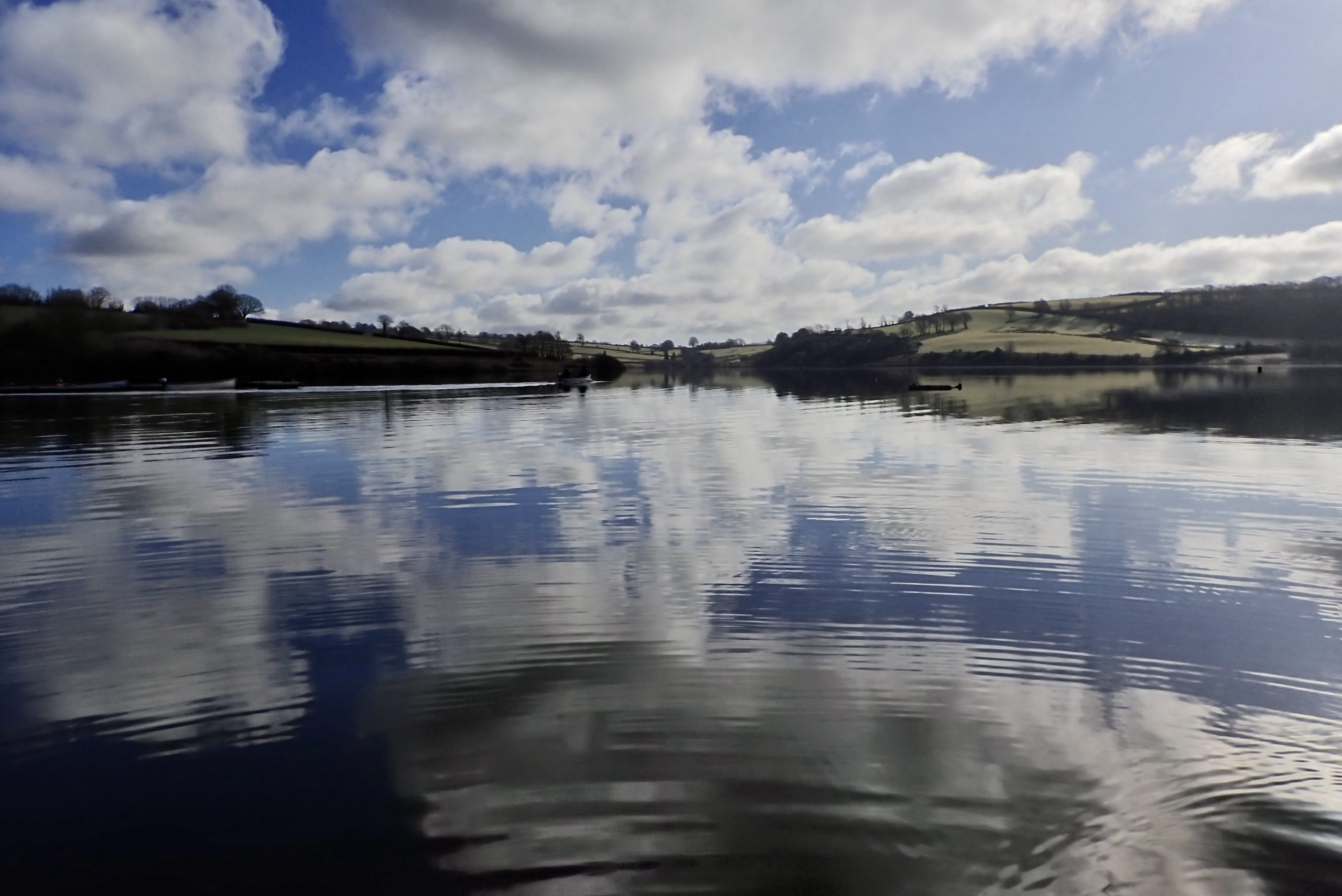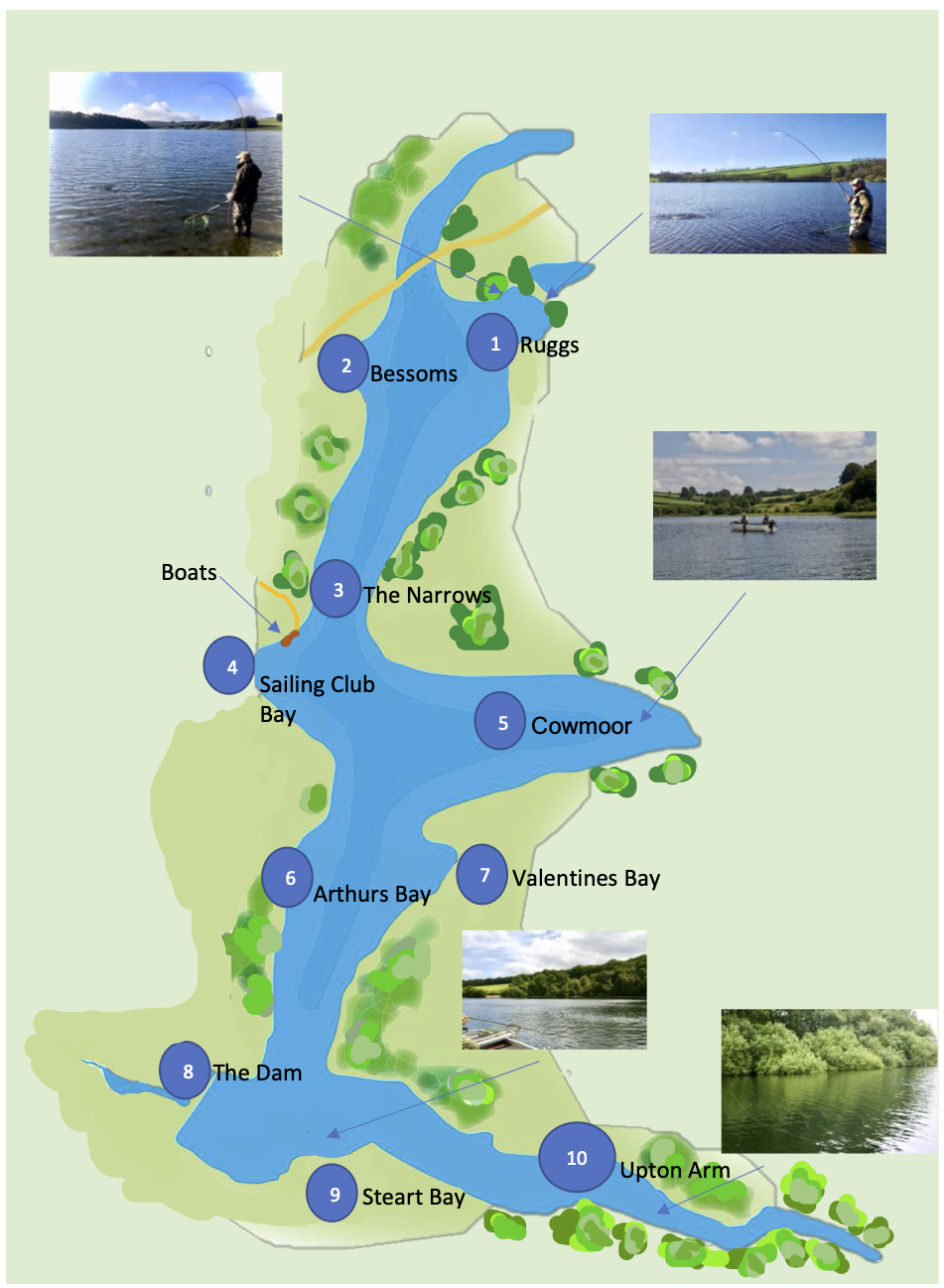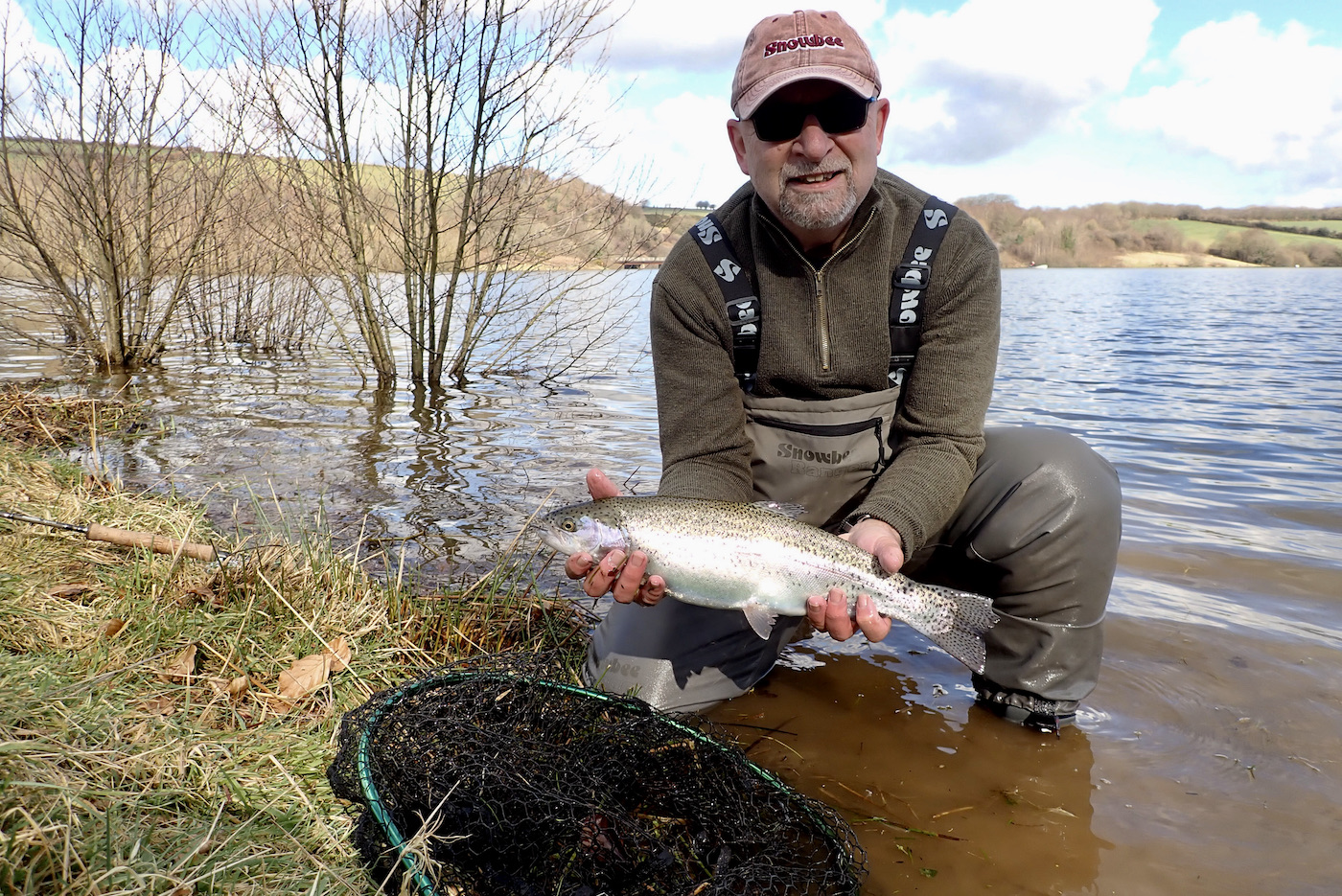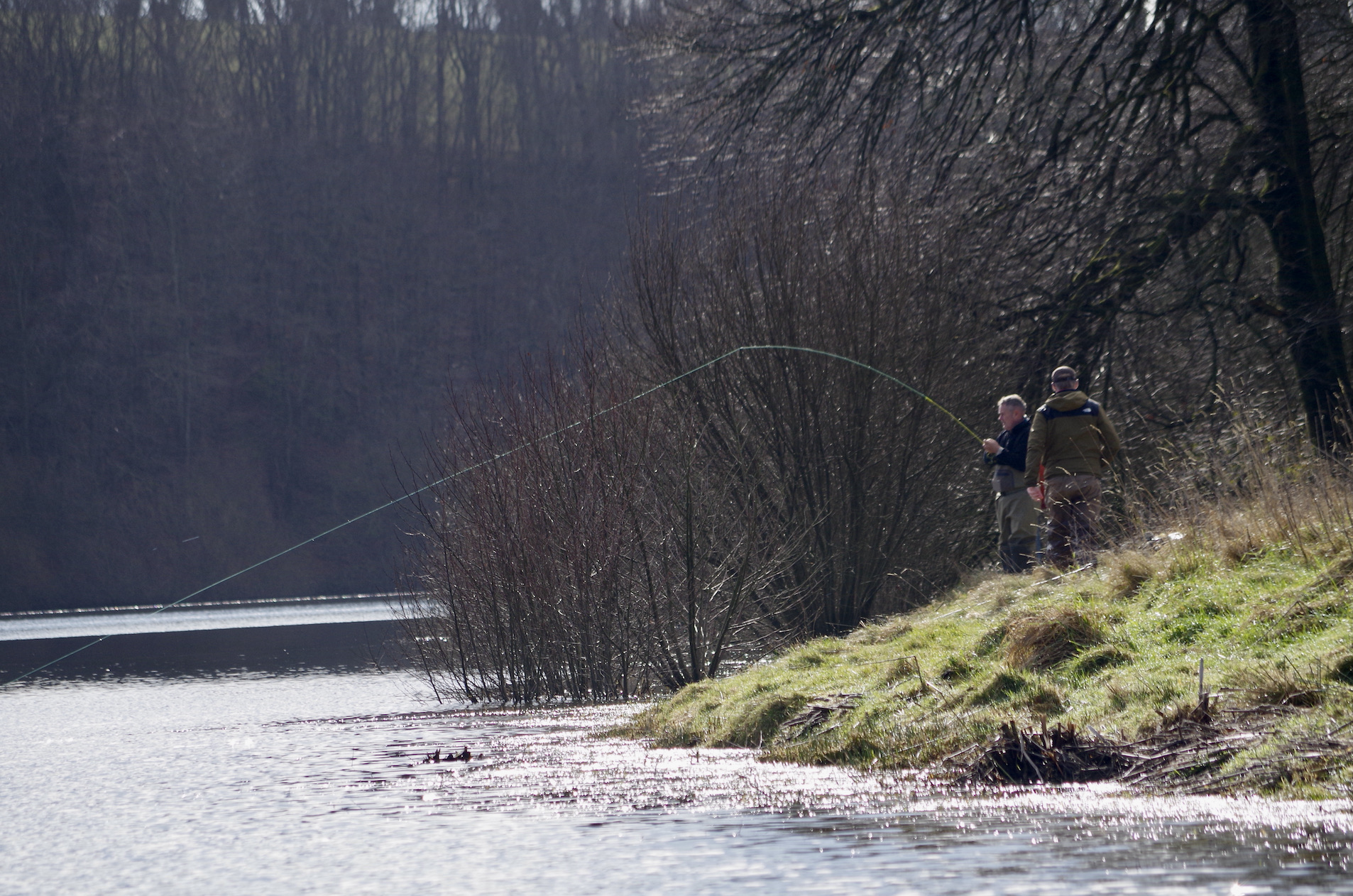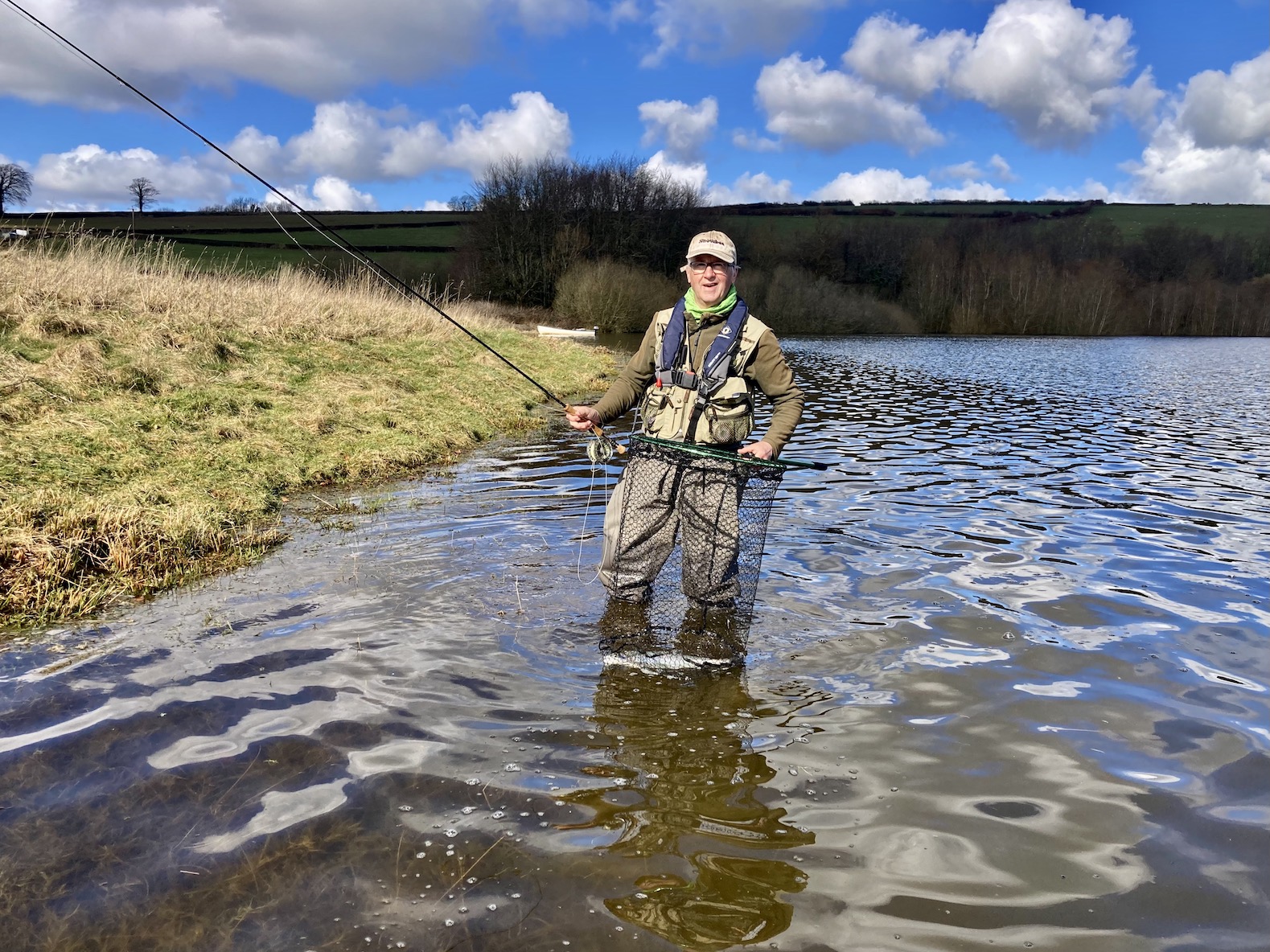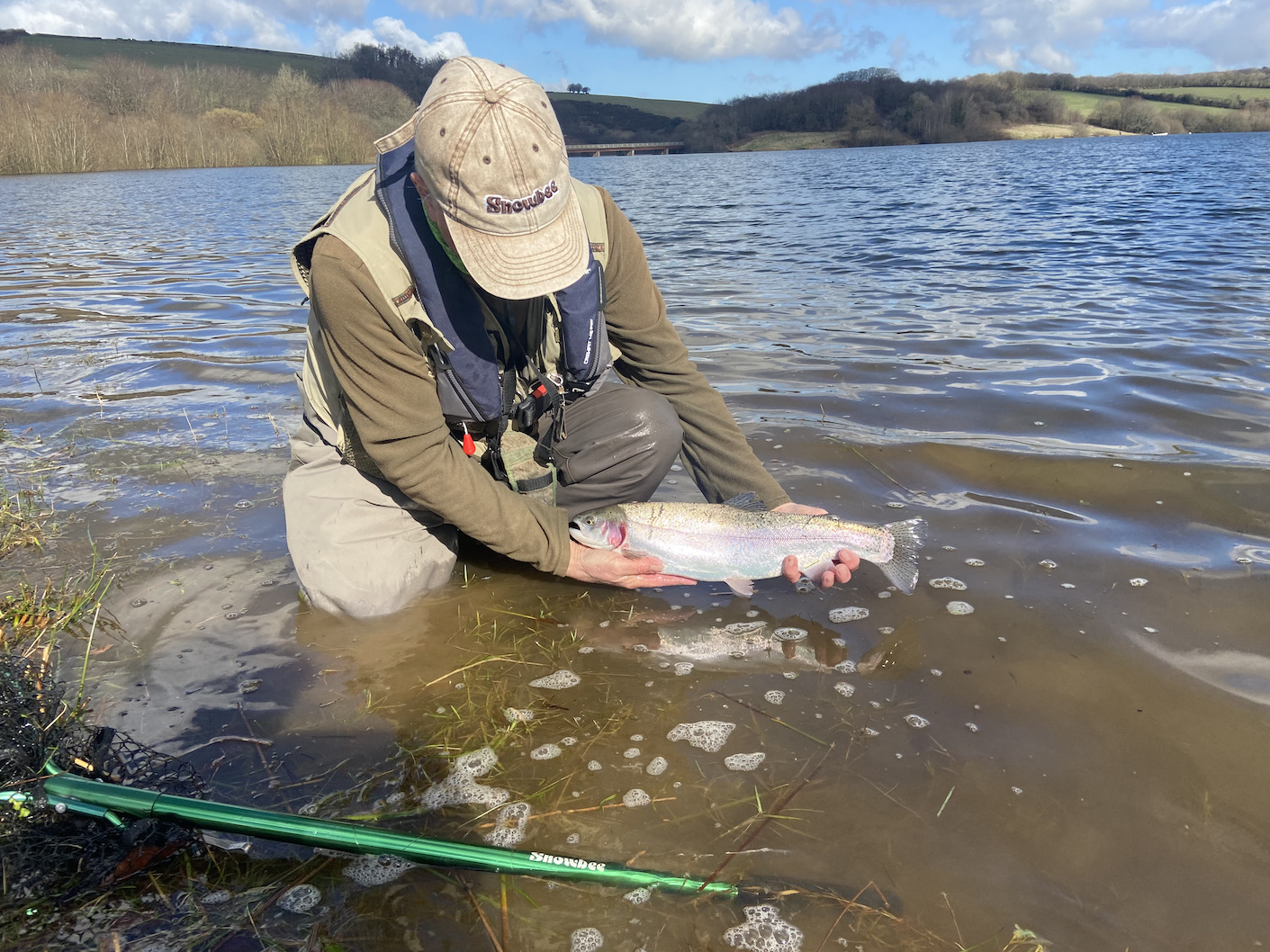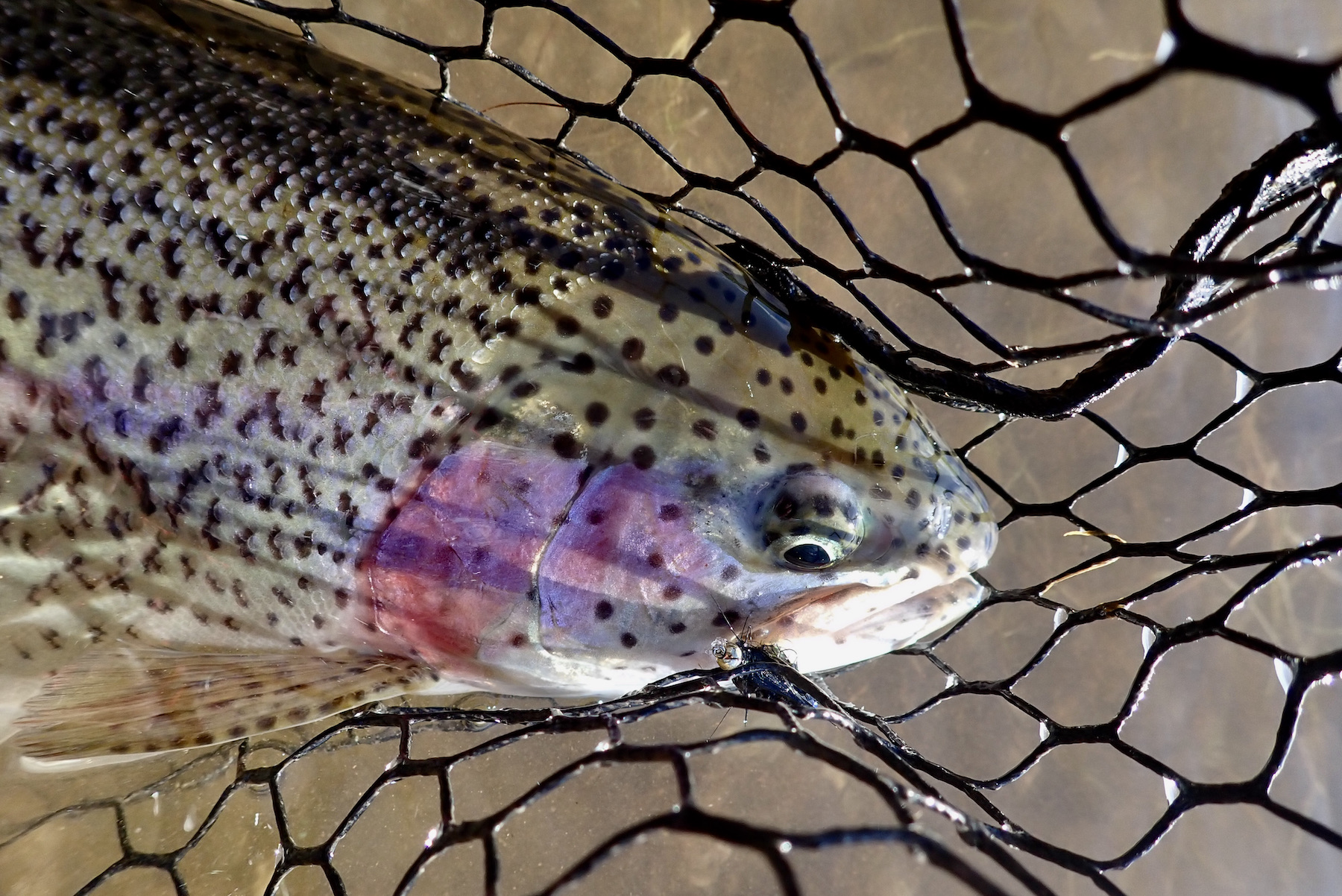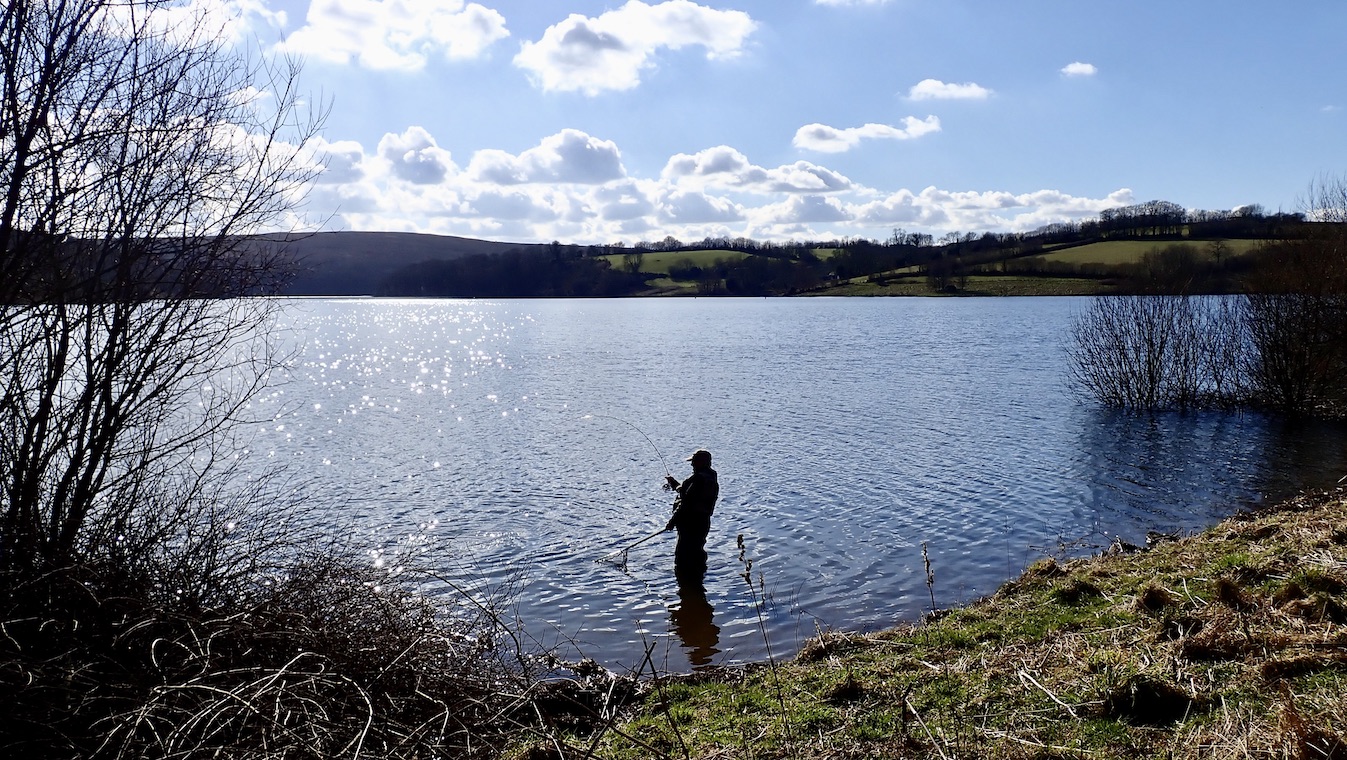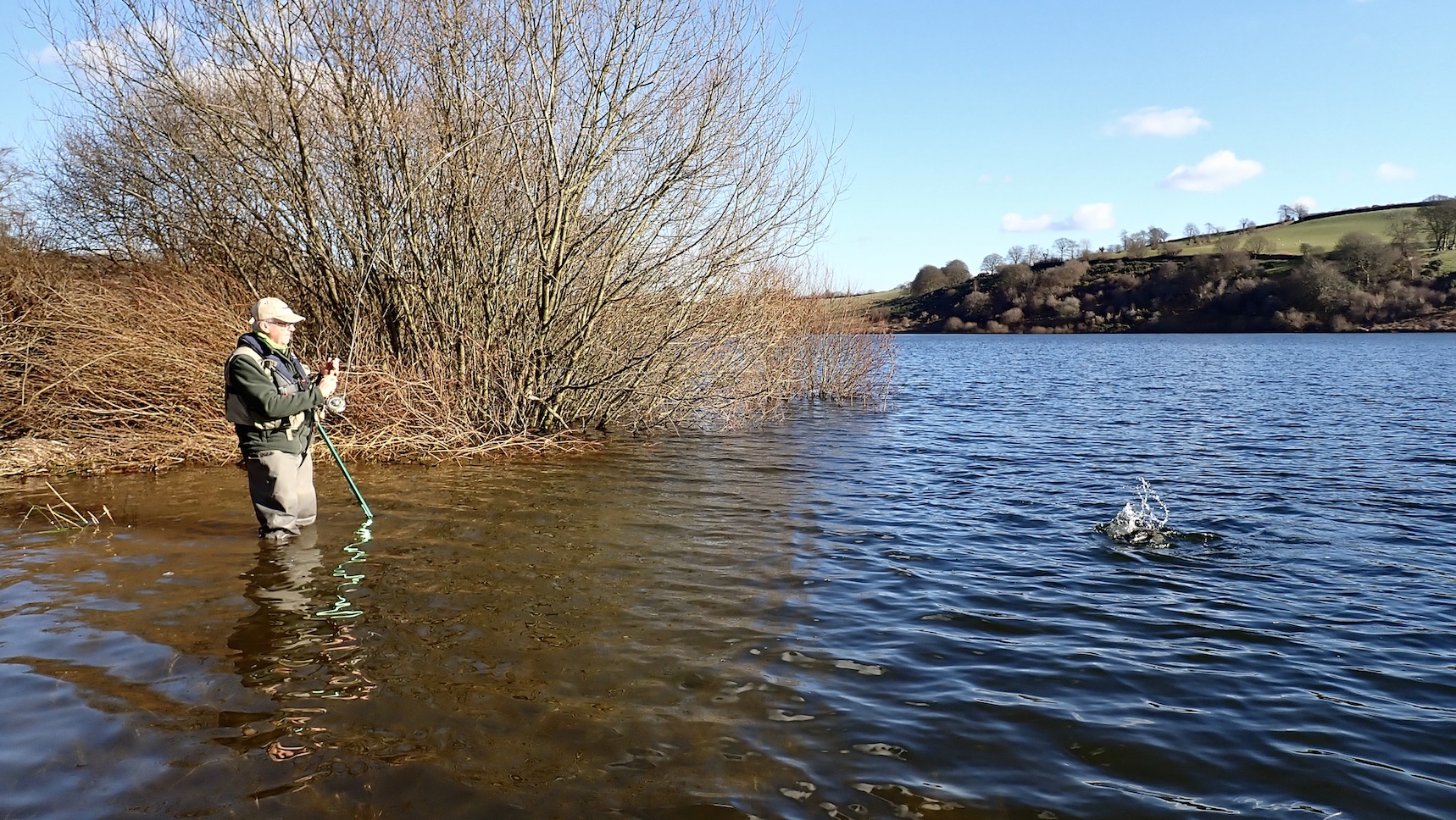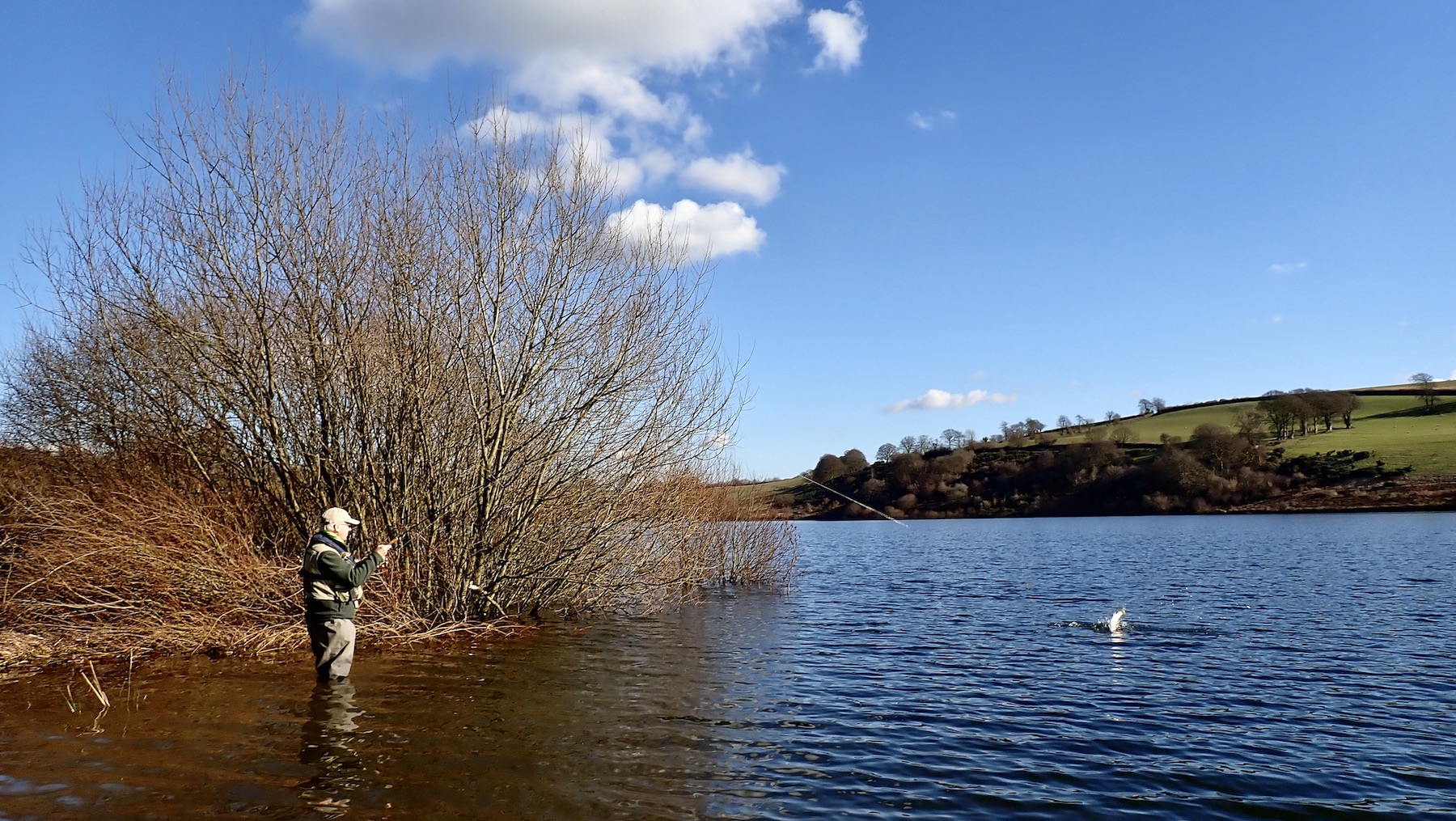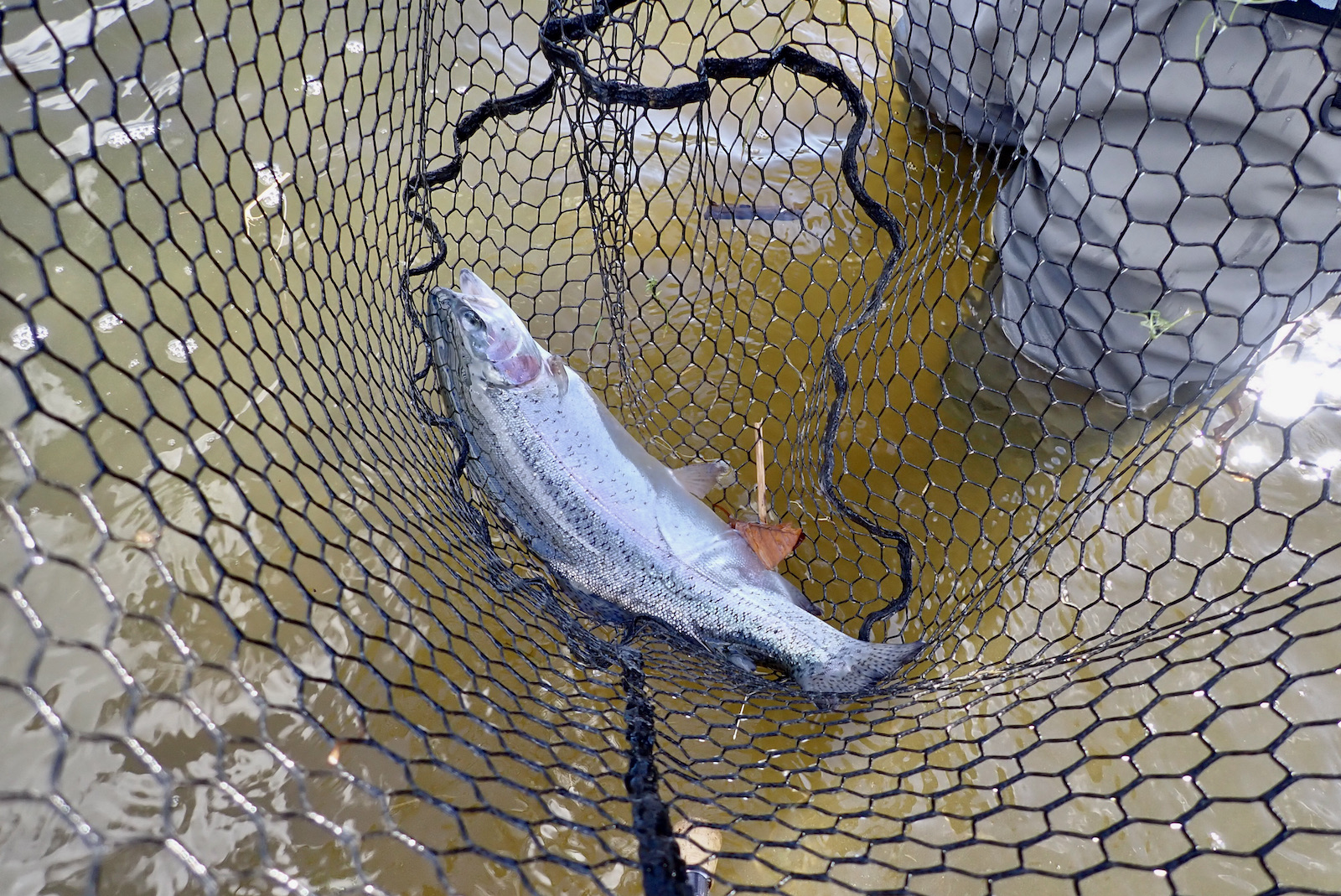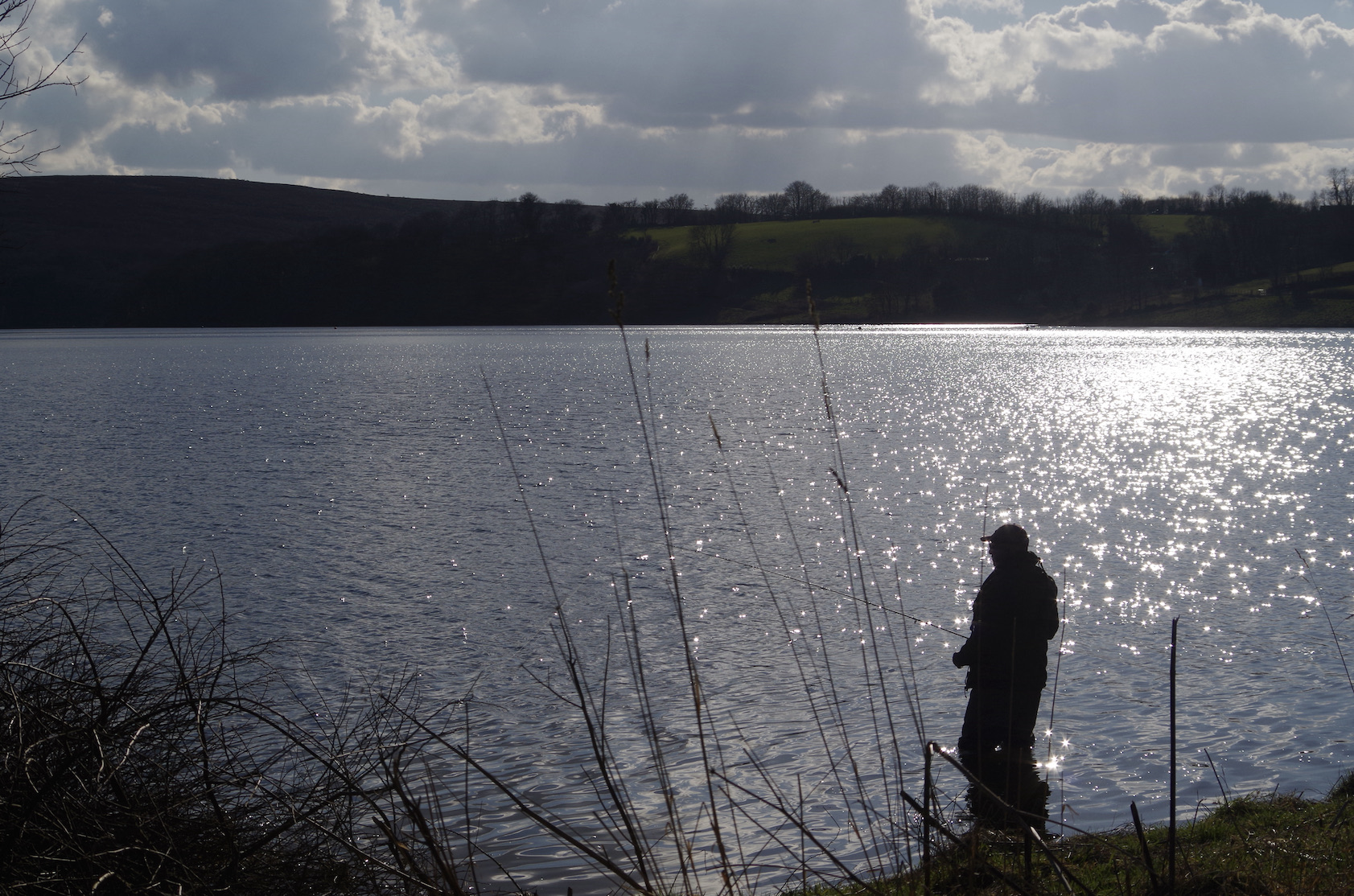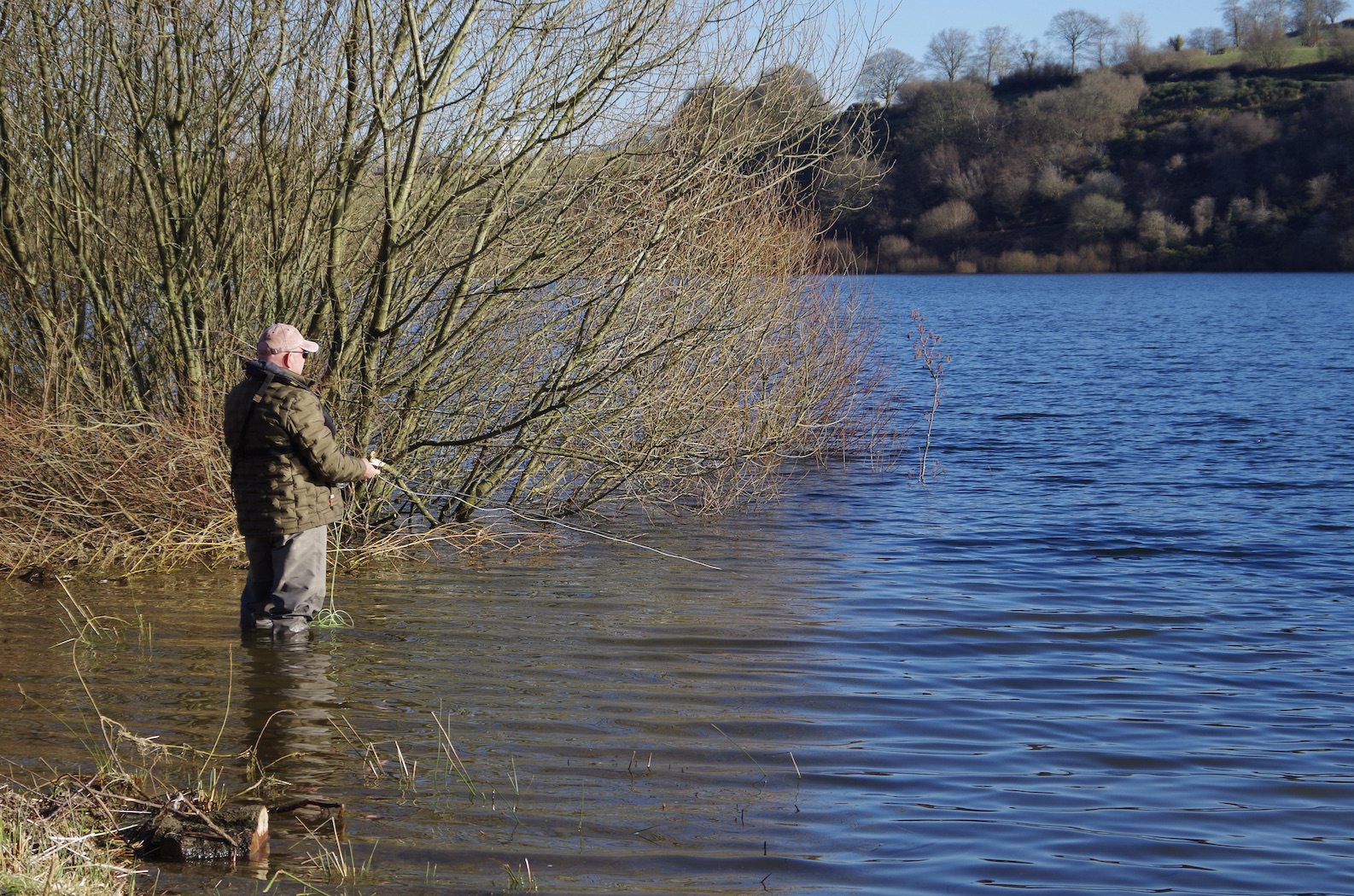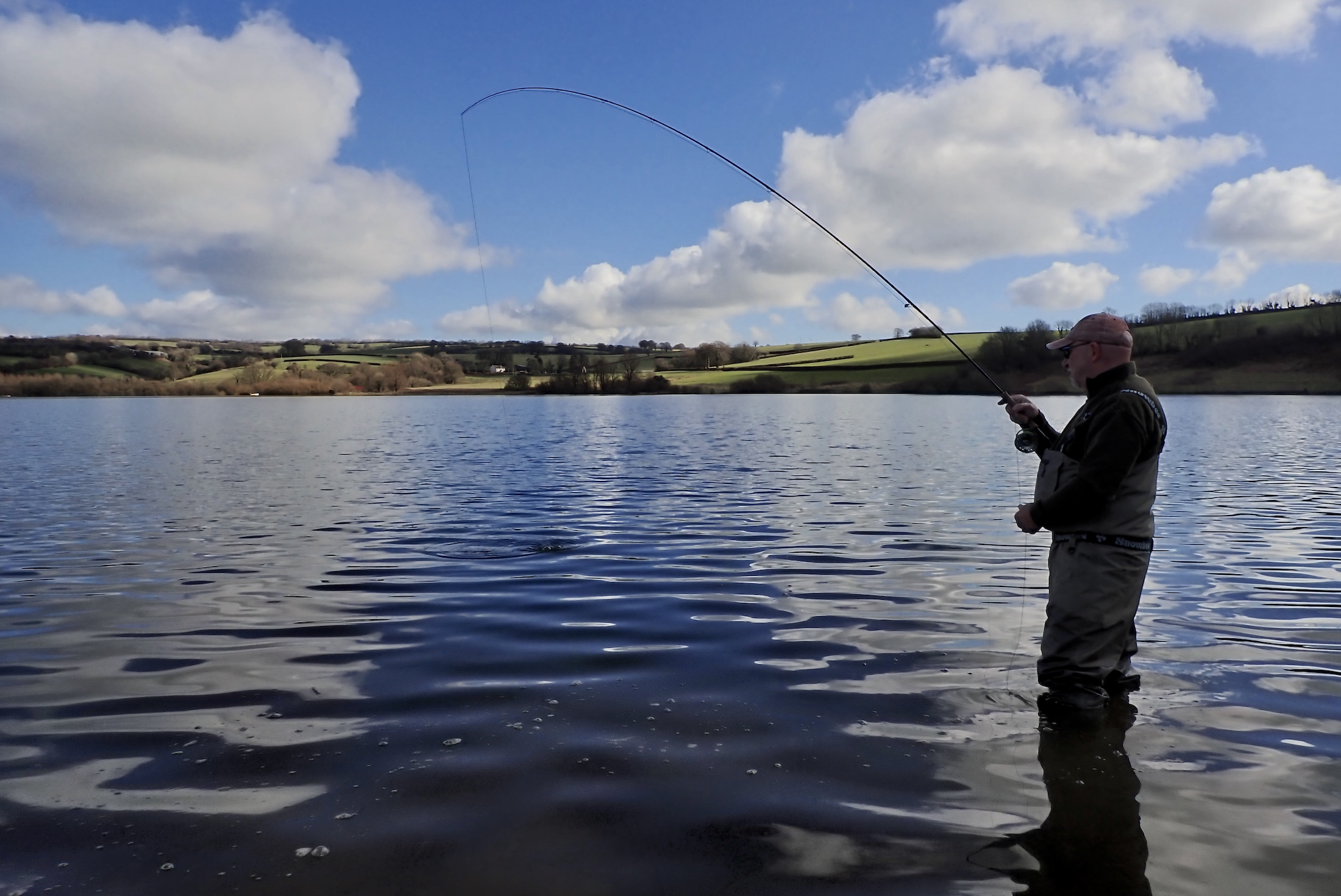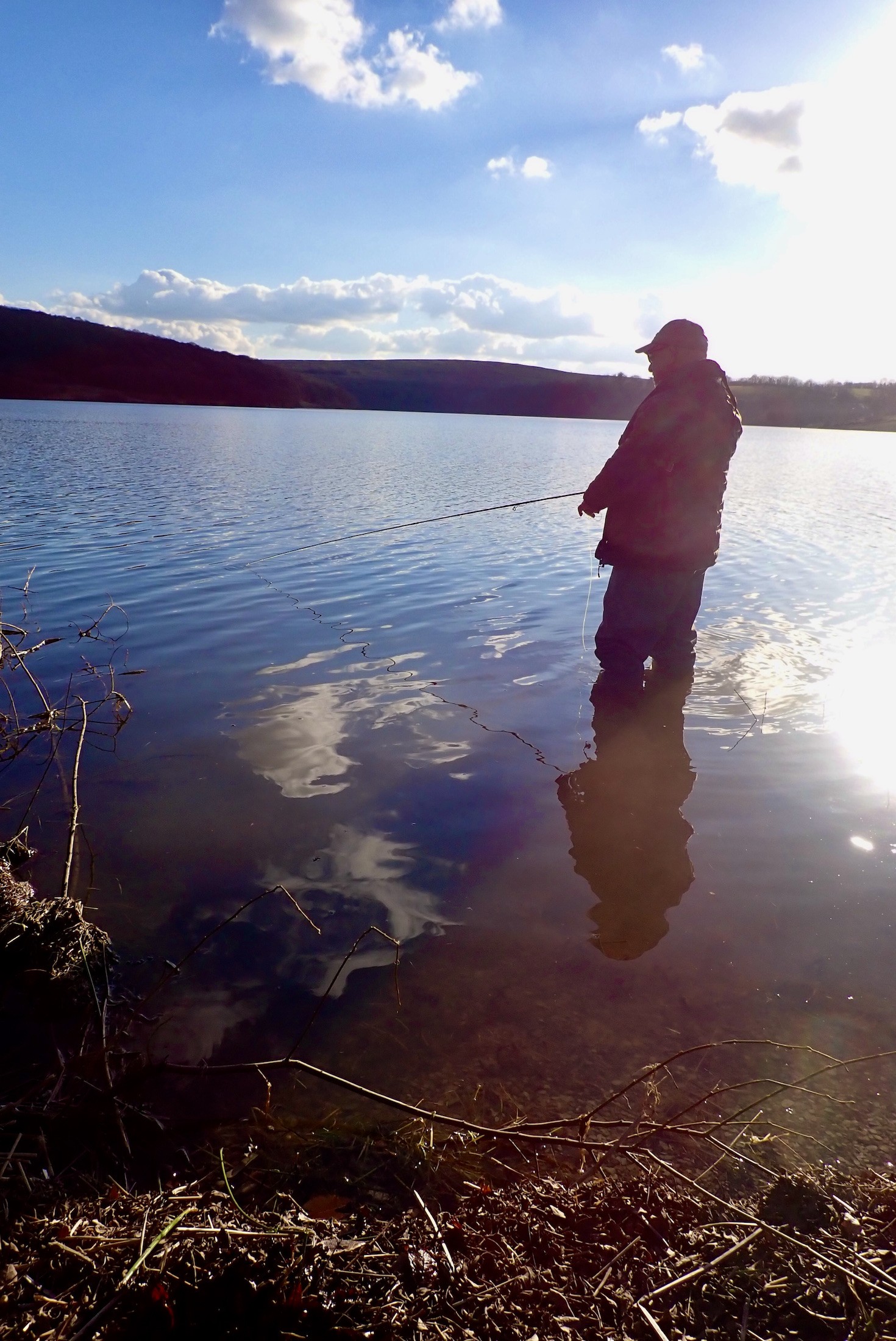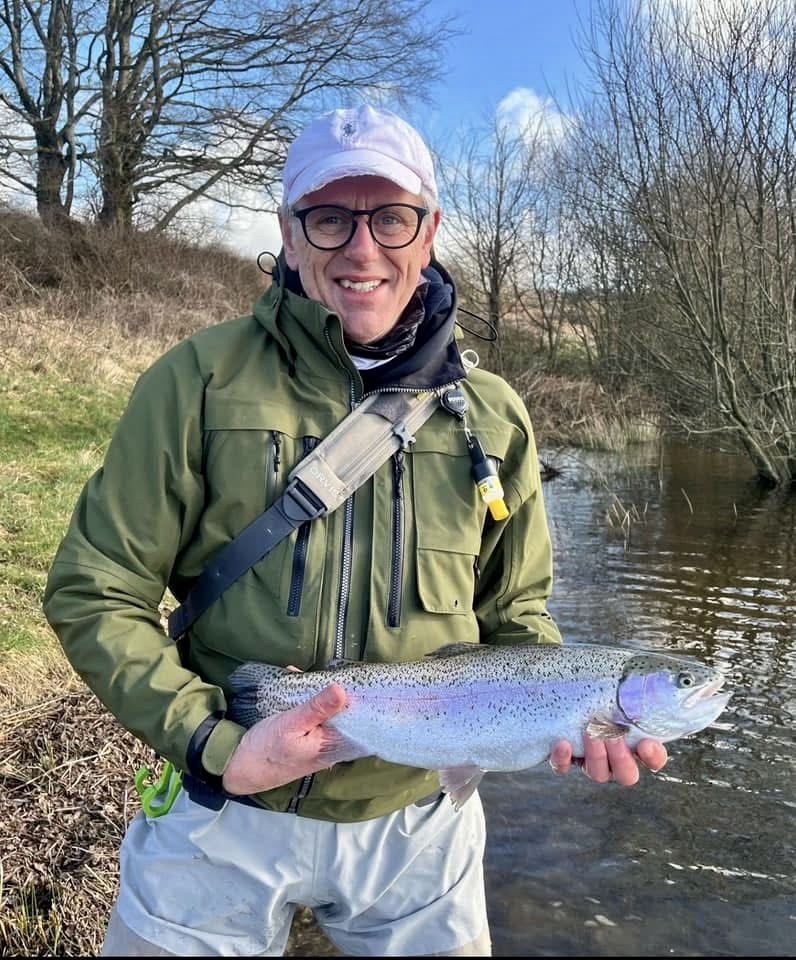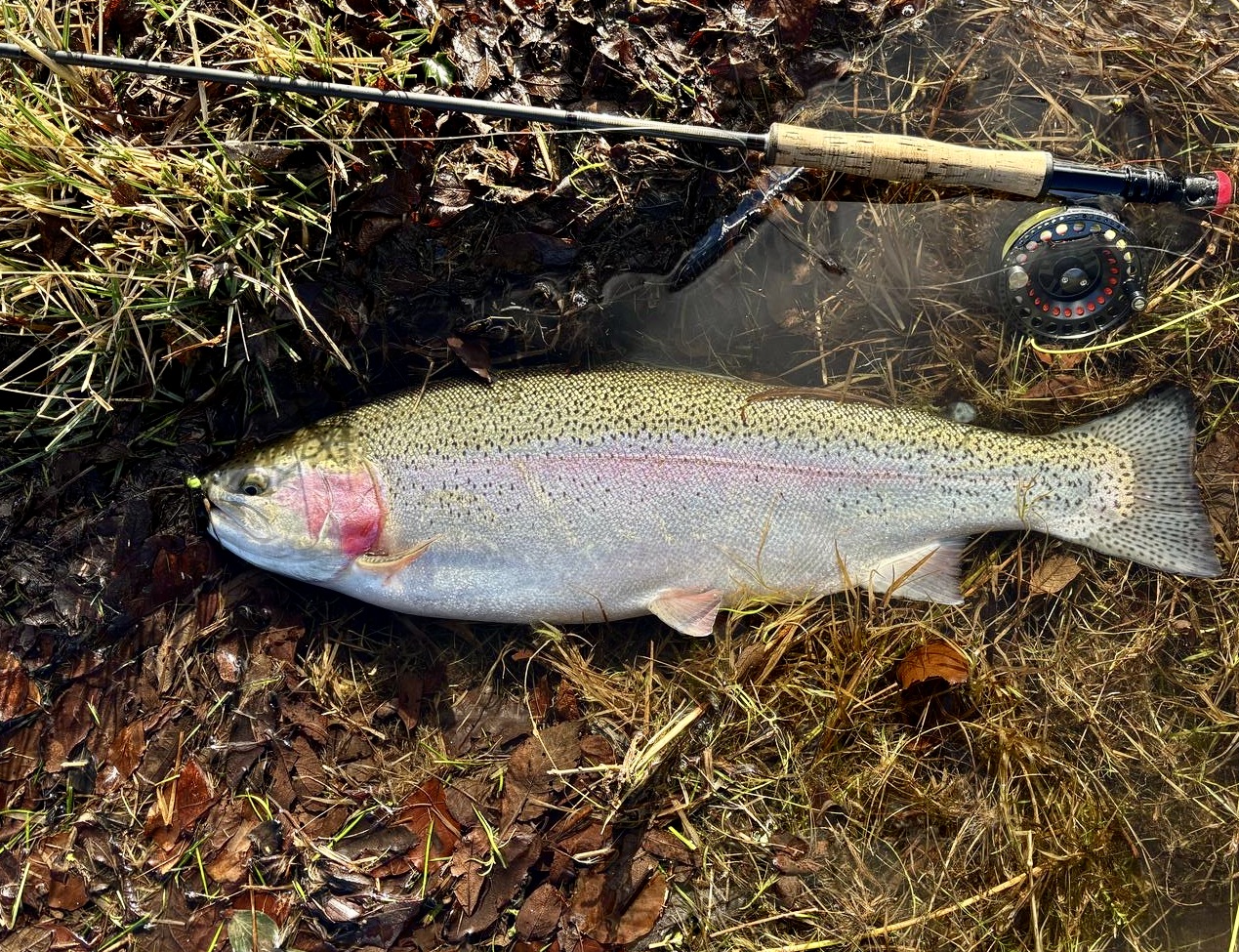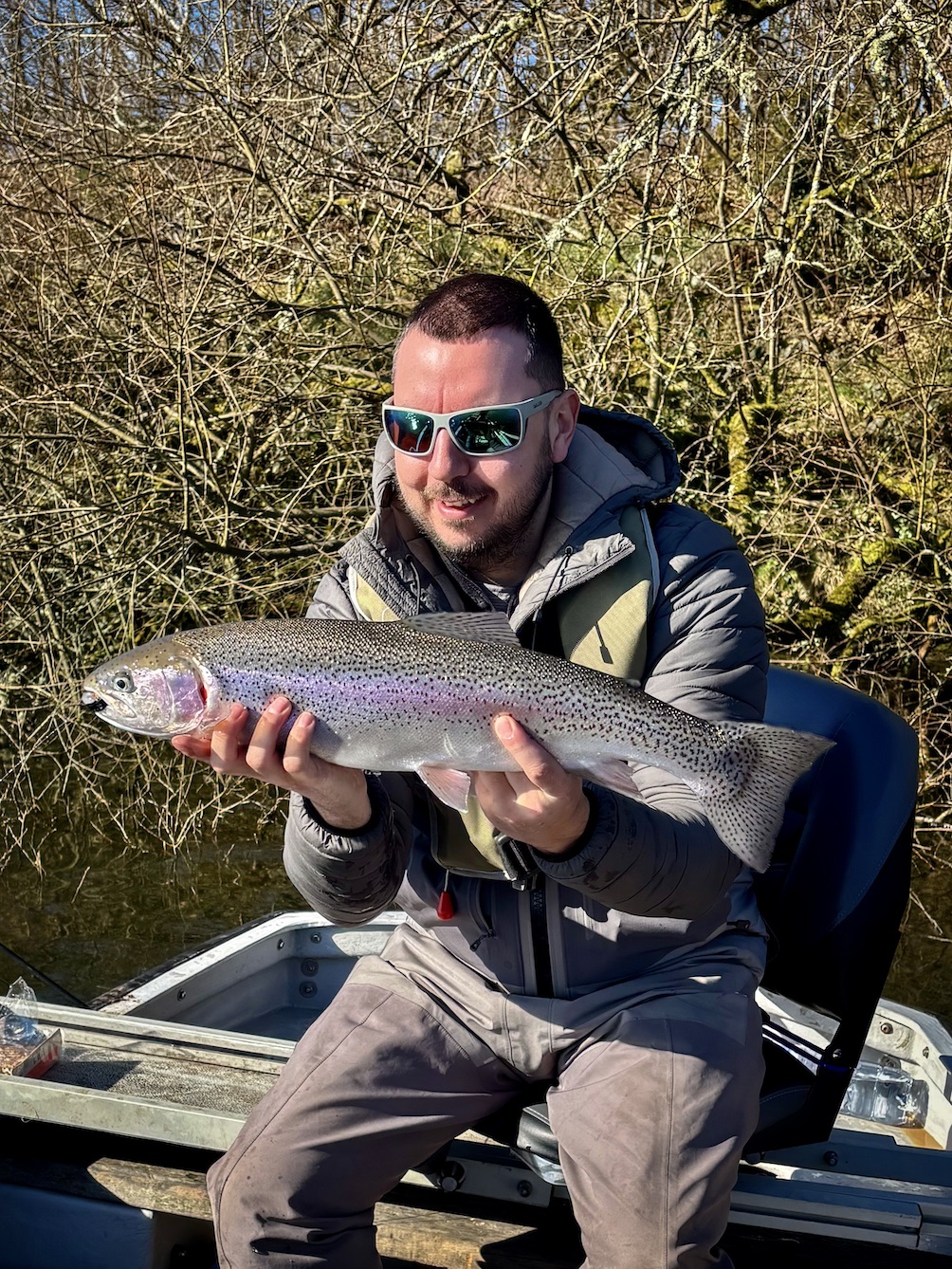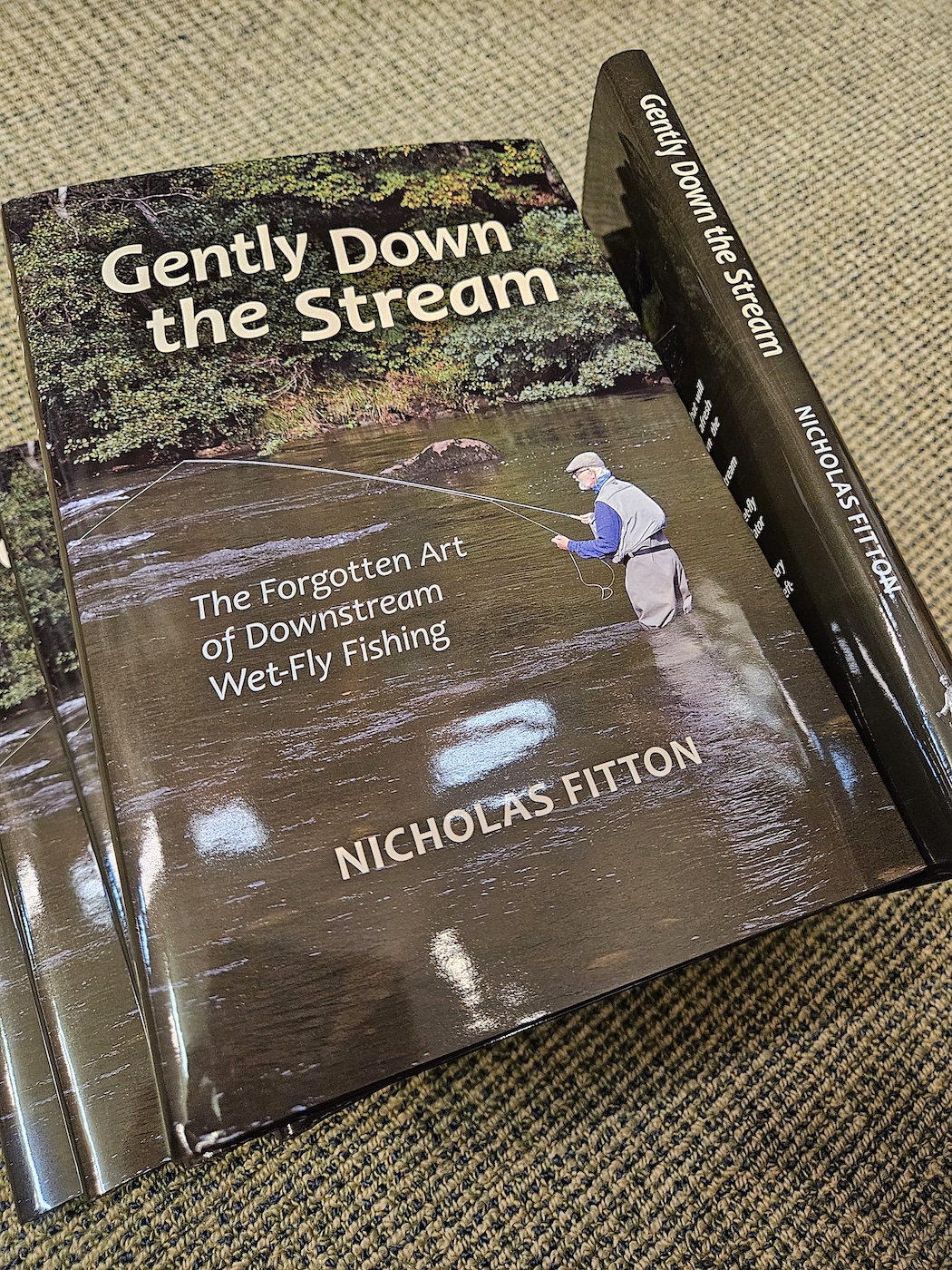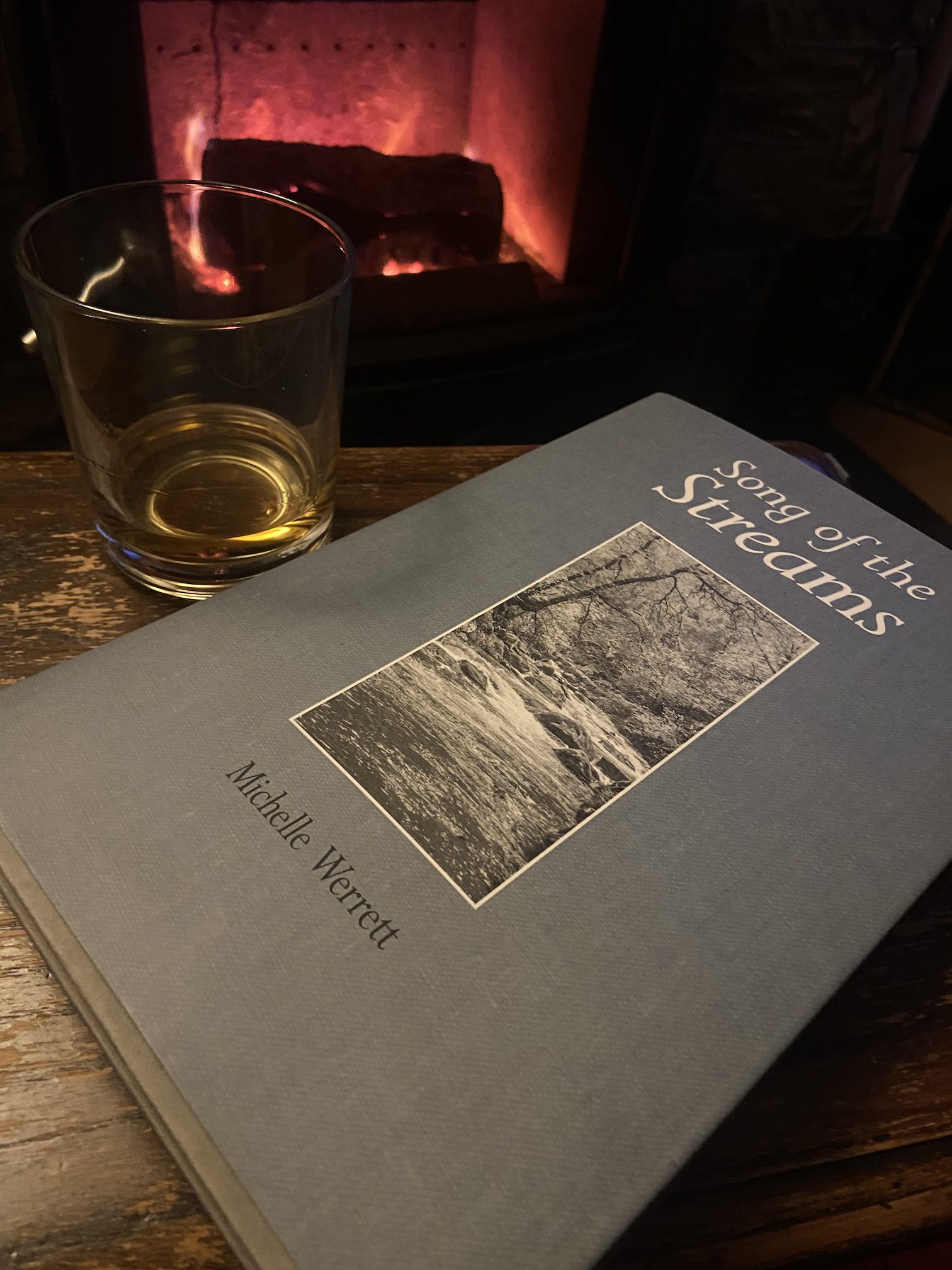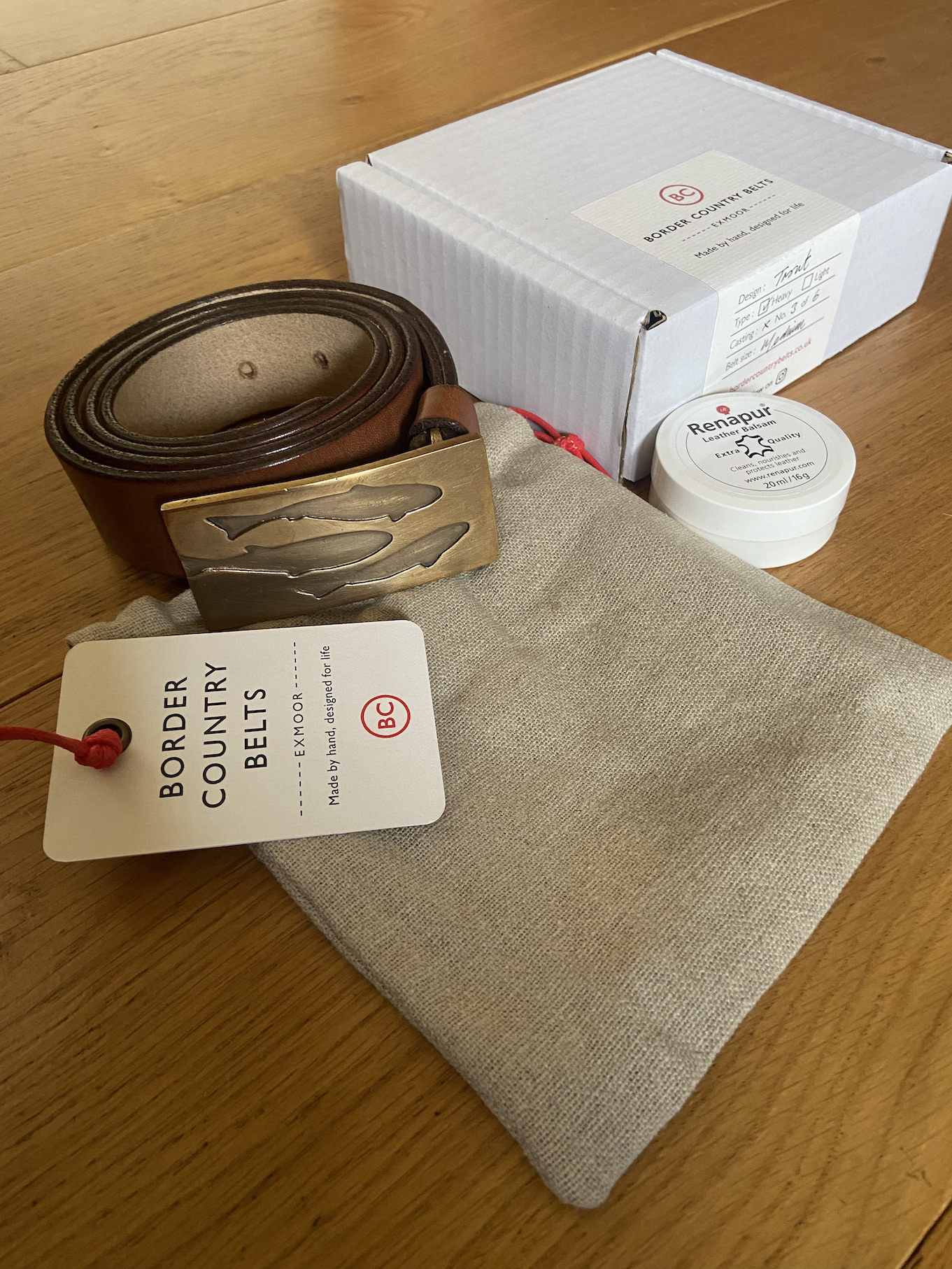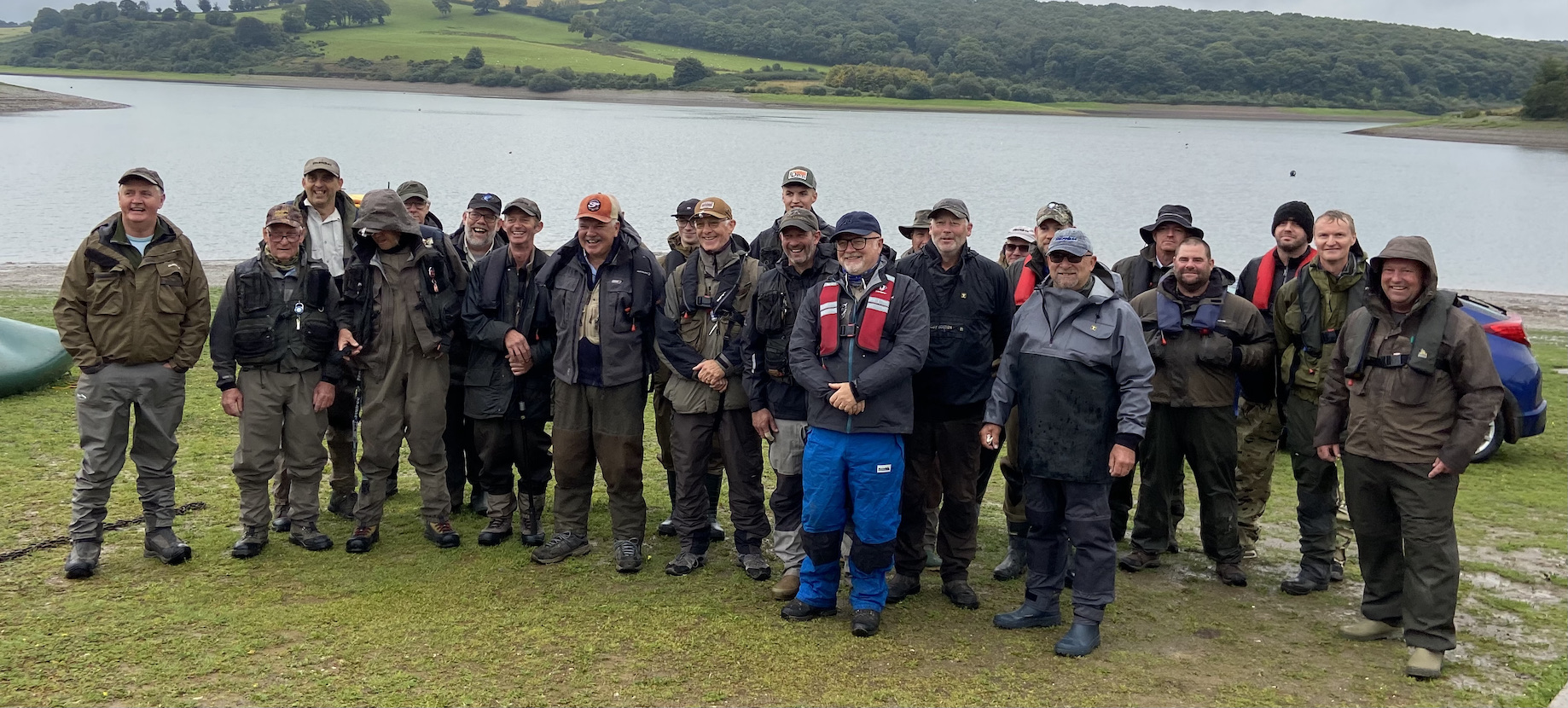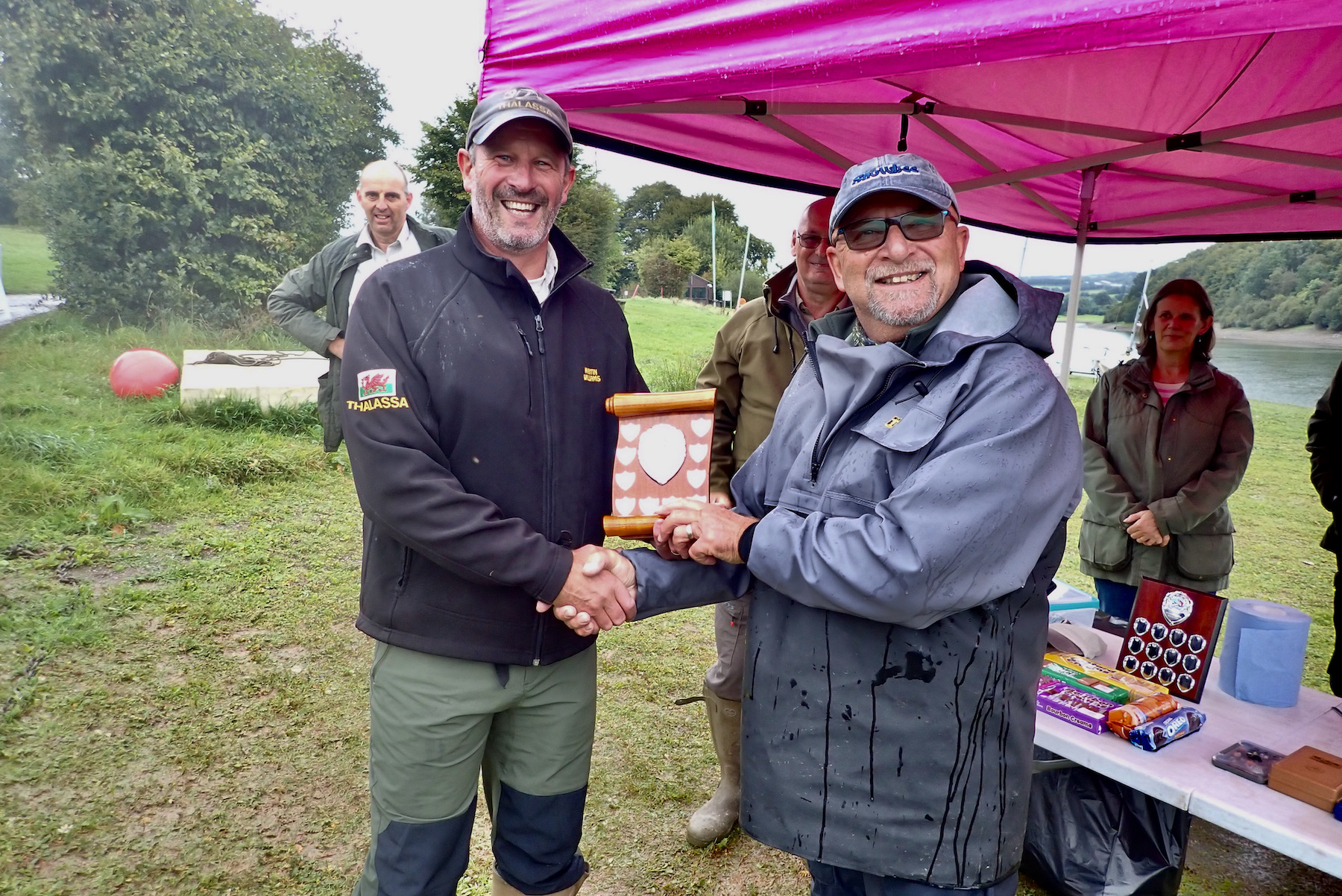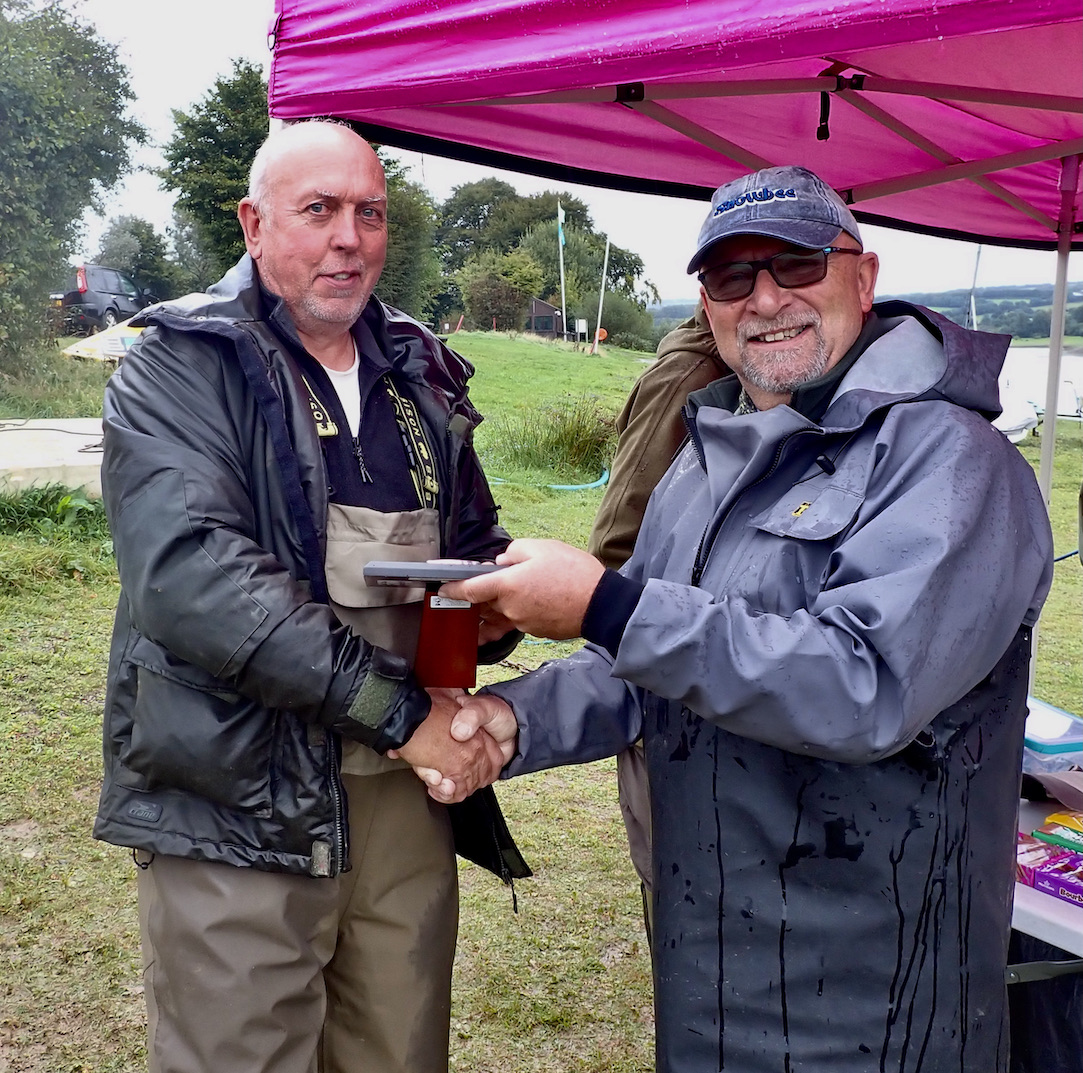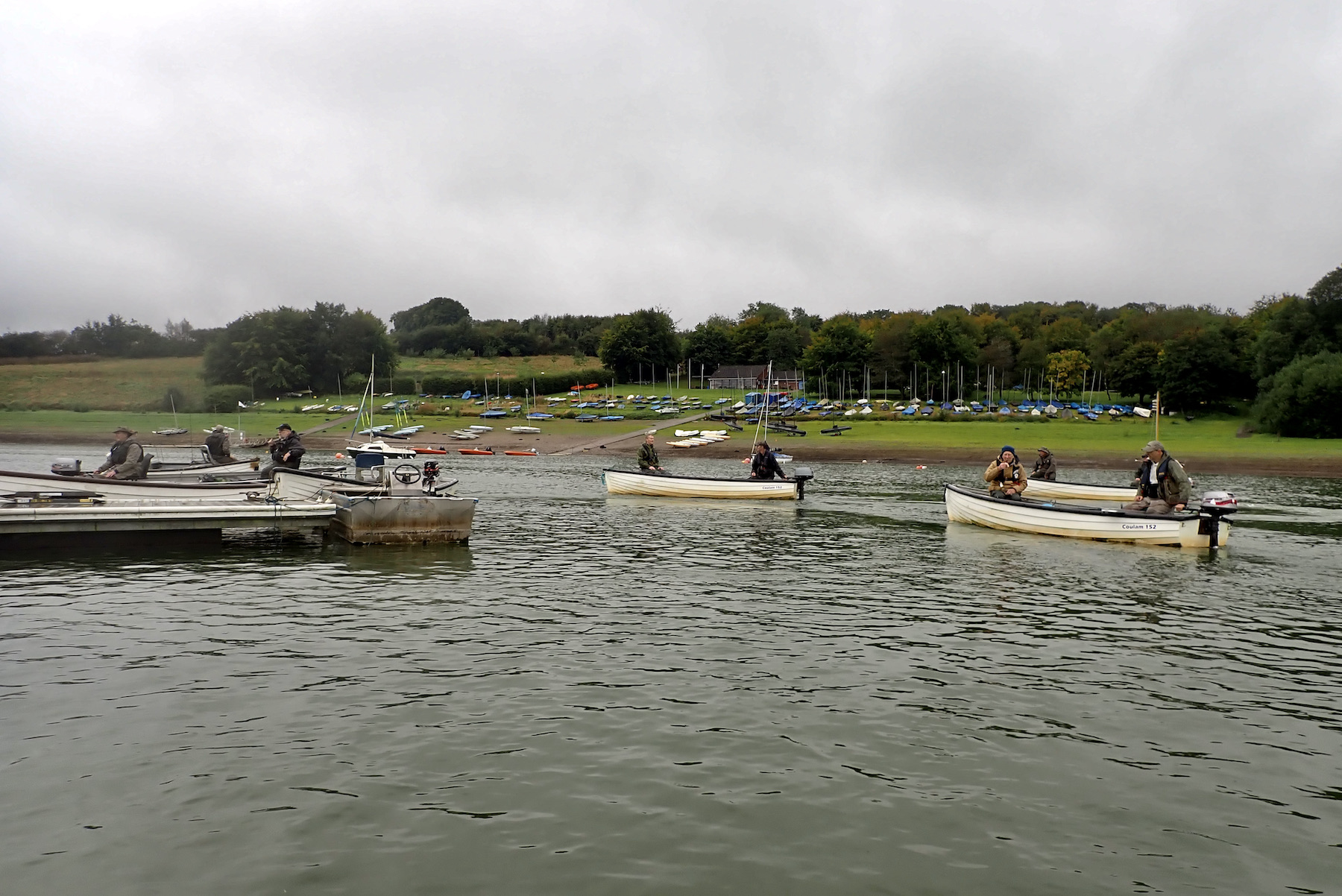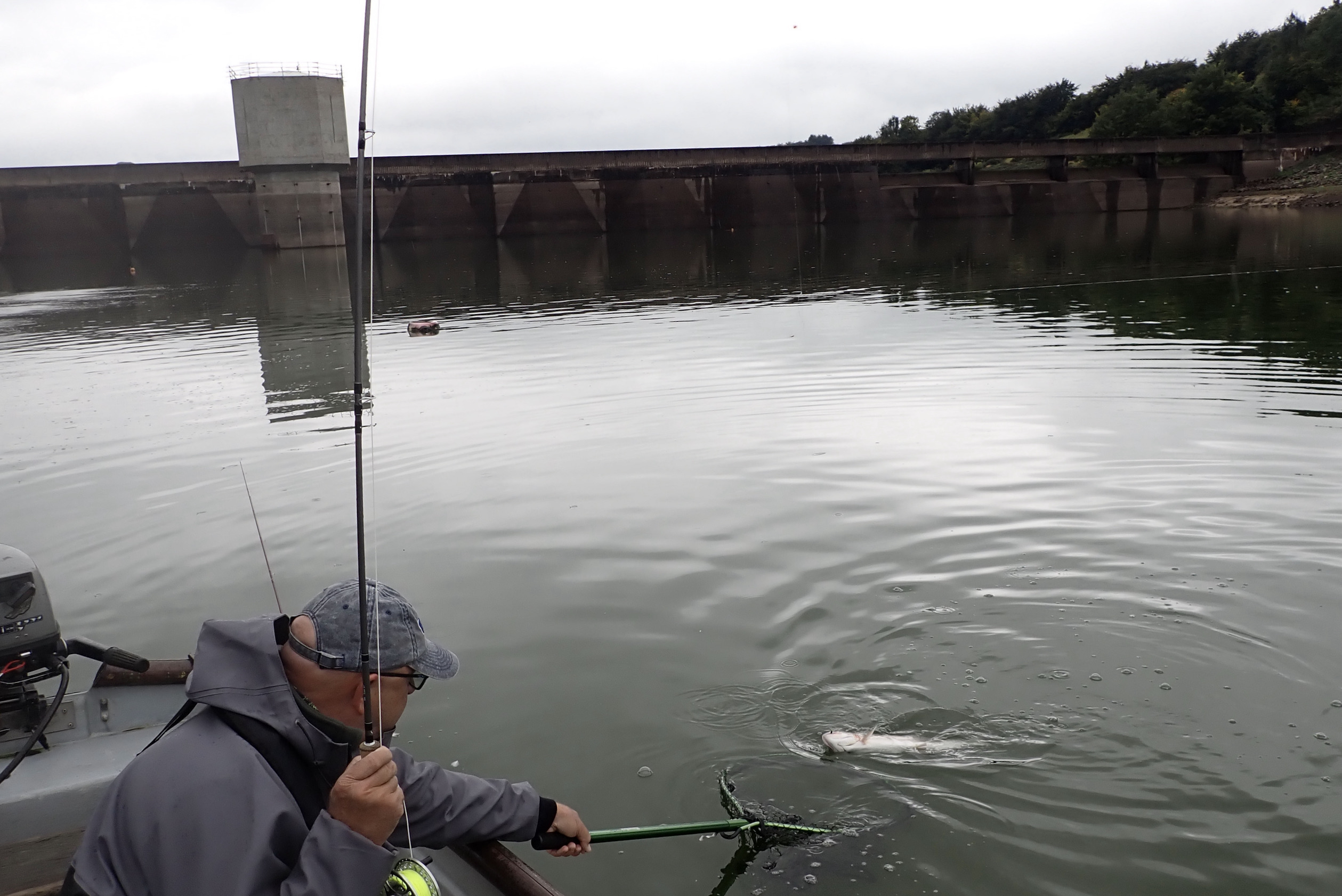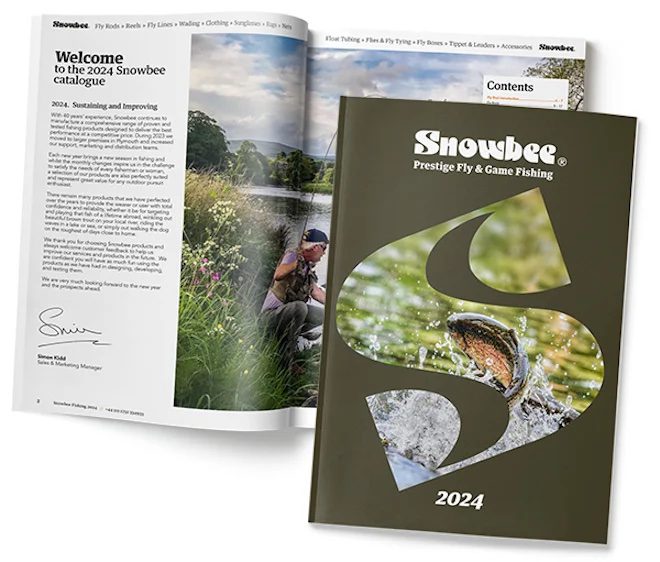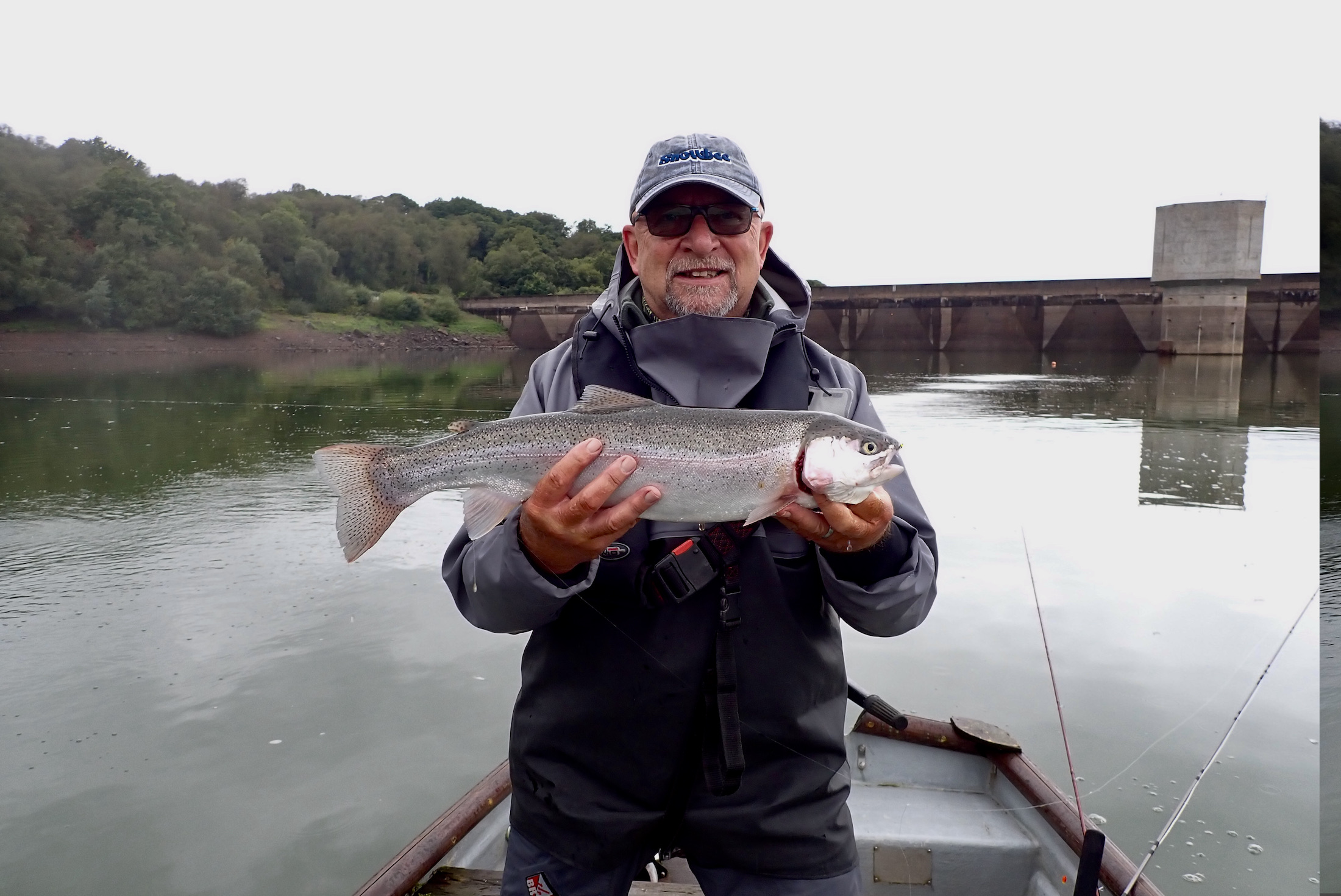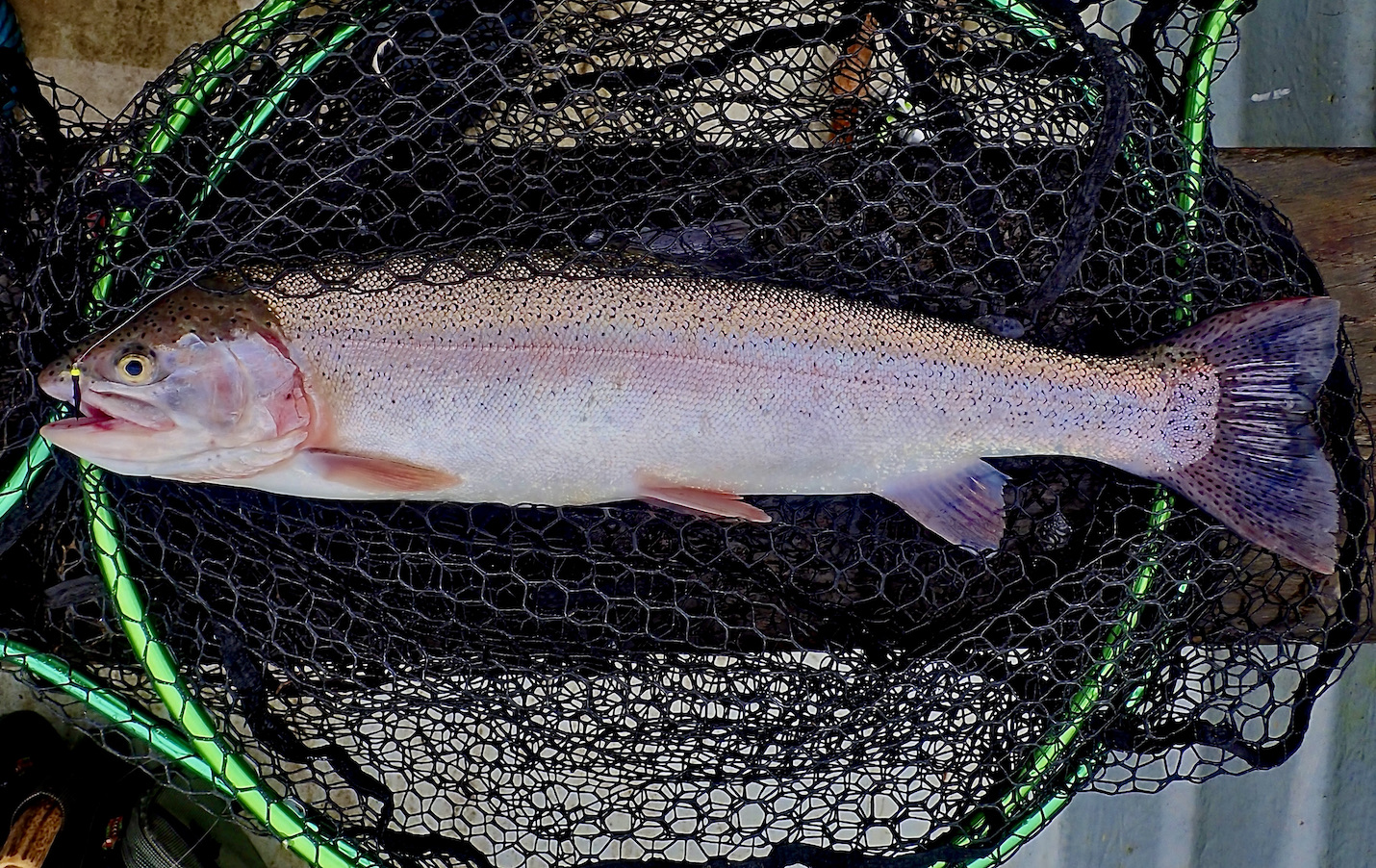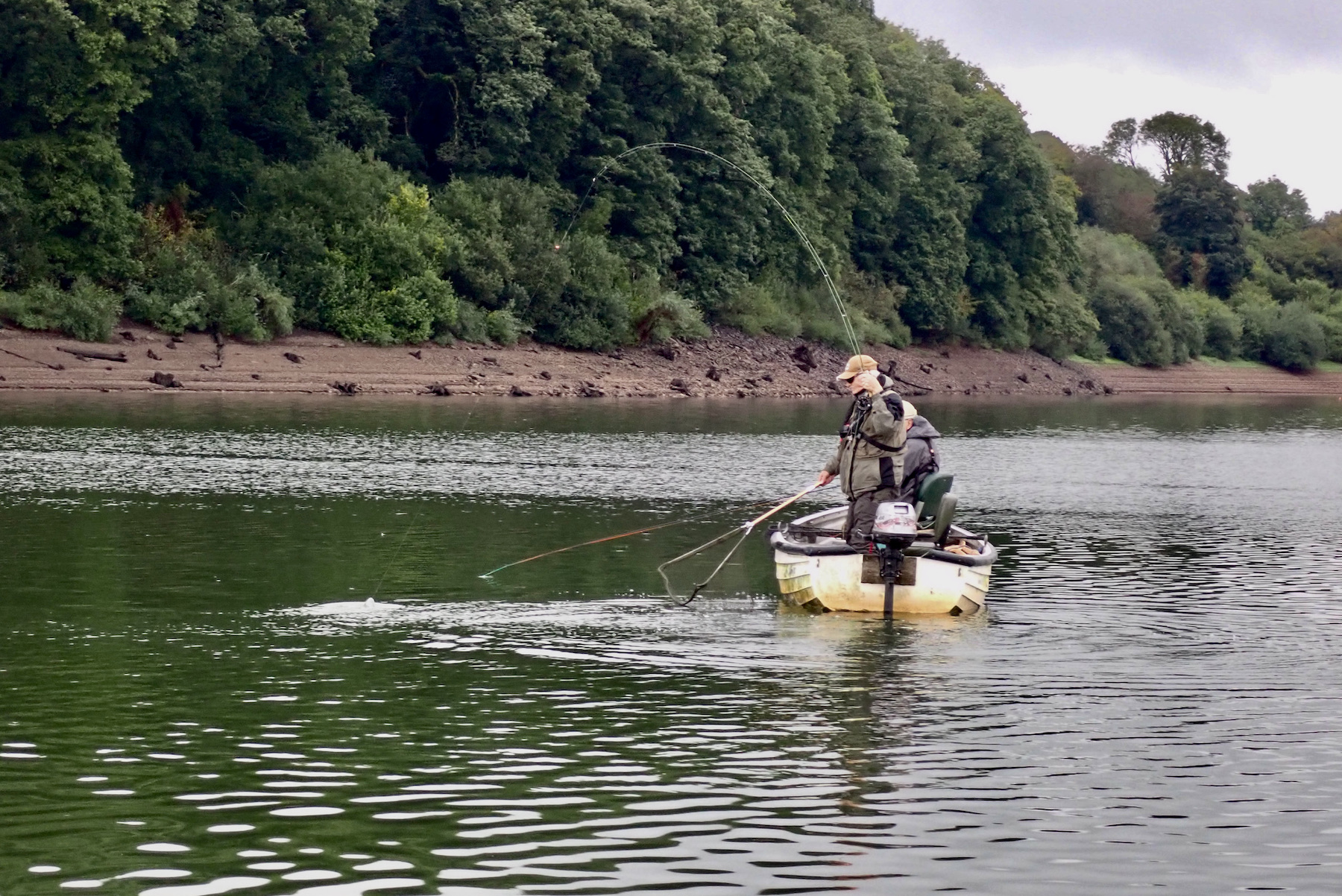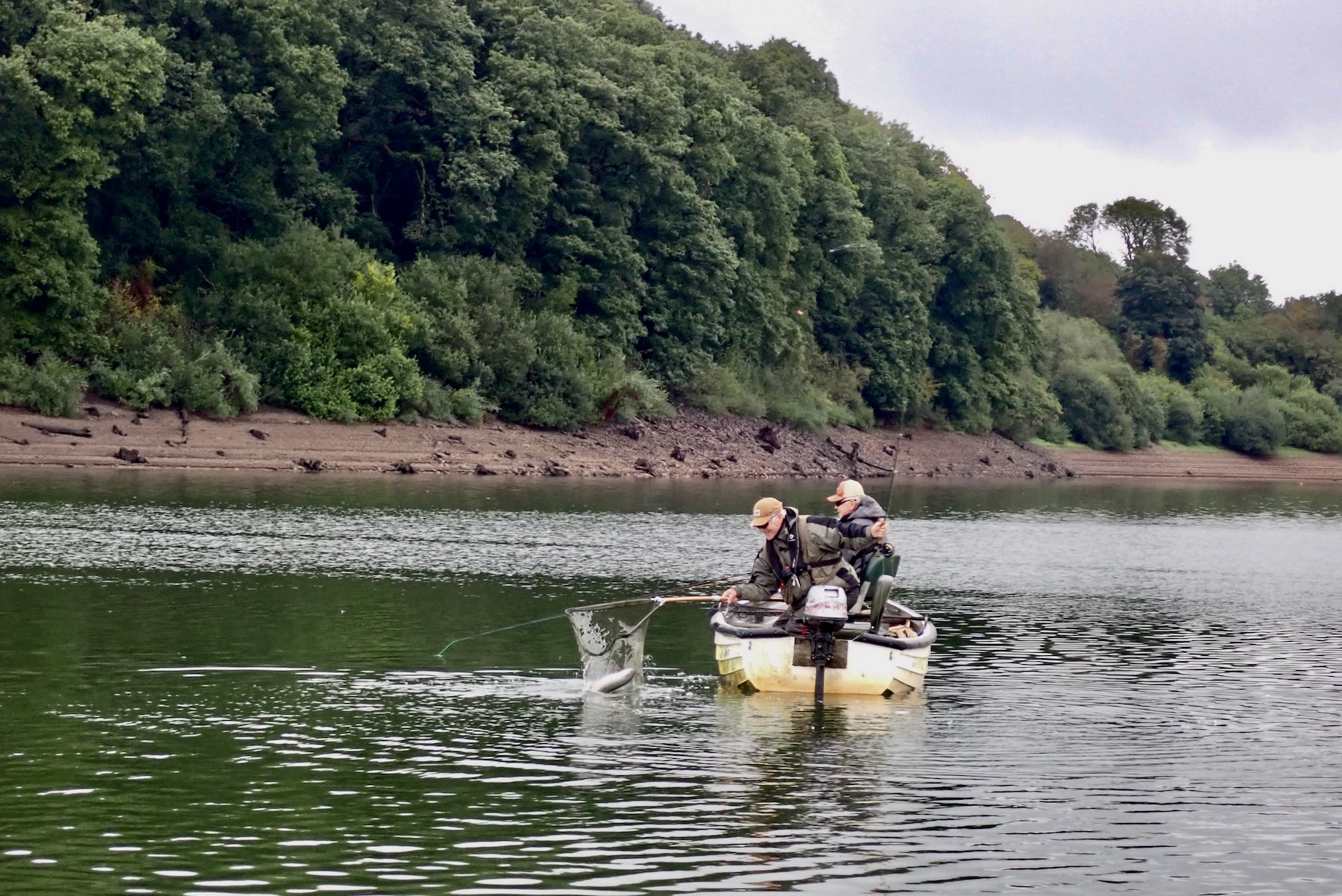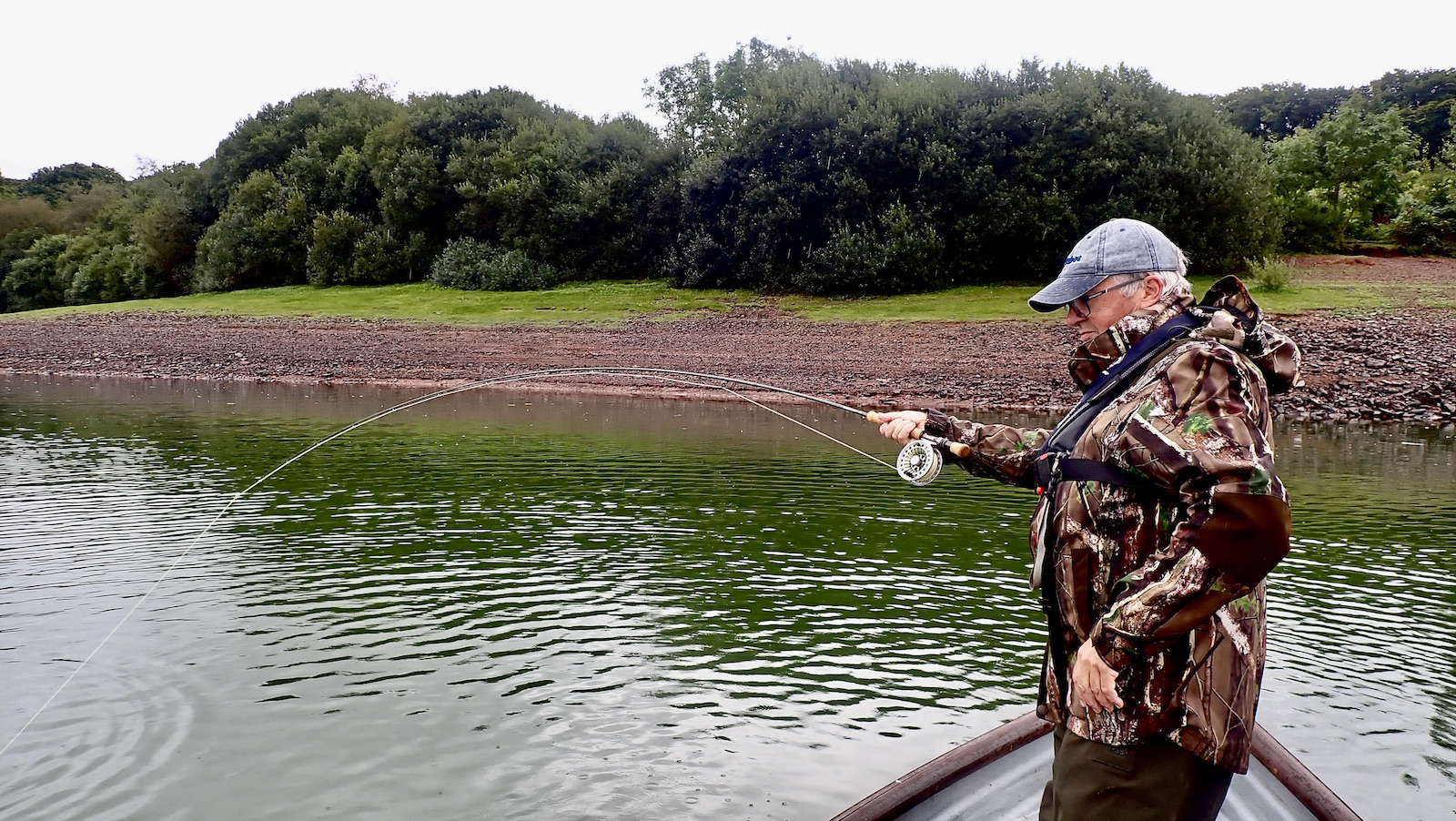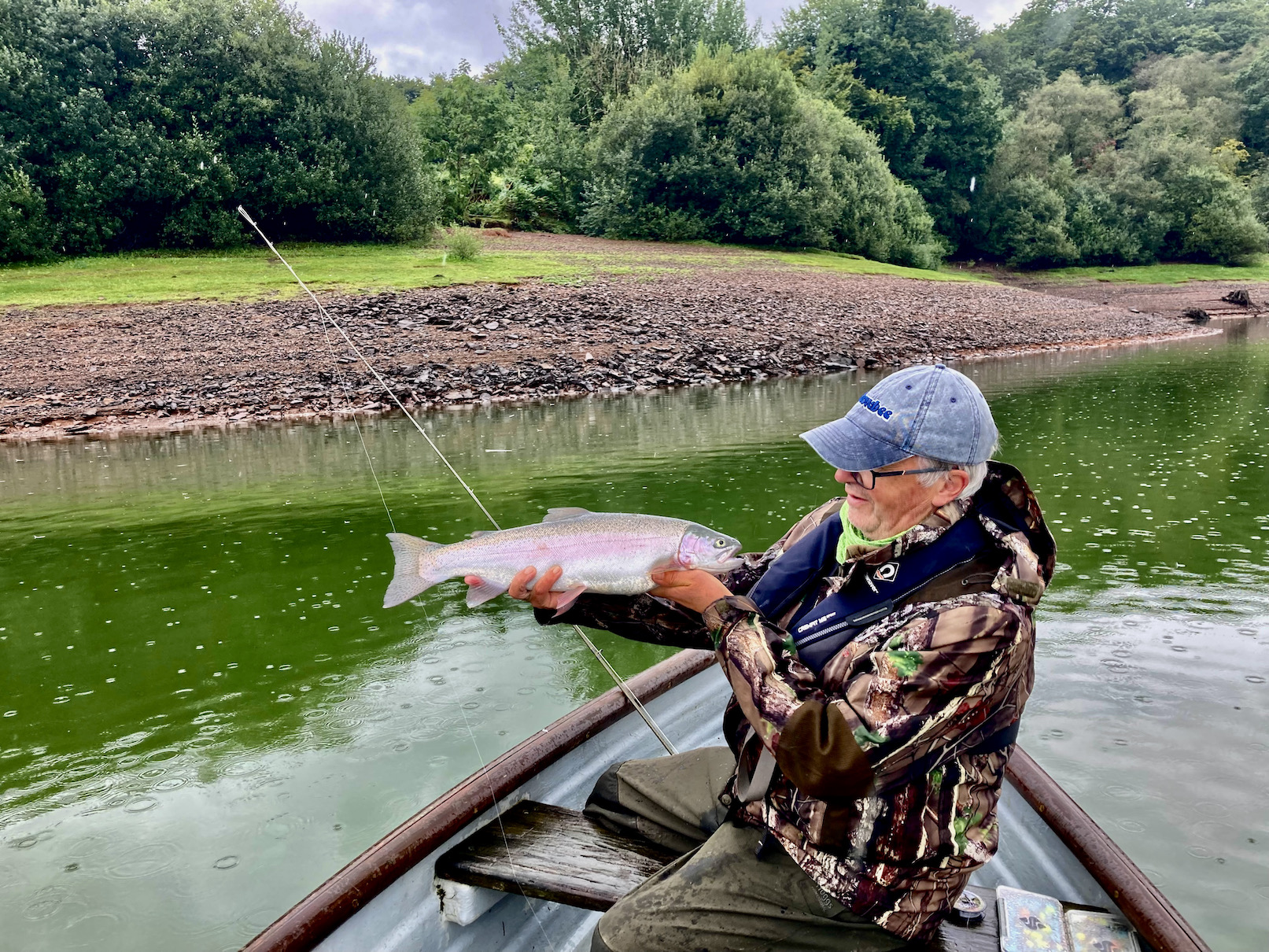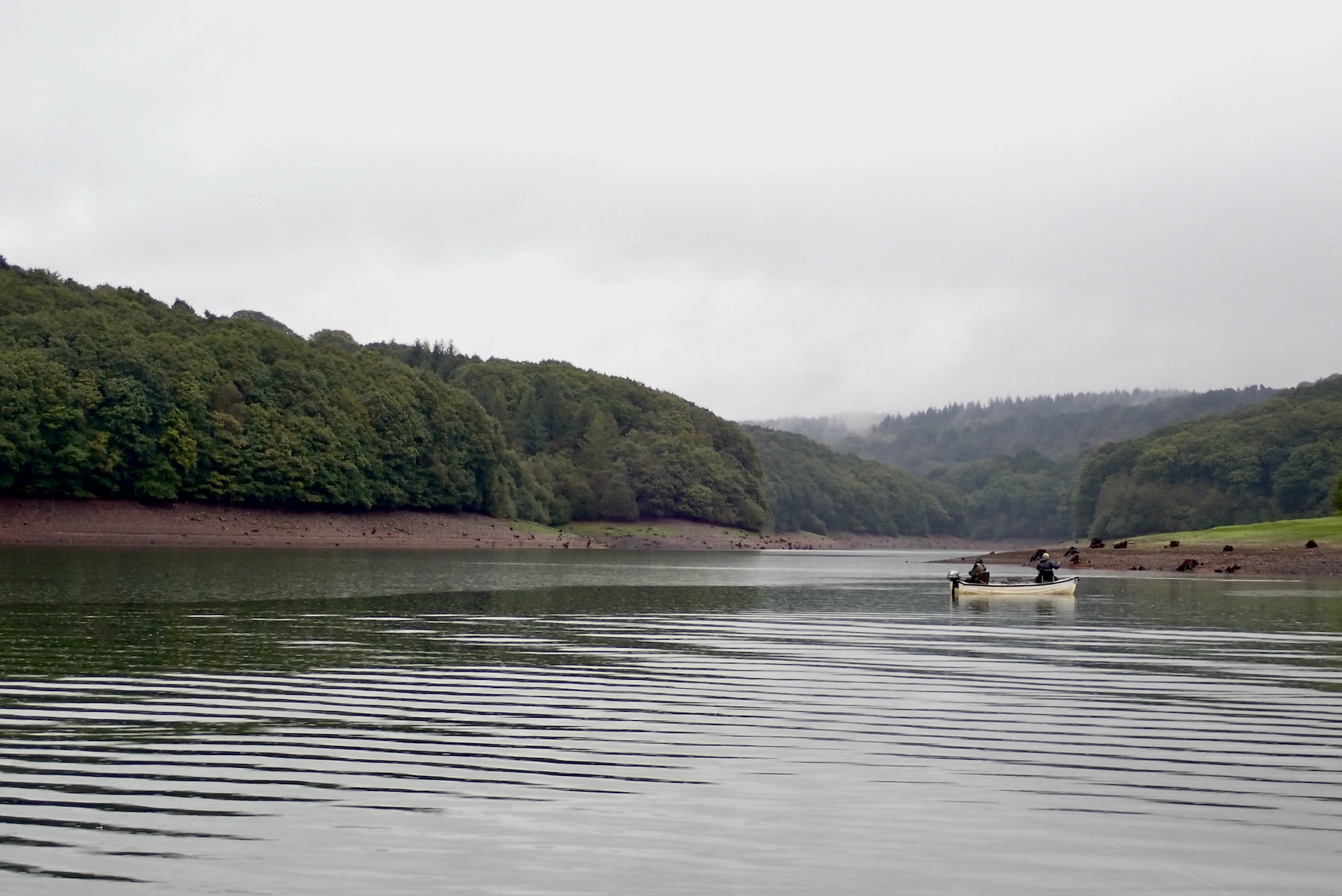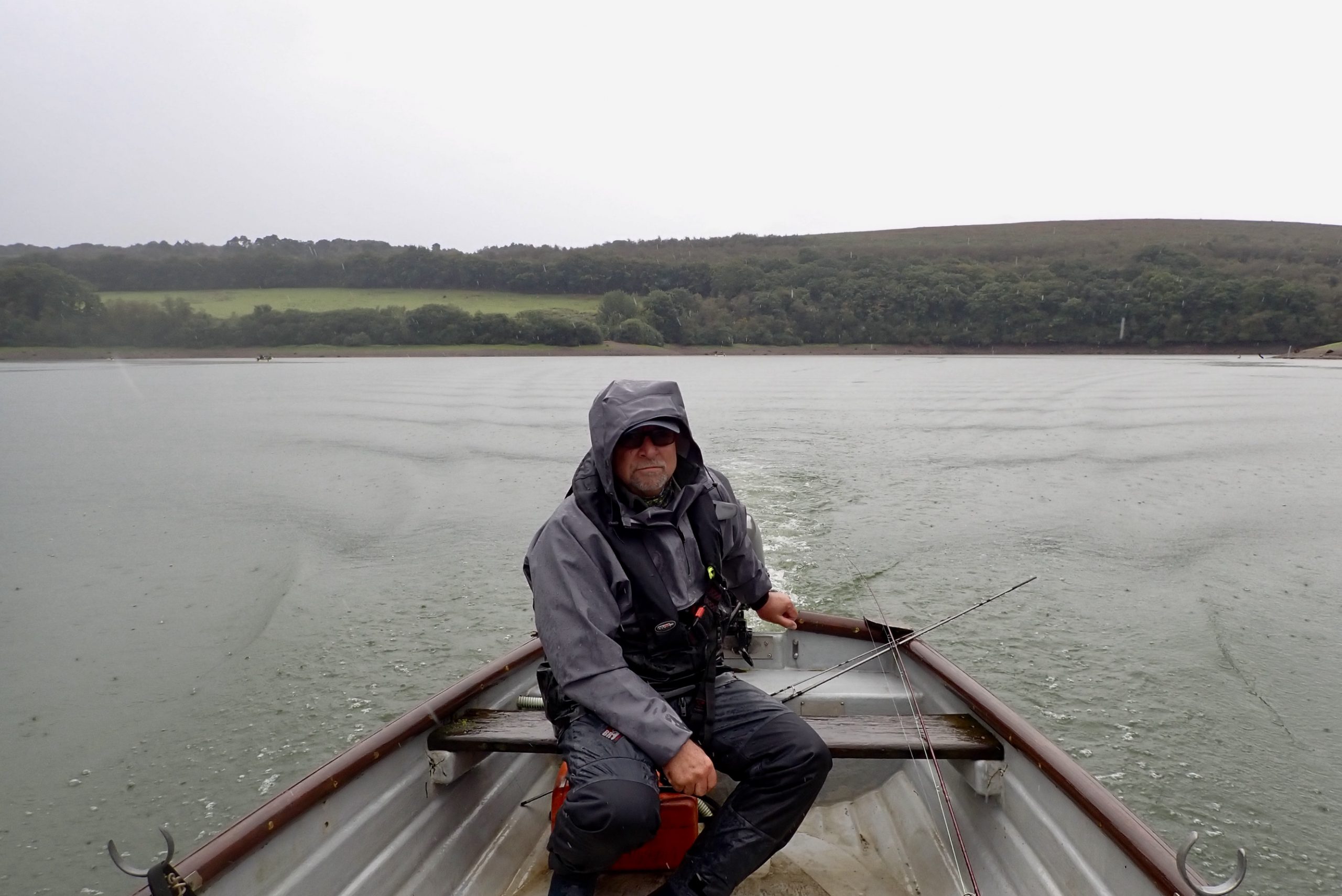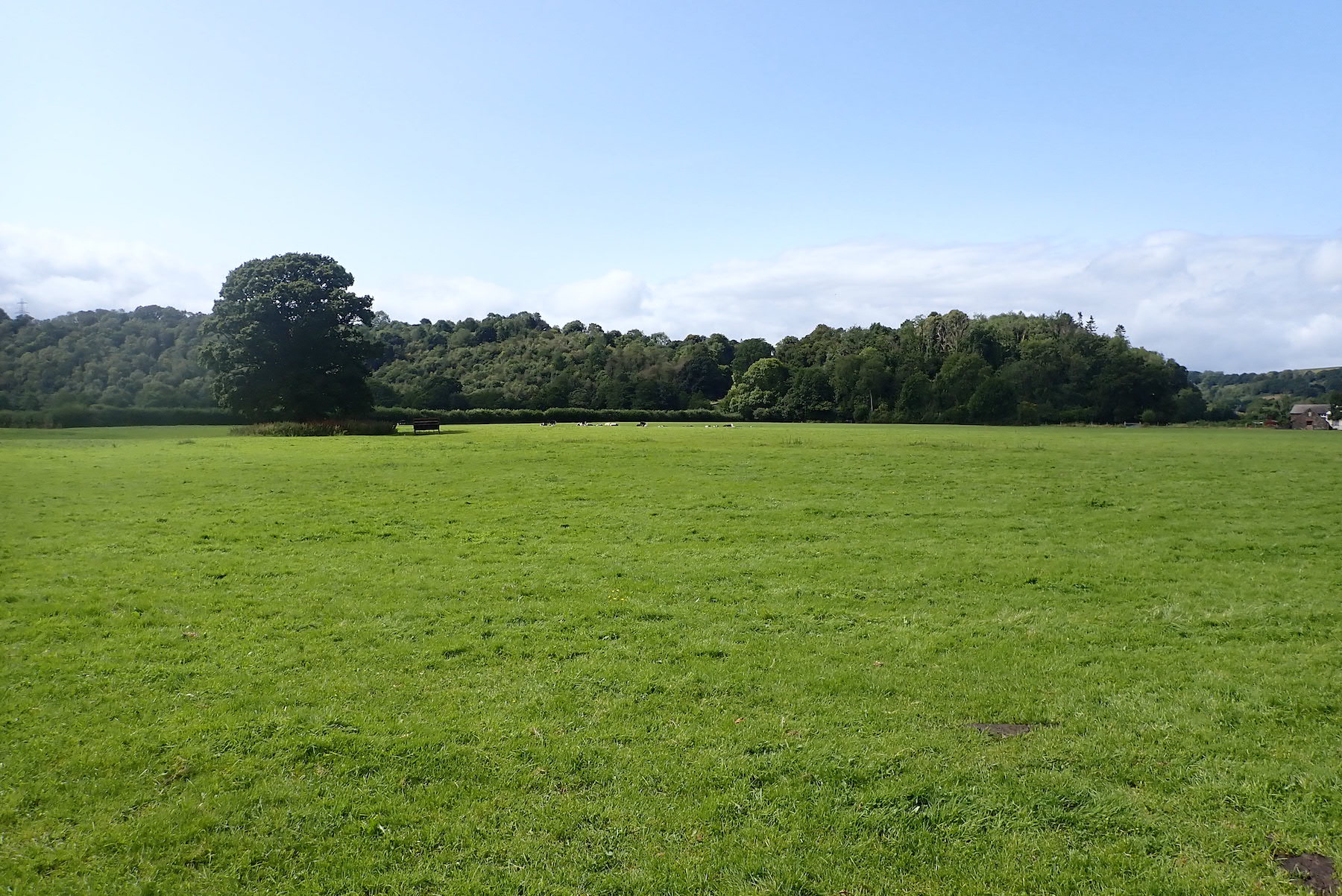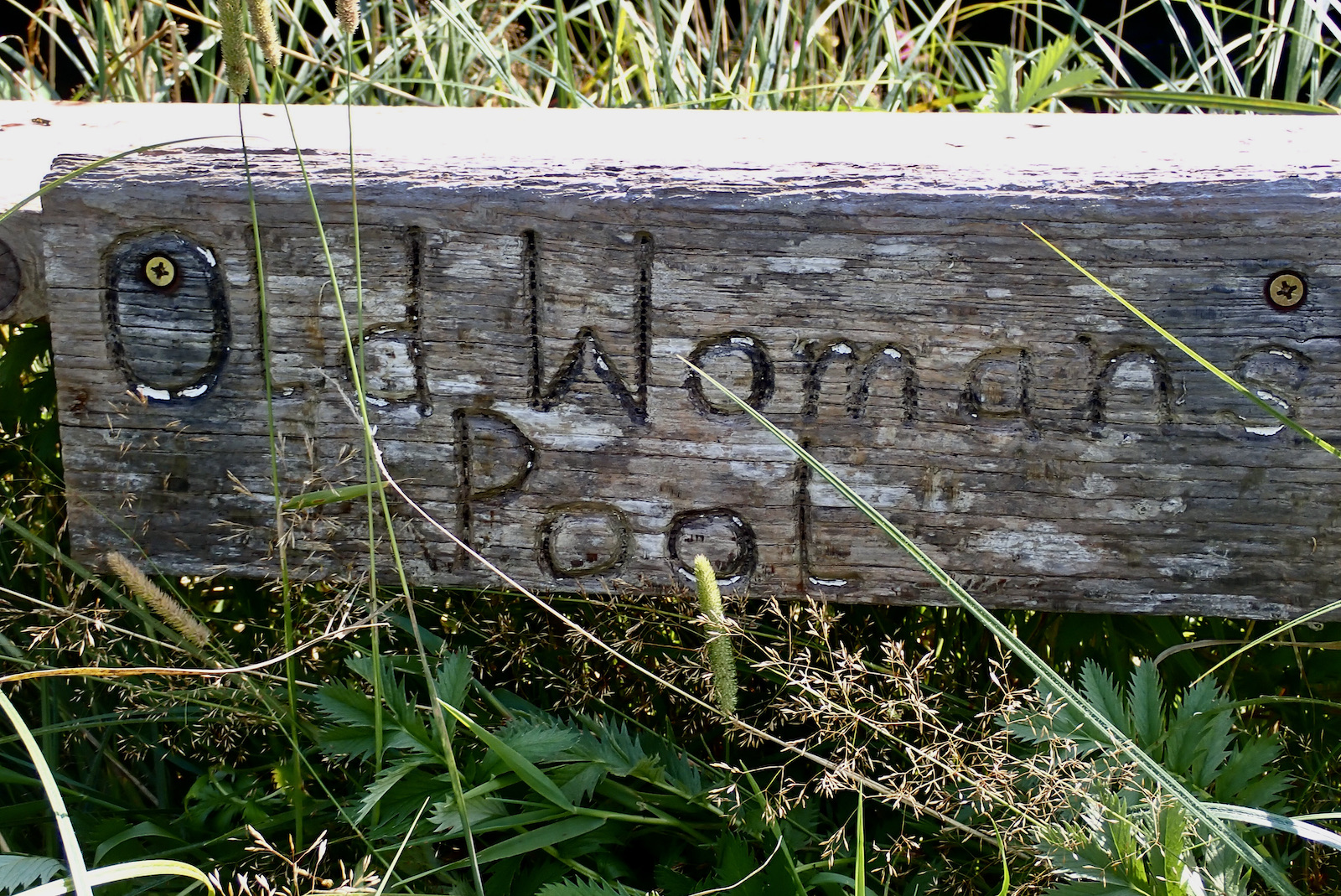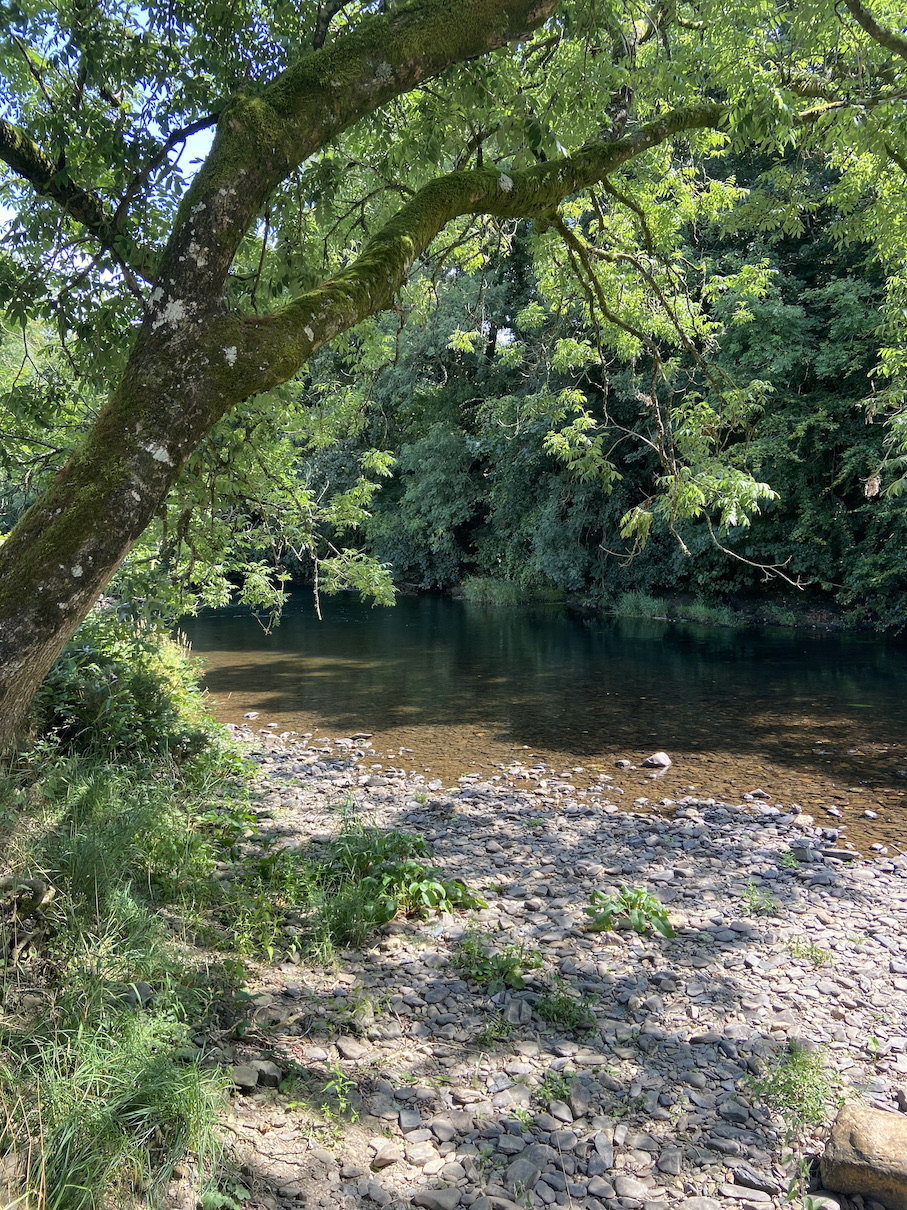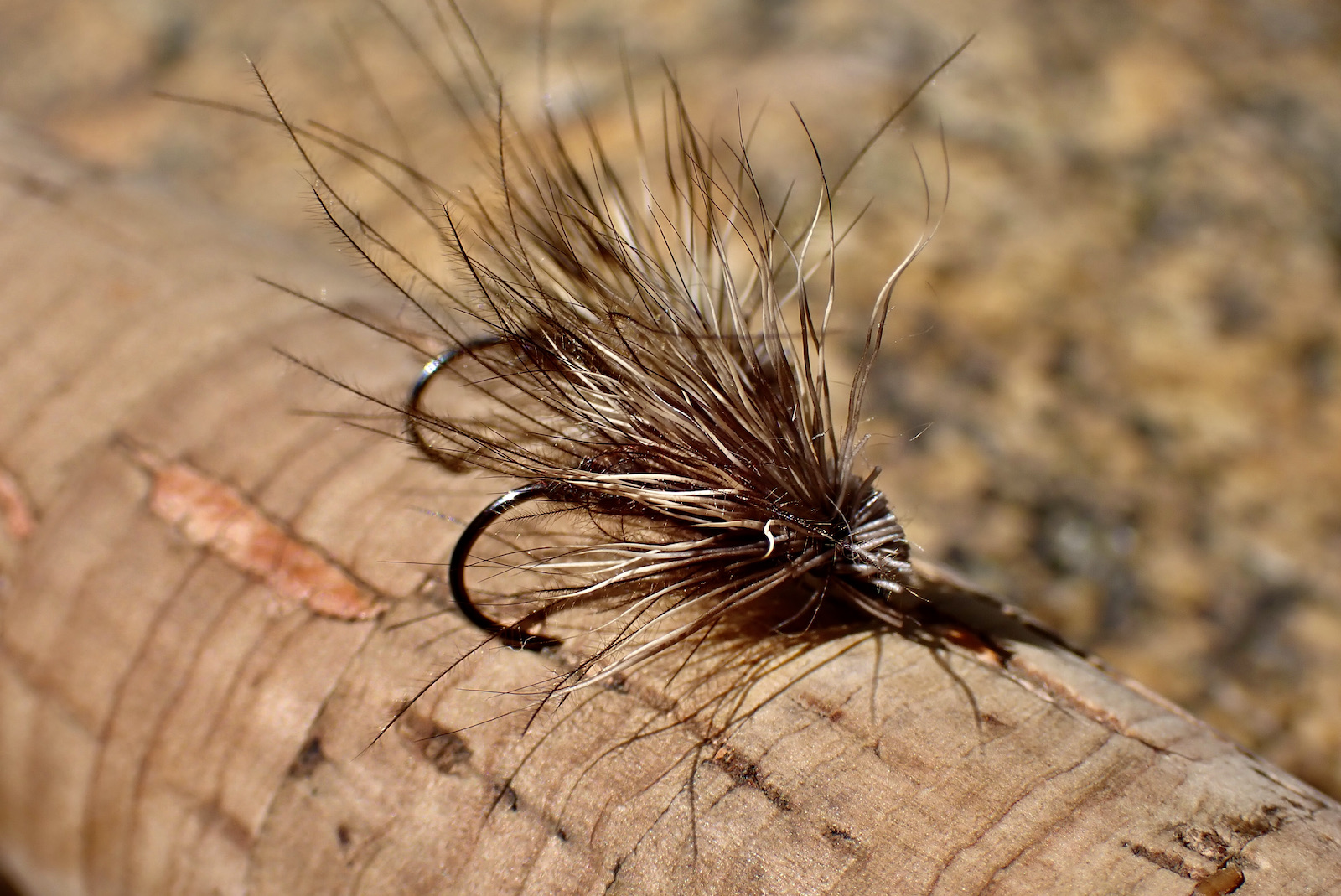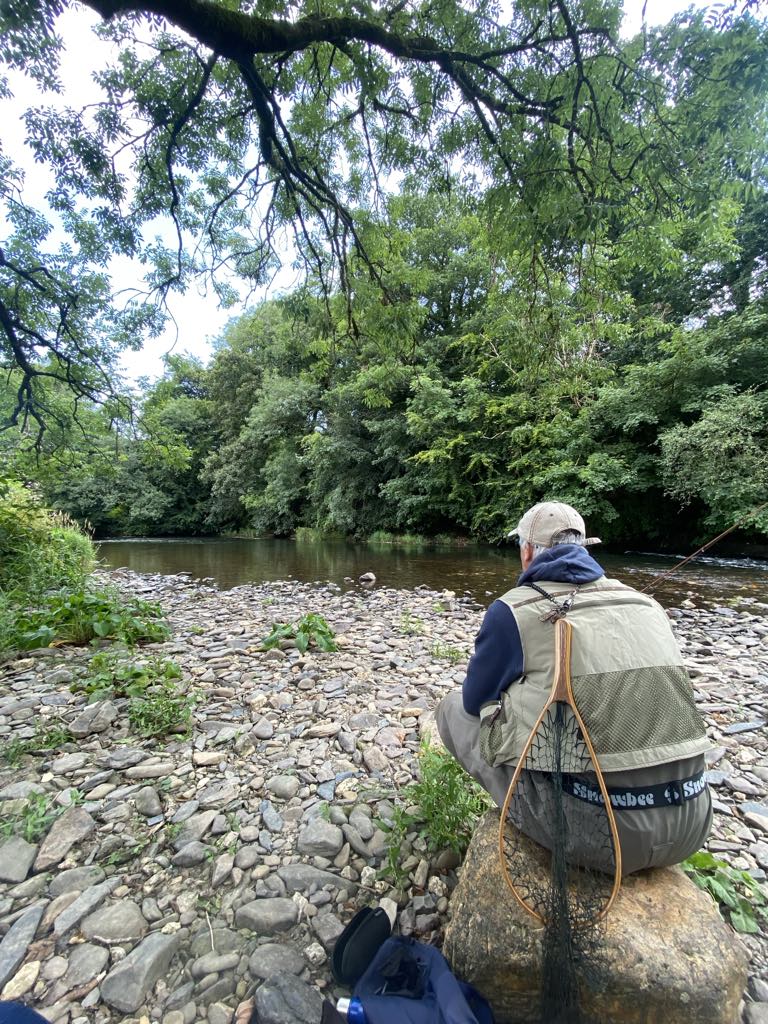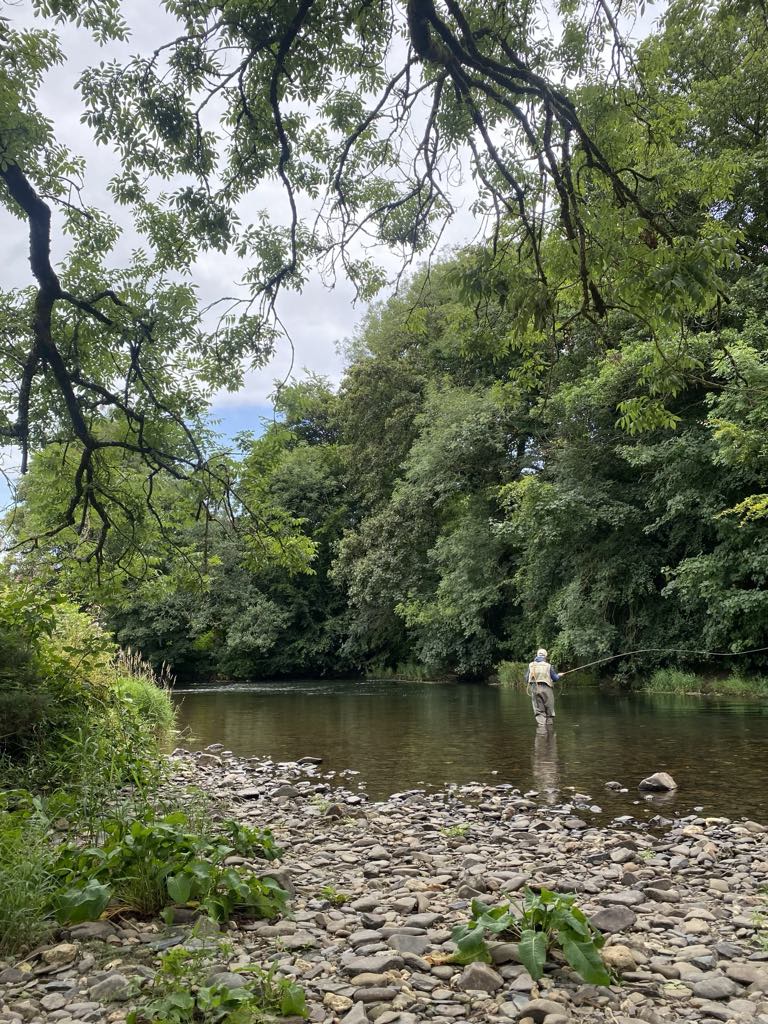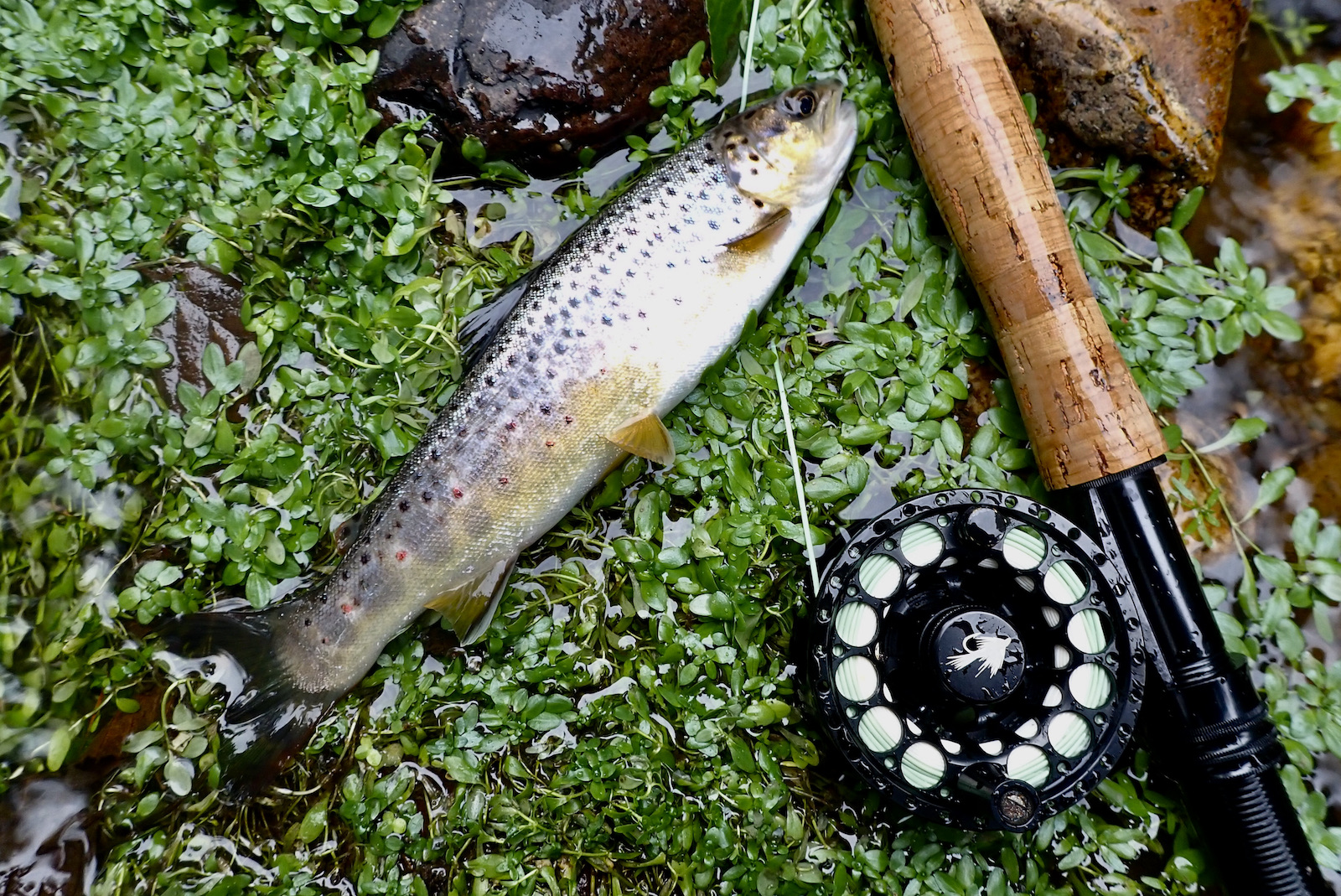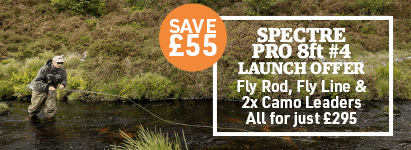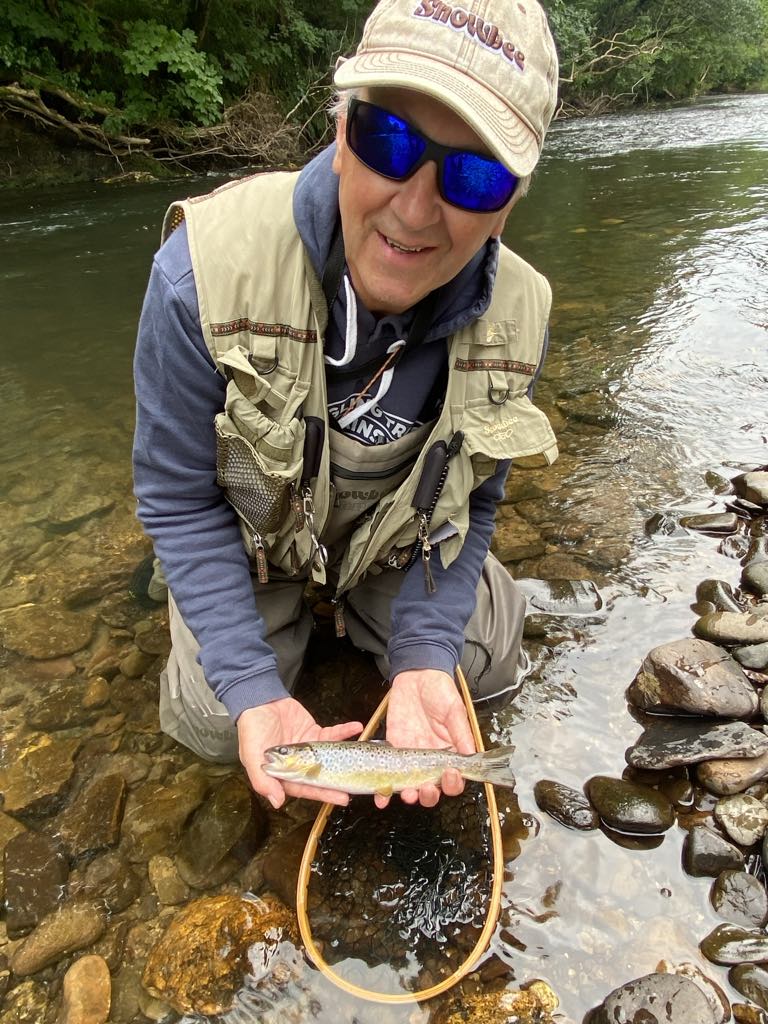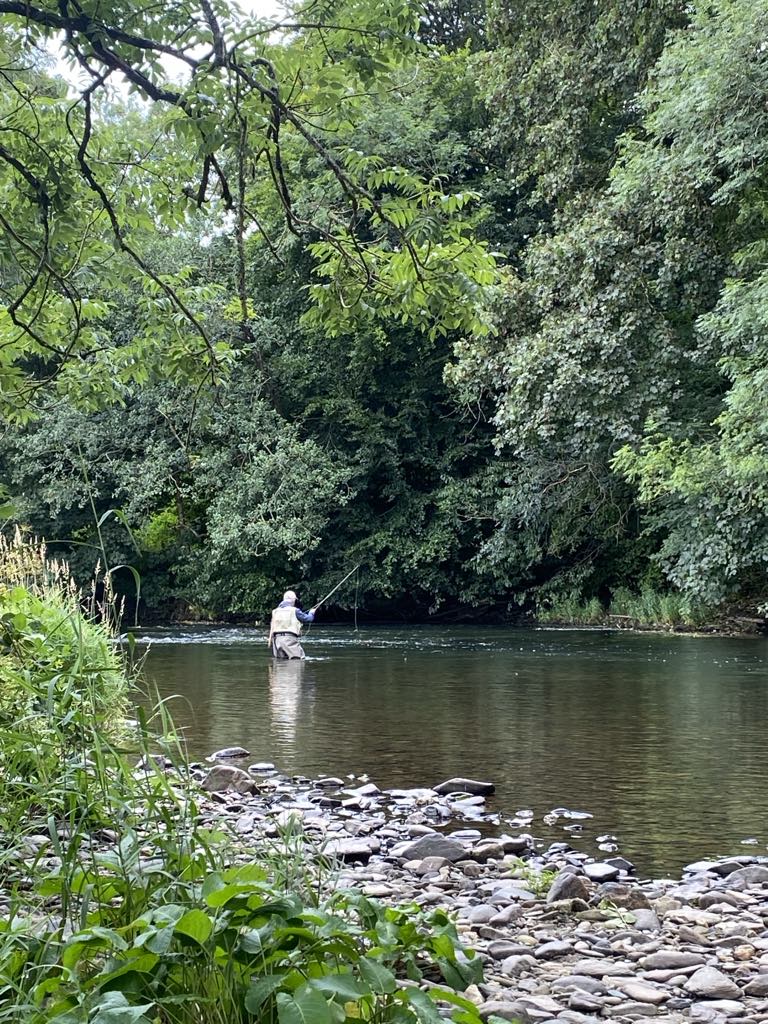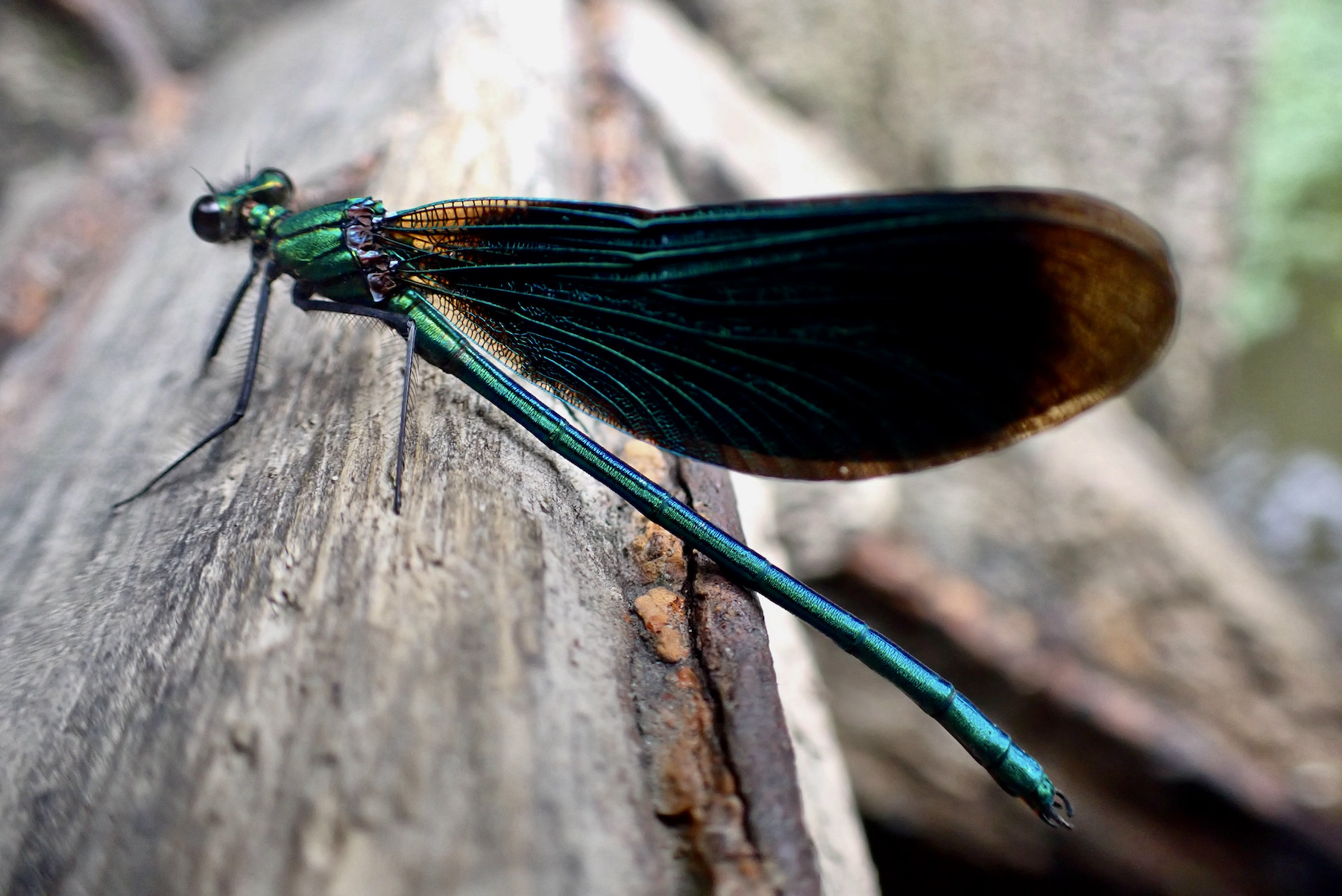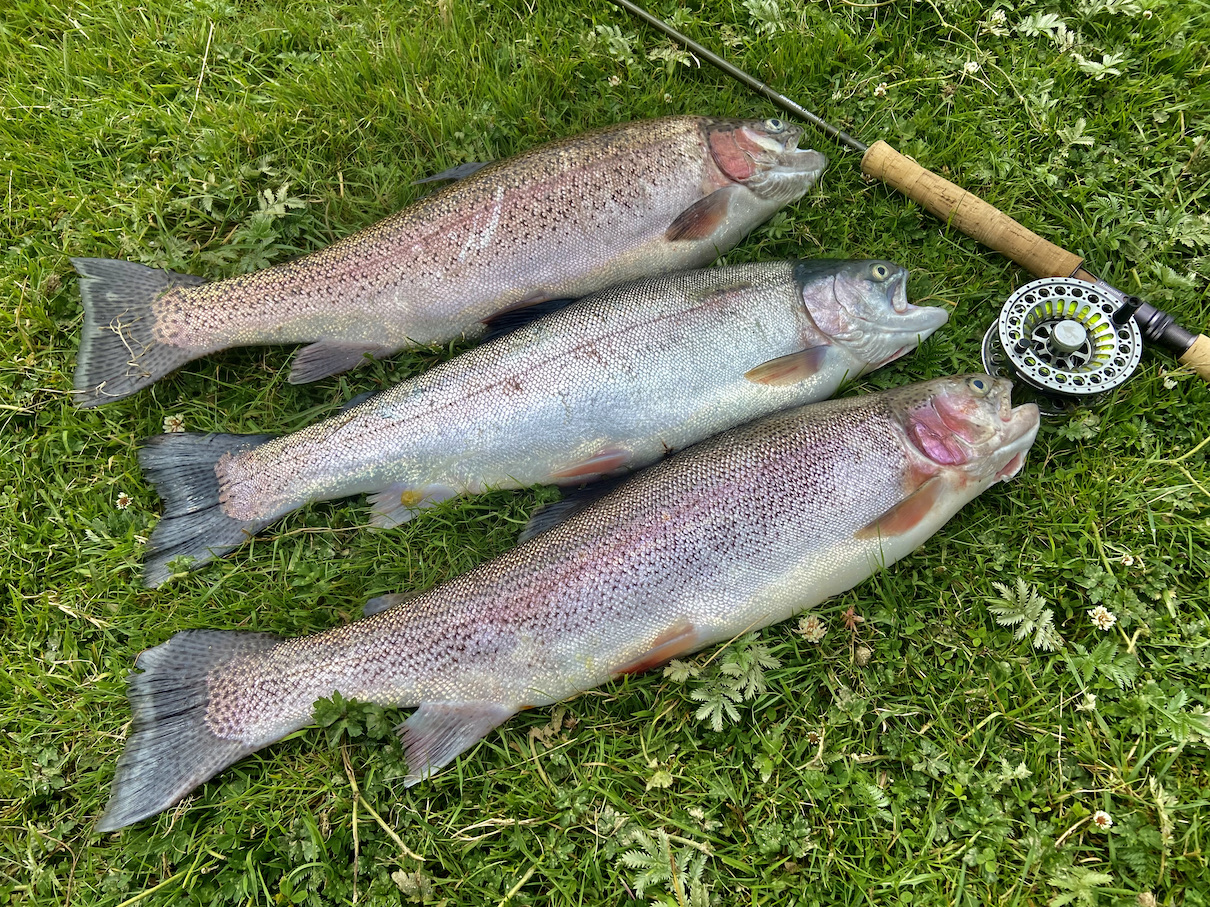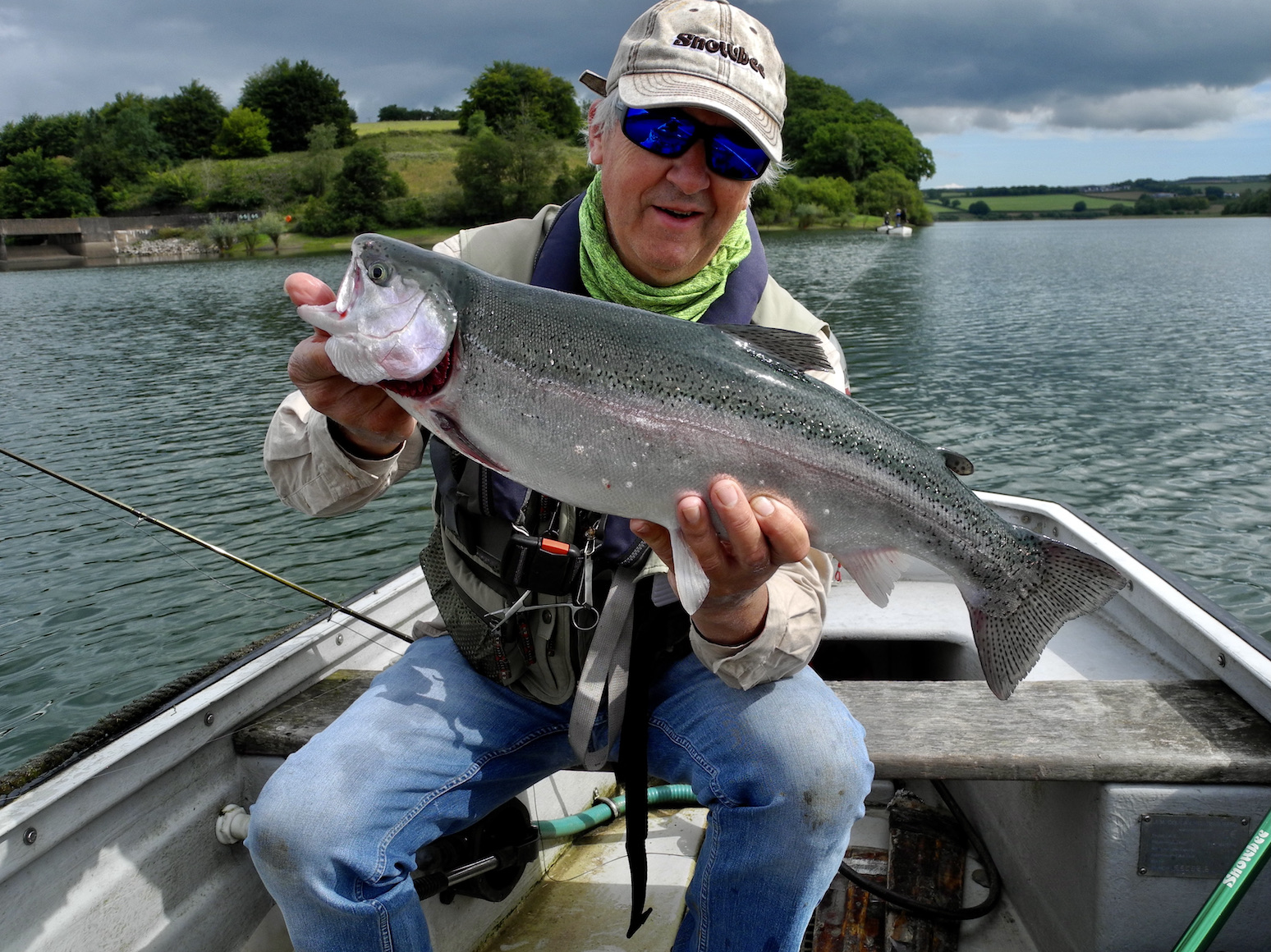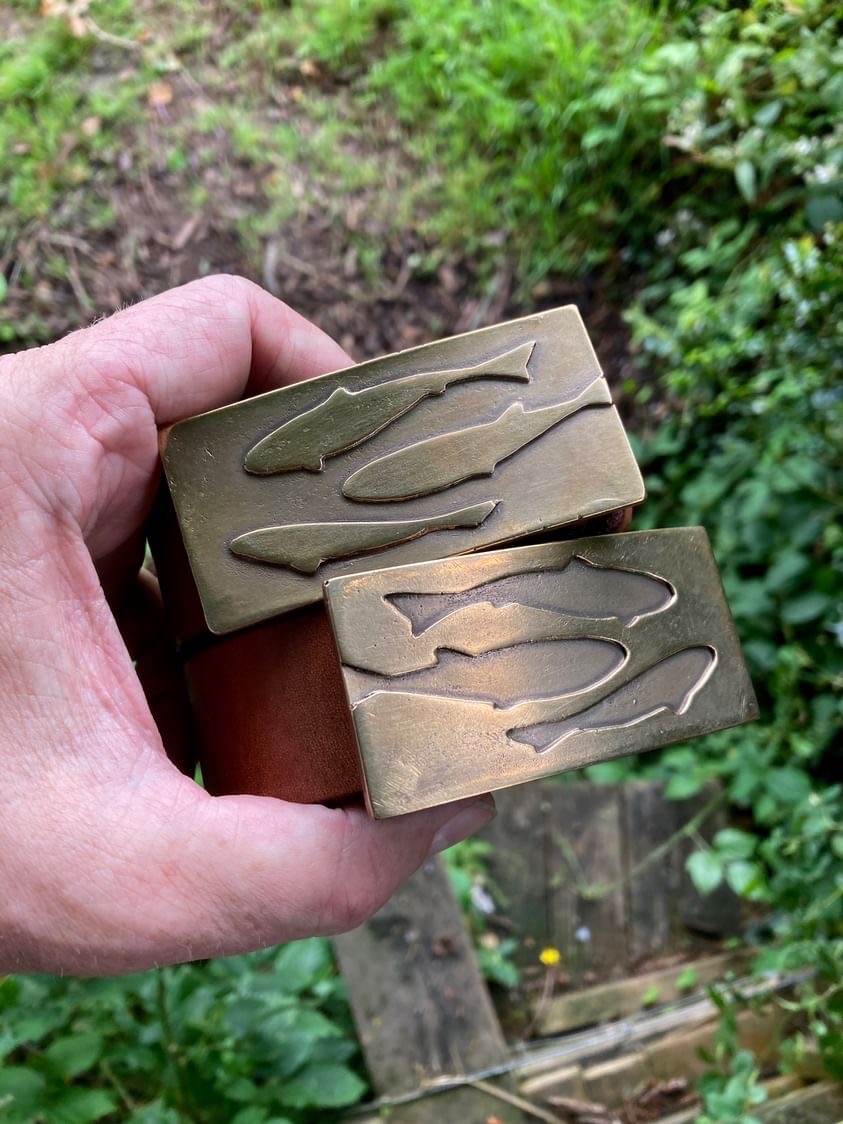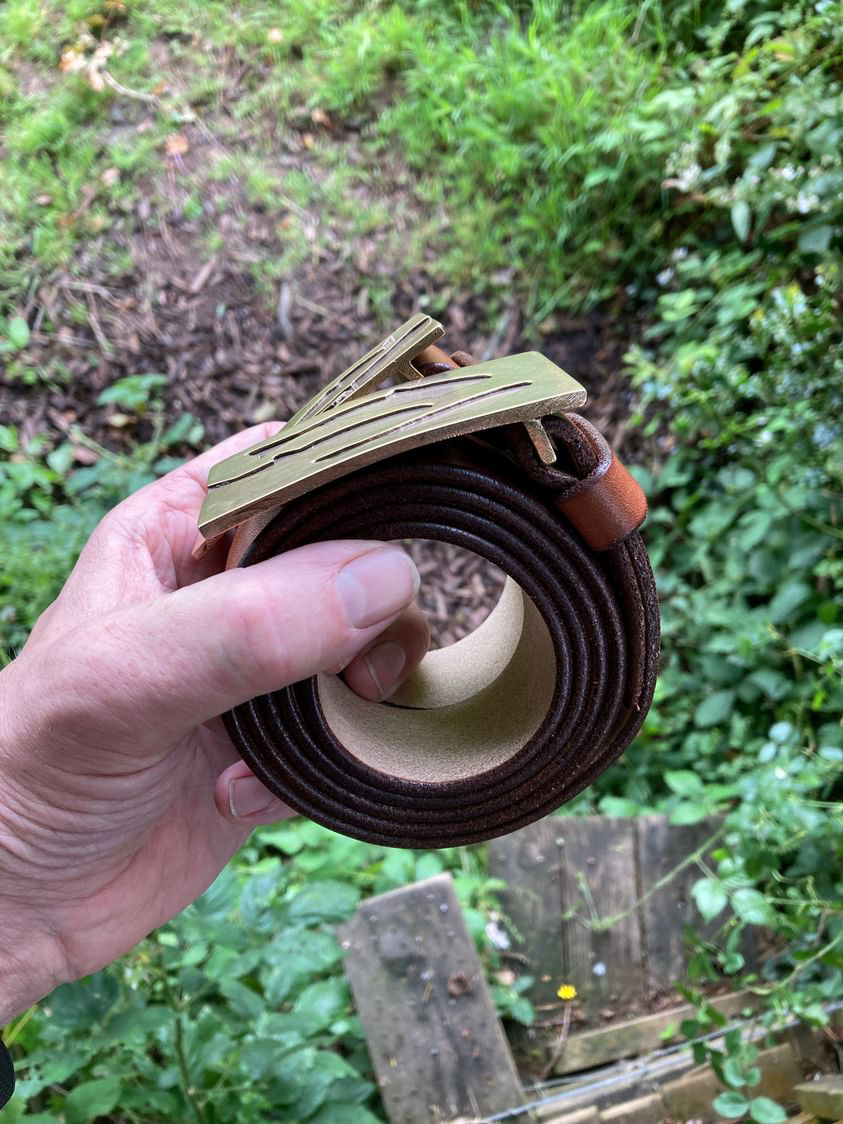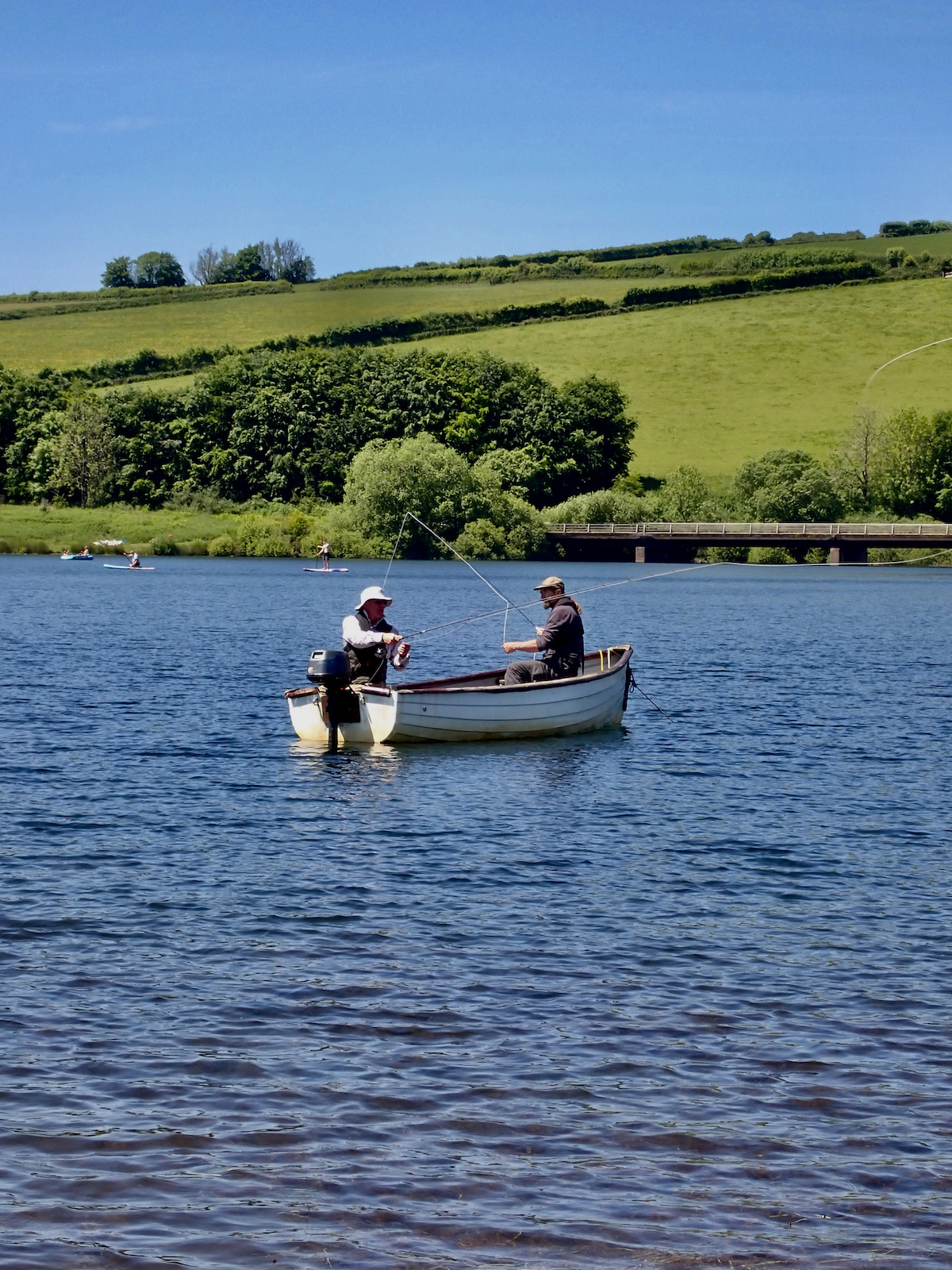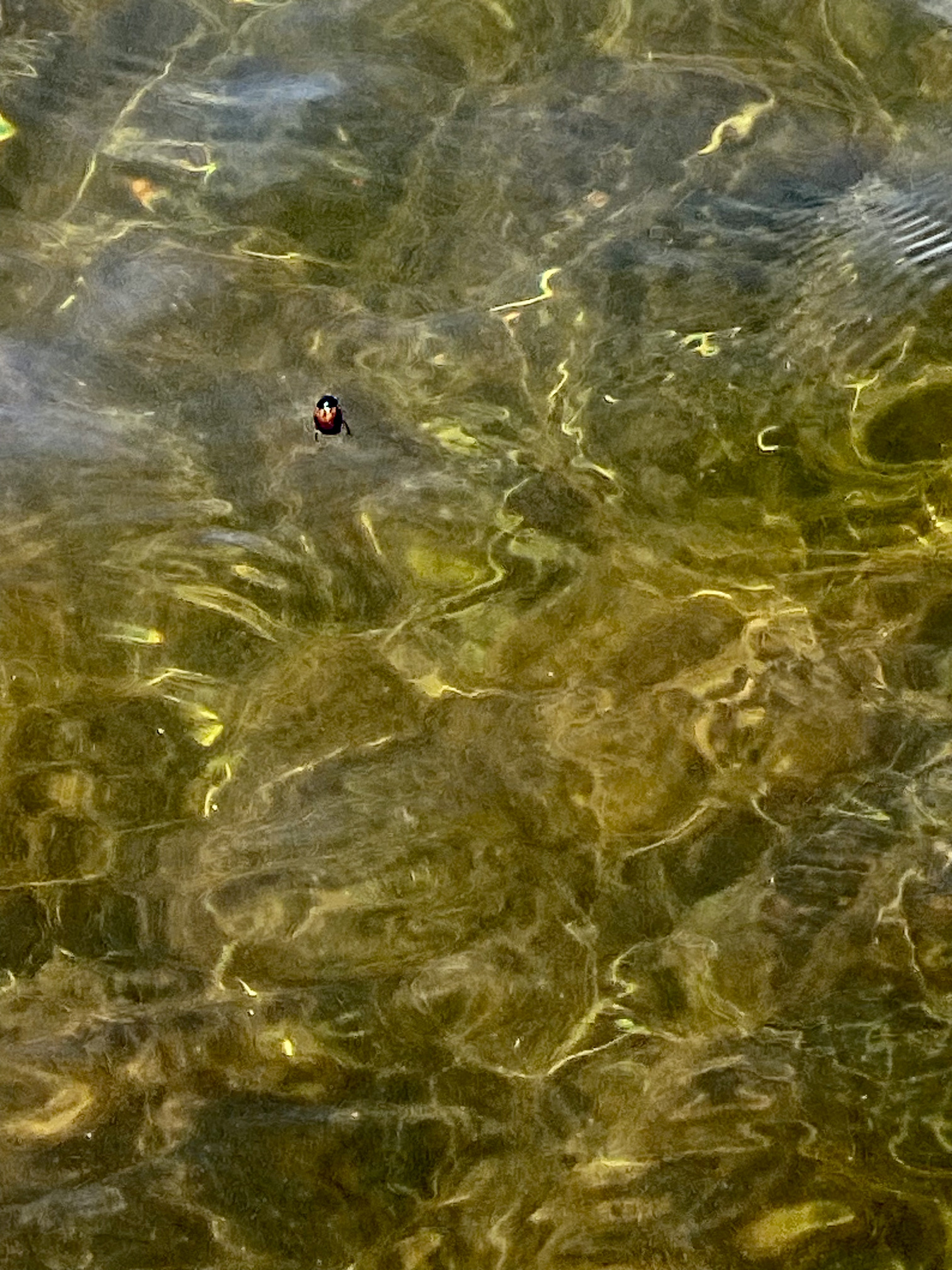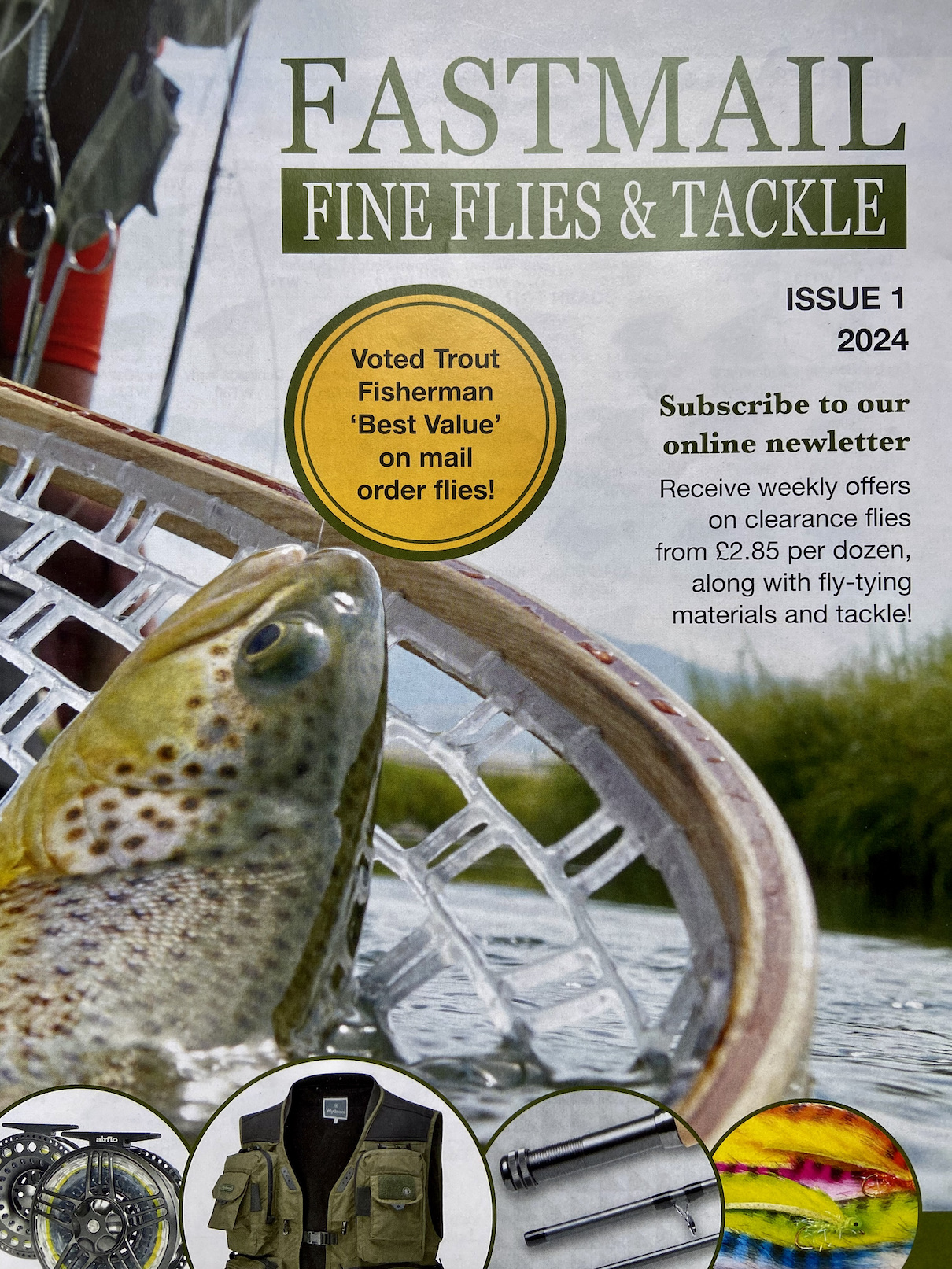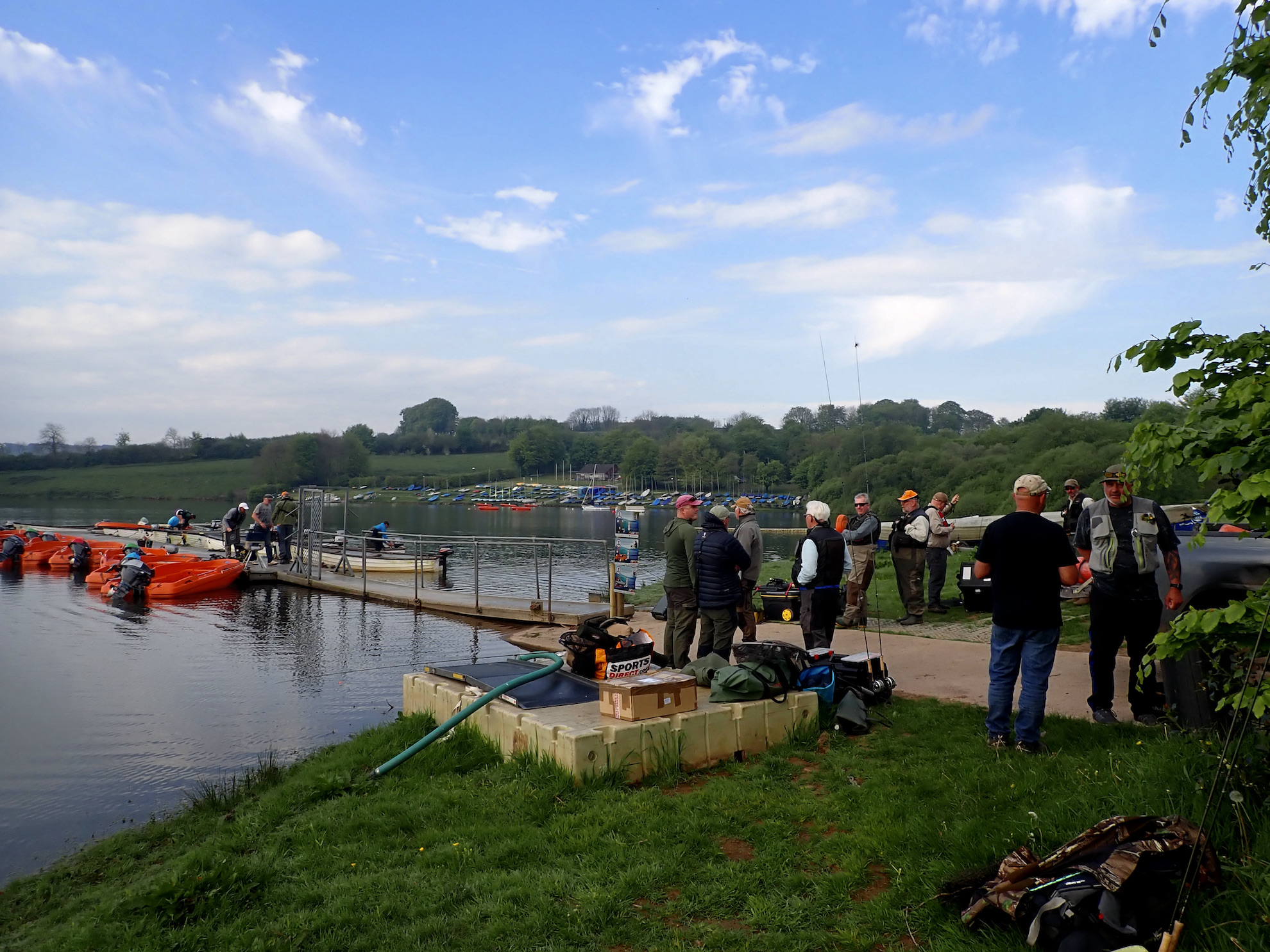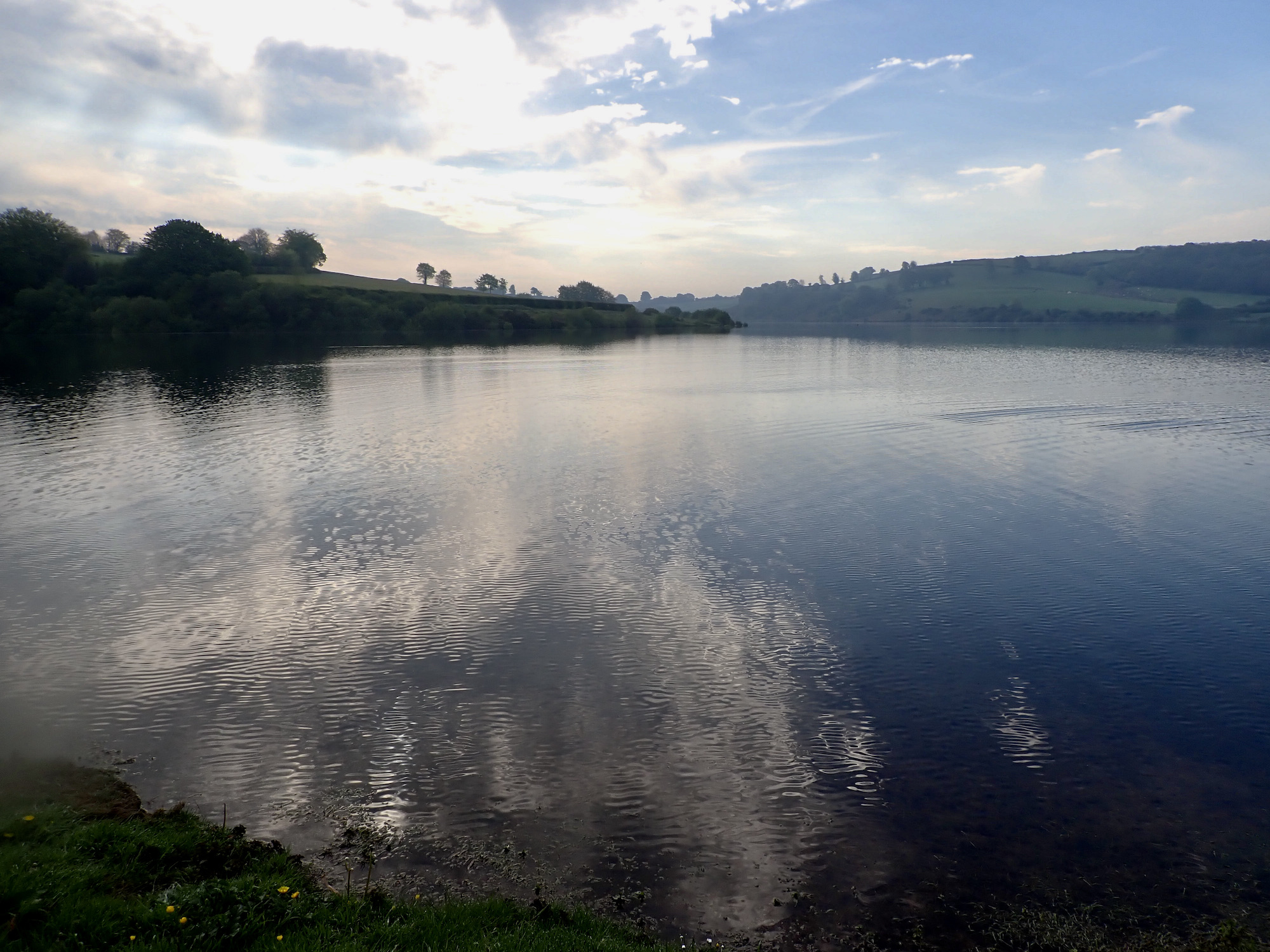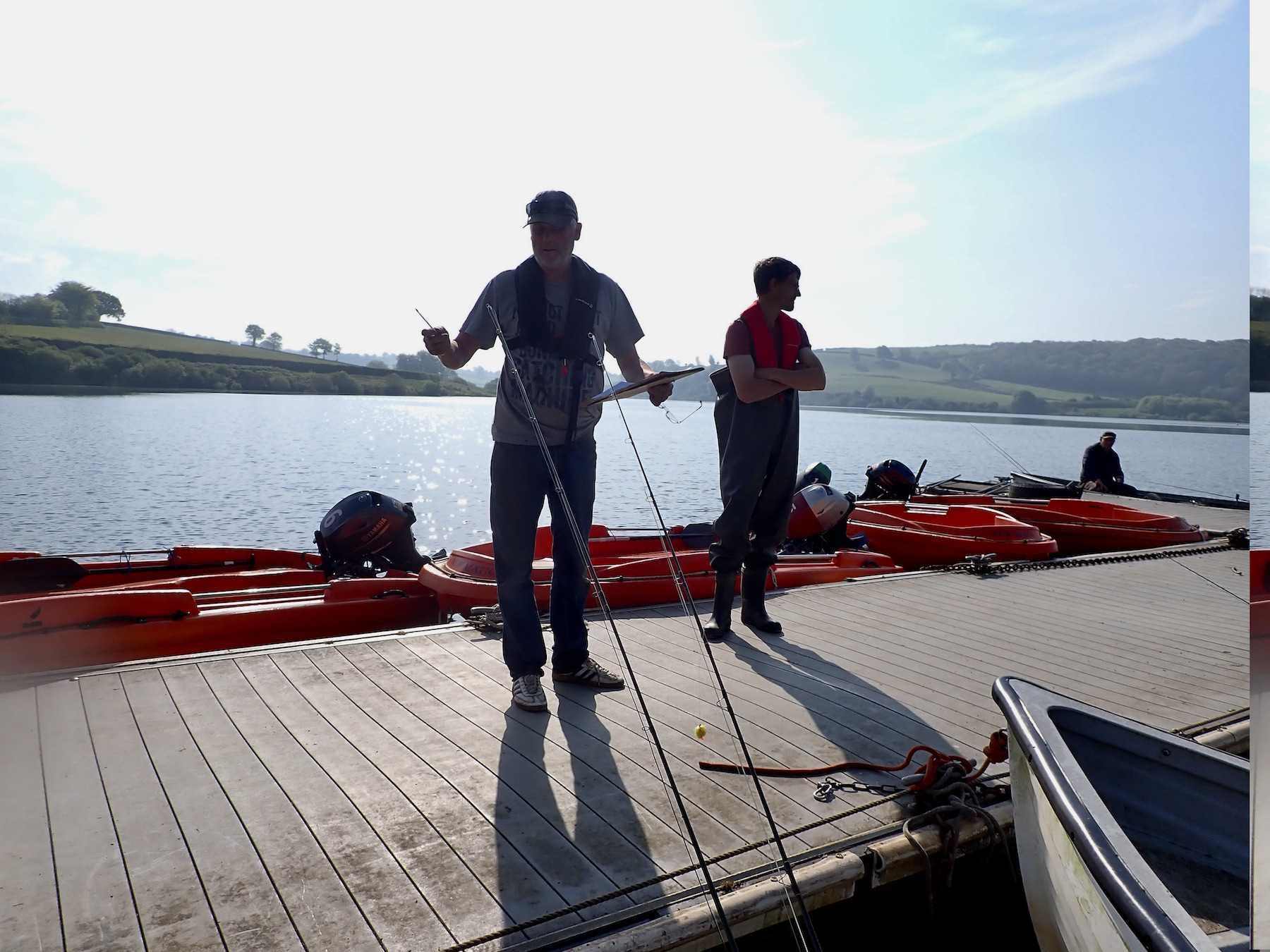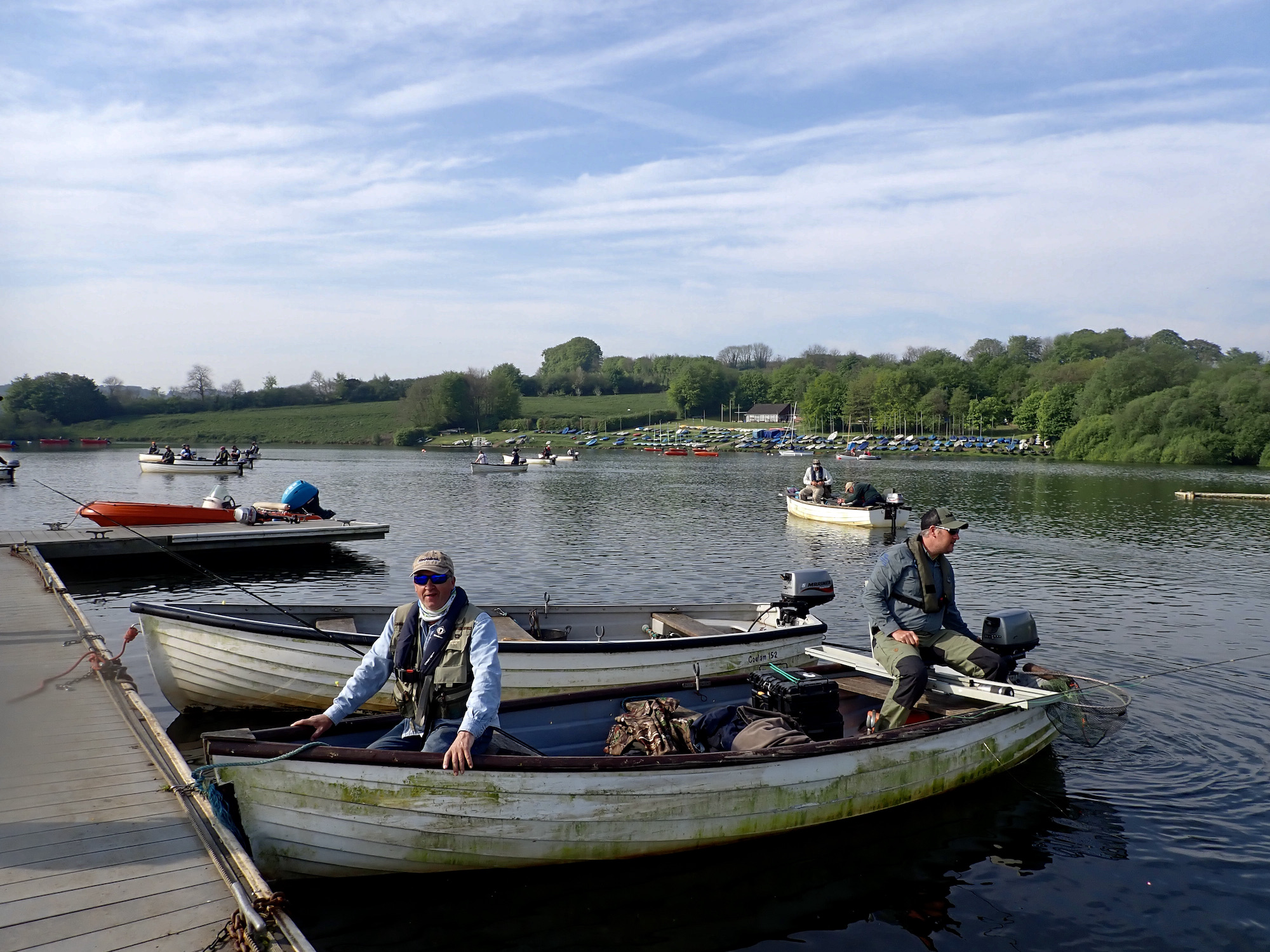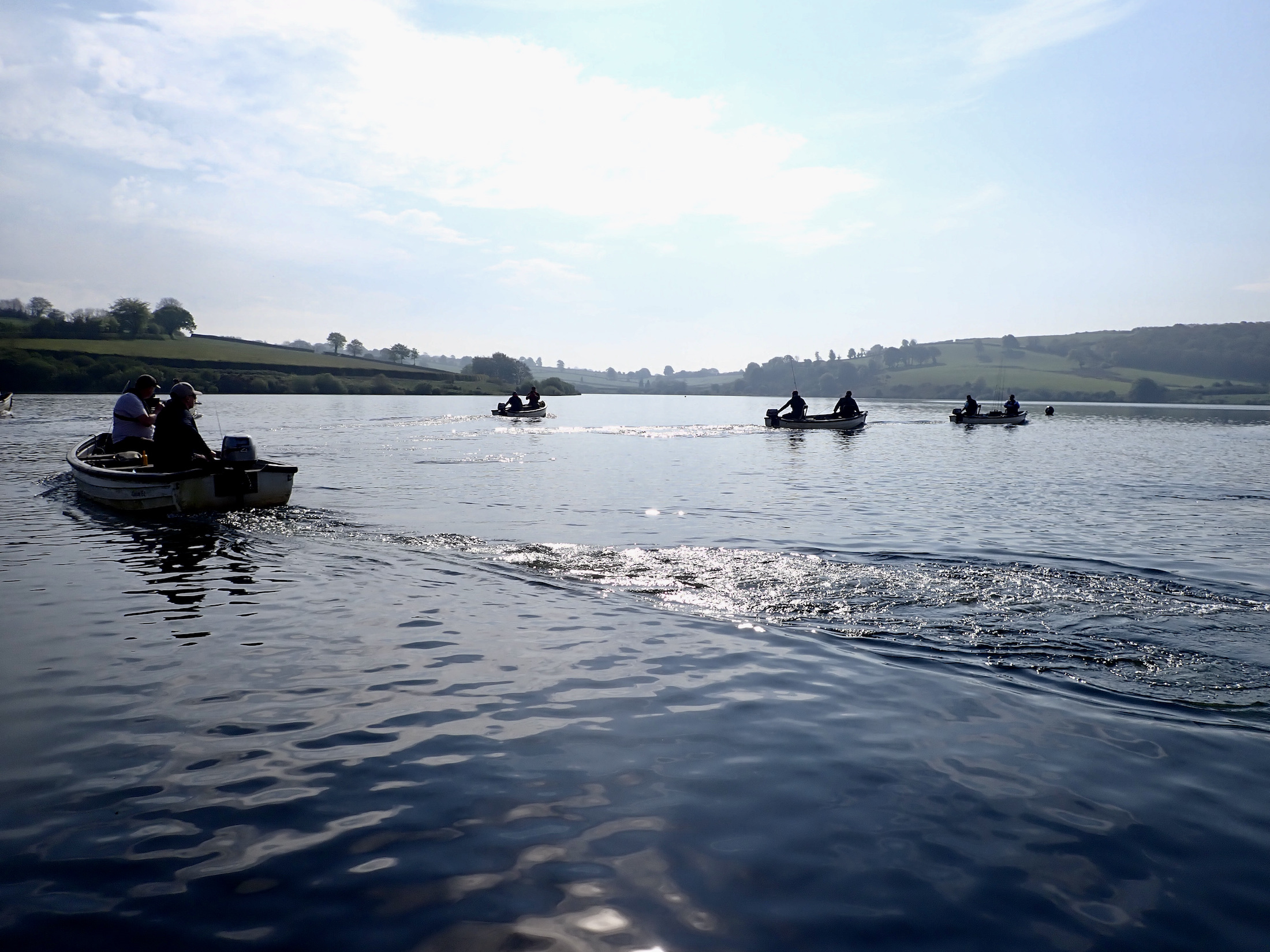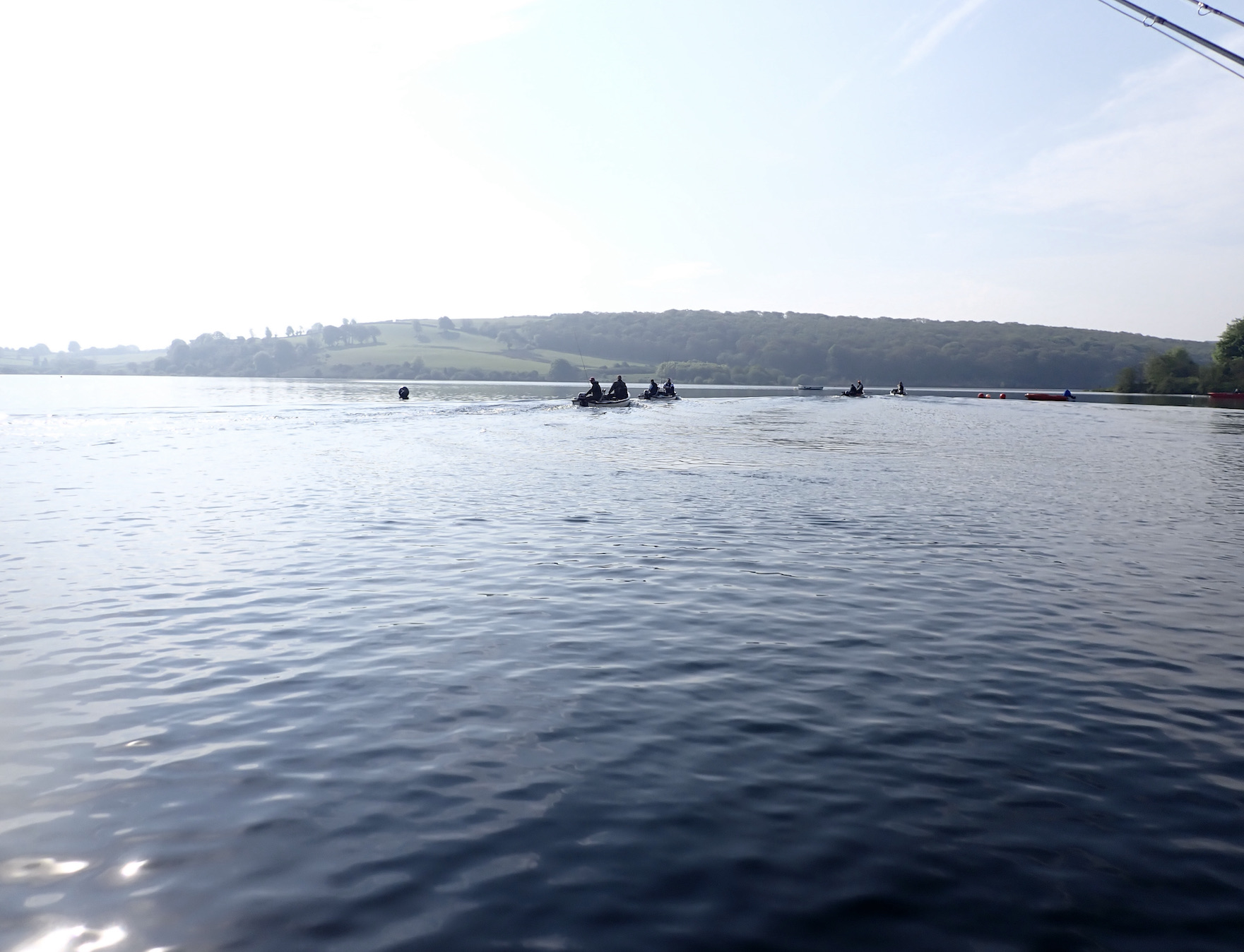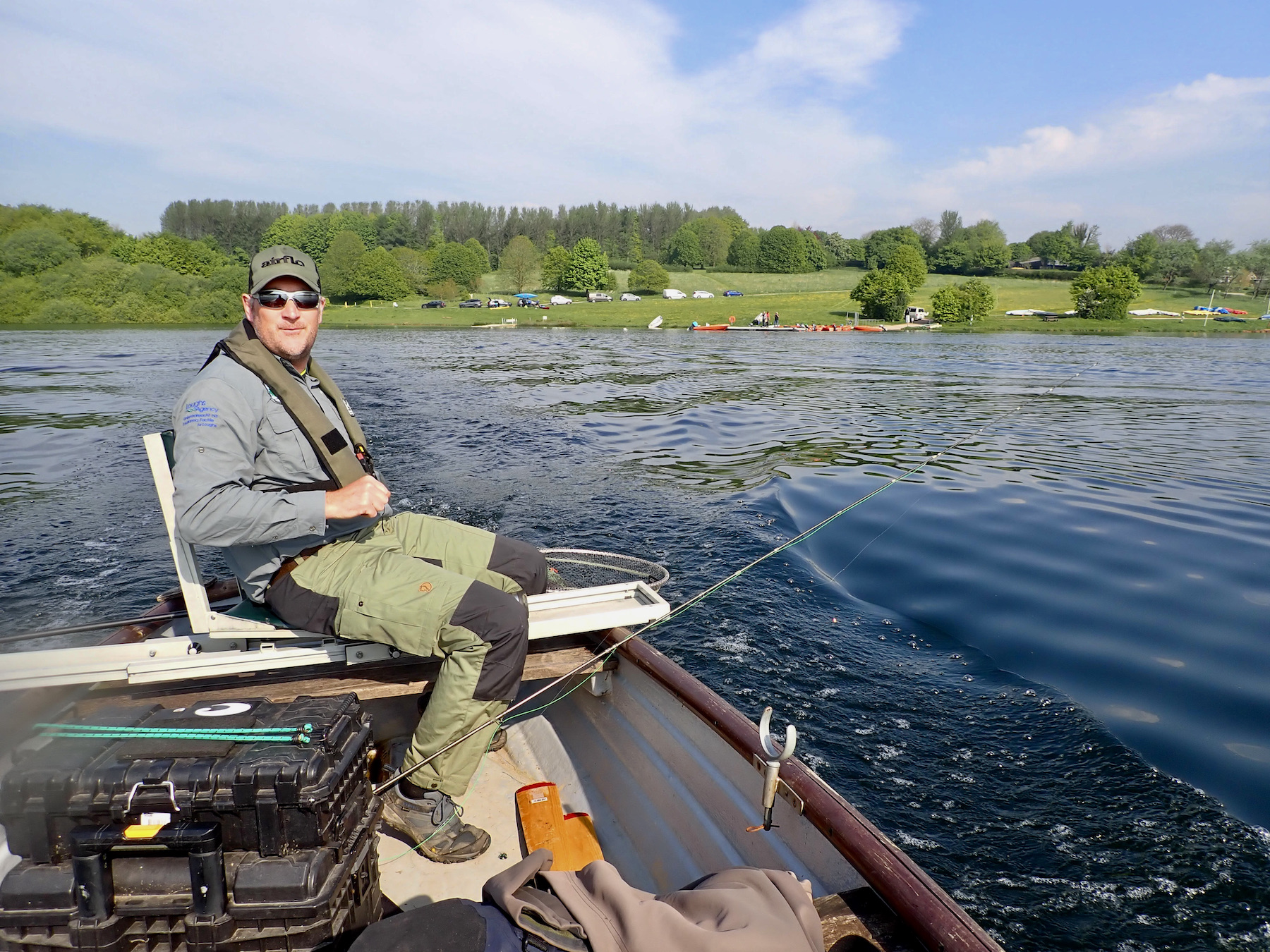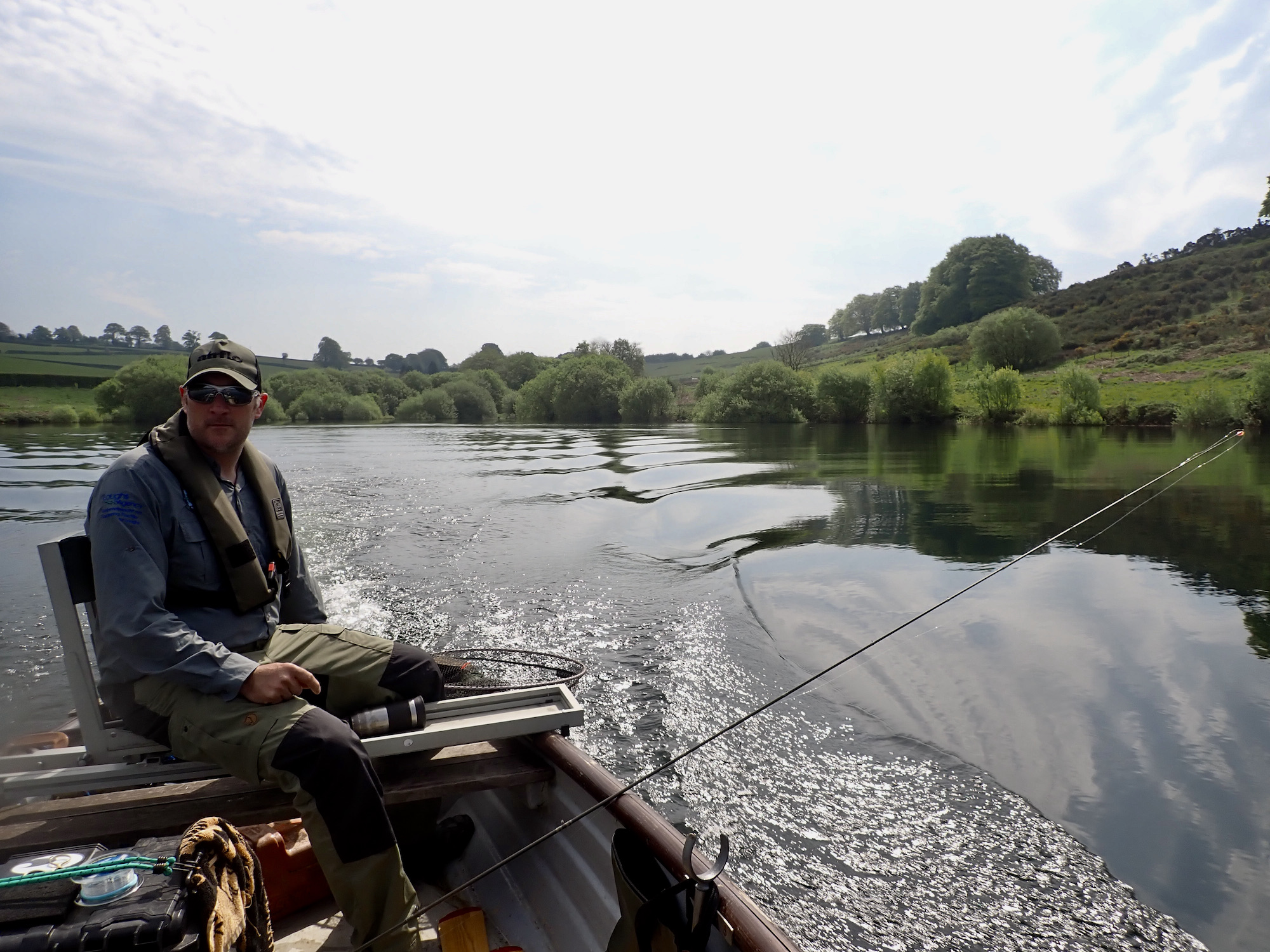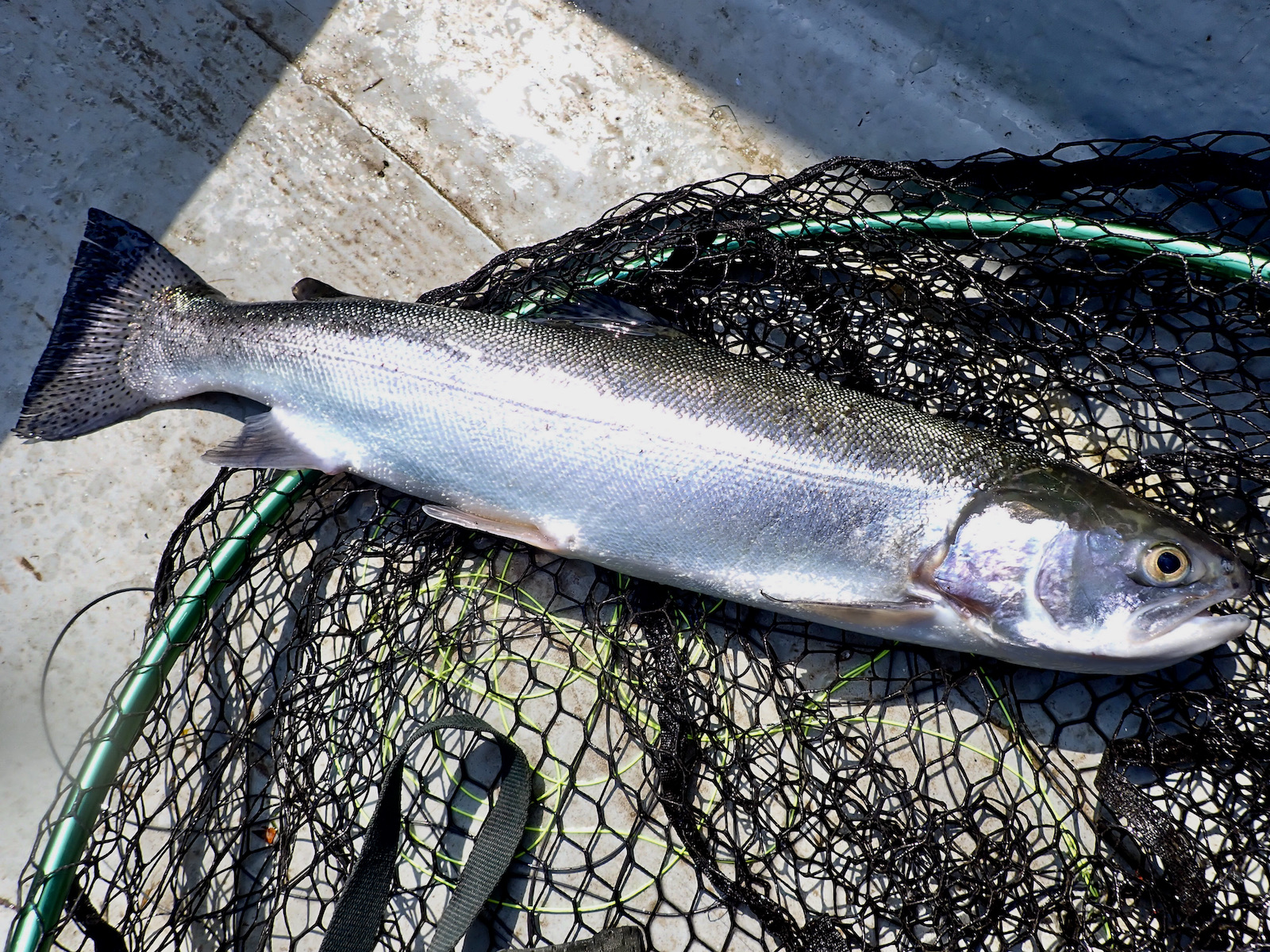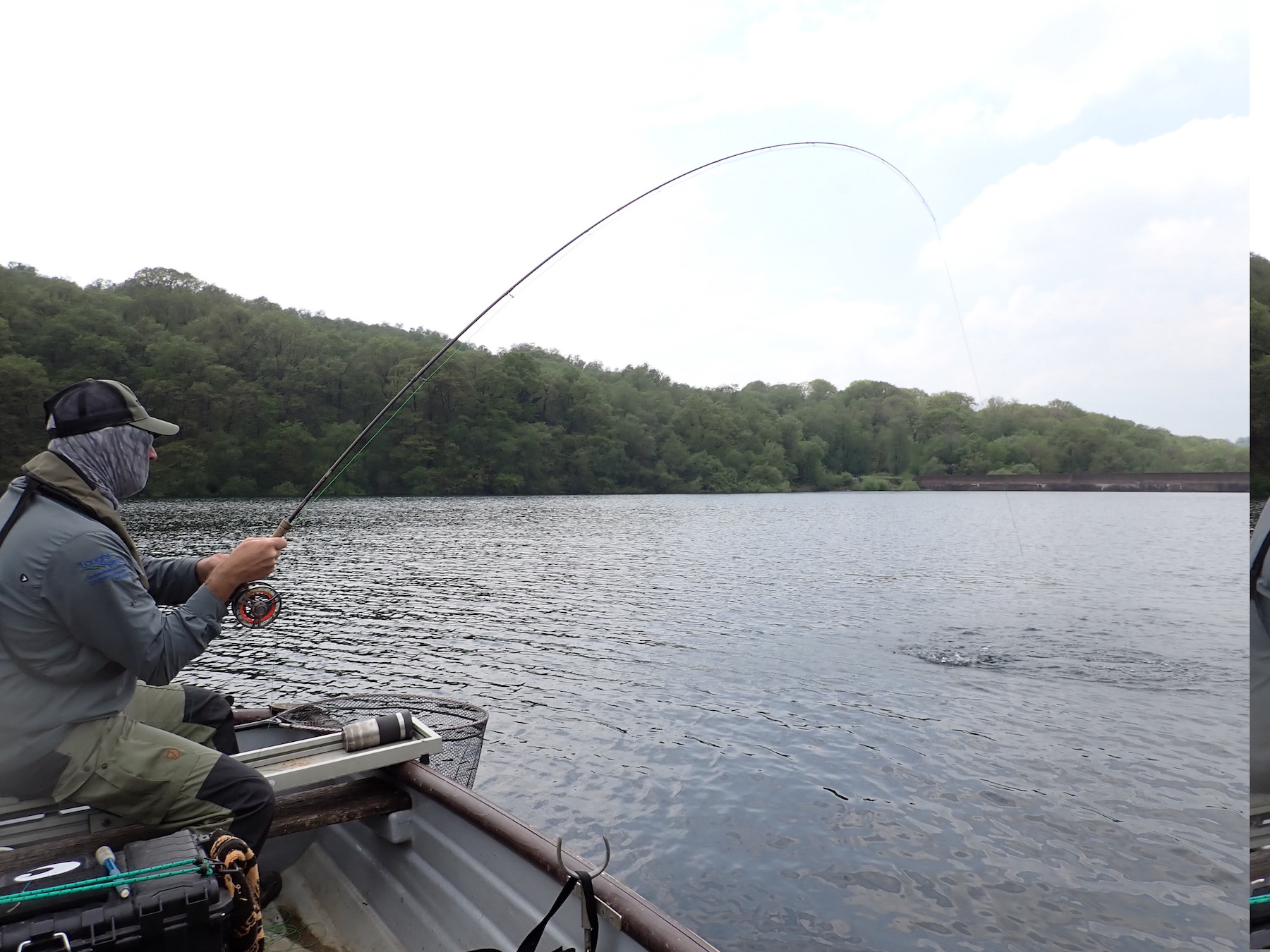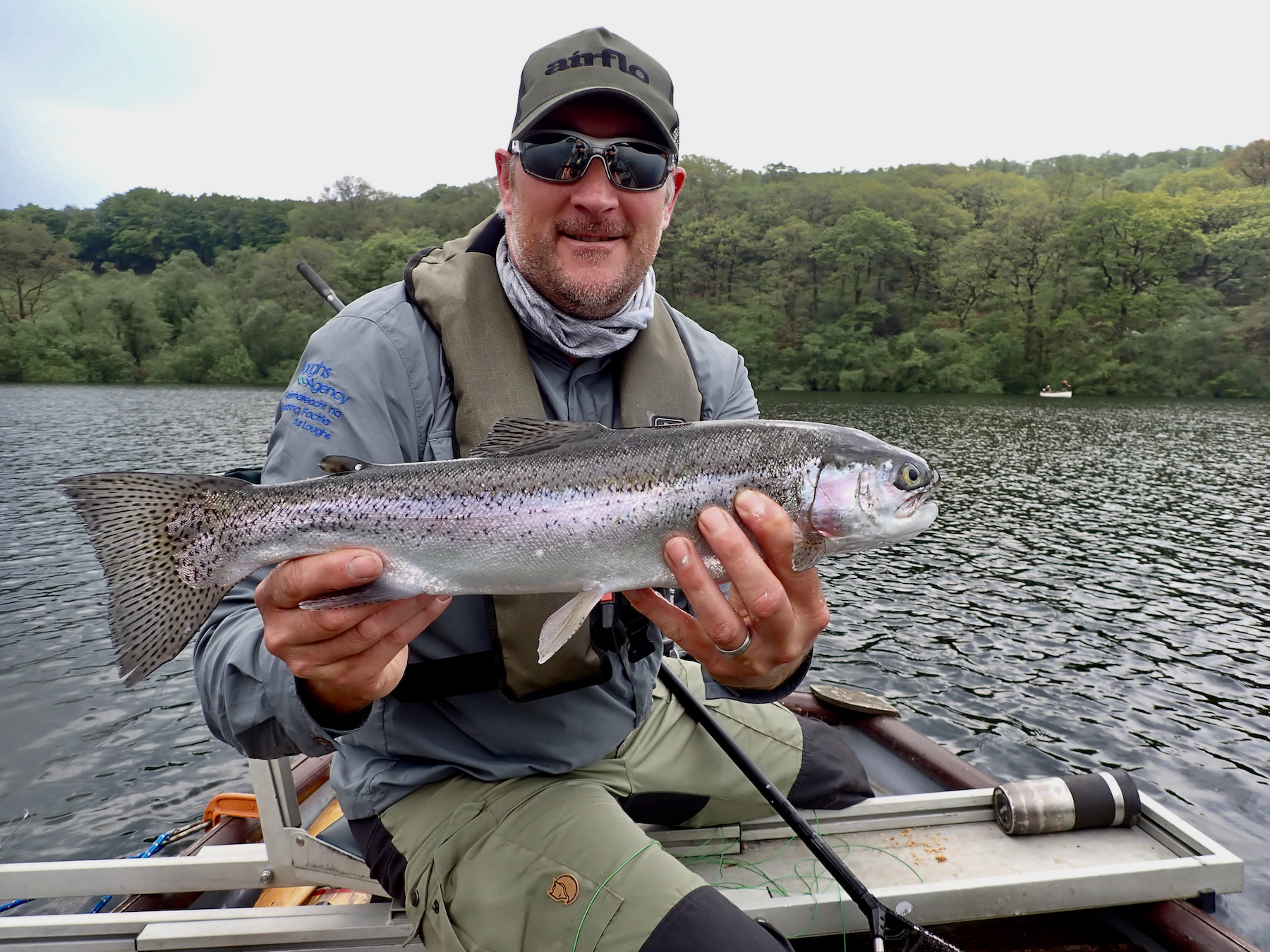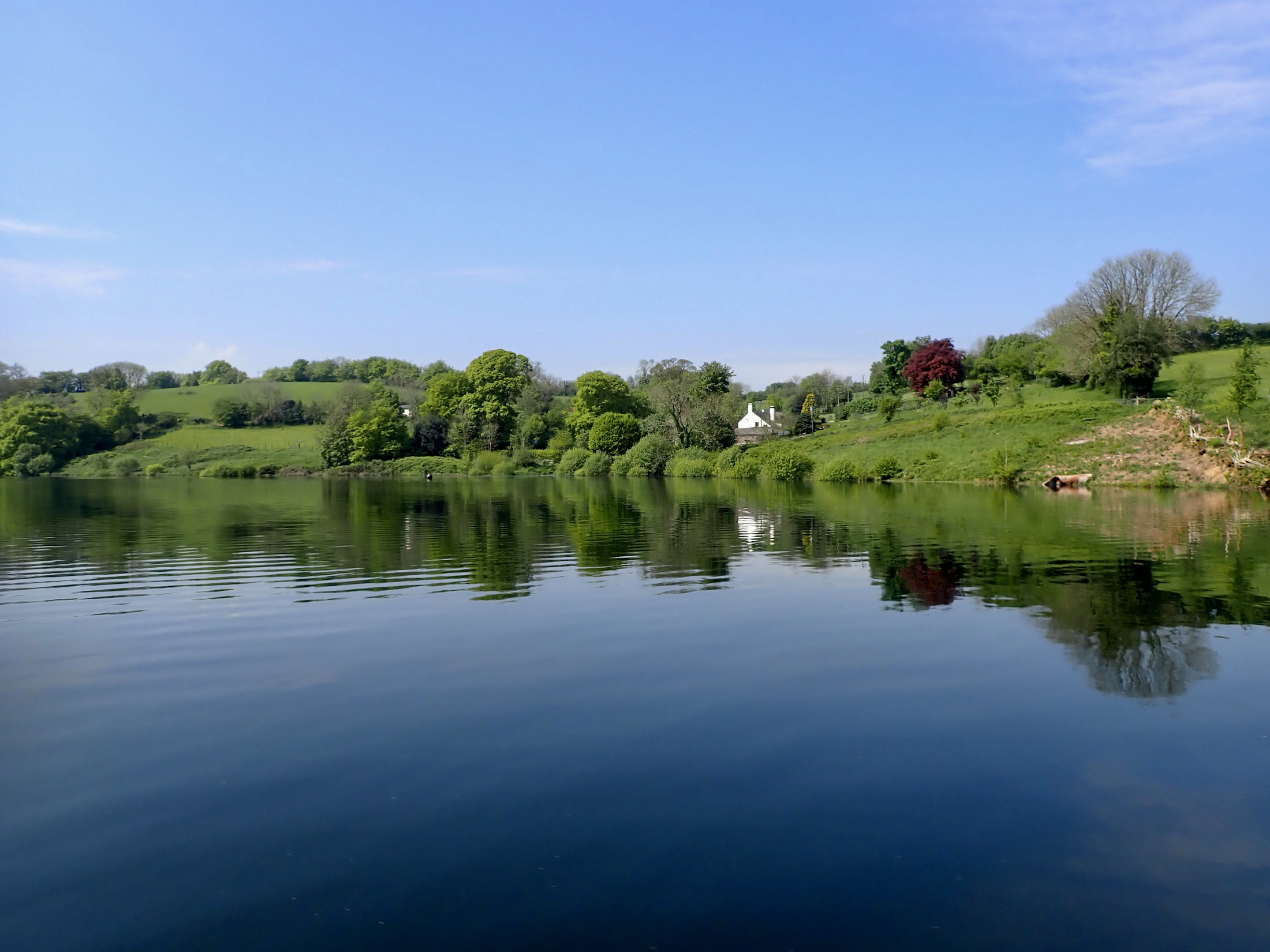Early April and to me this is trout season proper and where better to spend a day chasing rainbows than the fabulous Wimbleball nestled amongst Exmoor’s rural landscape.
I was fishing with my good friend Bruce Elston who had recently enjoyed catching his first double figure rainbow from Anglers Paradises Catch and release trout lake. We had originally intended to fish from the bank but recent catch reports indicated that the boats were starting to produce.
I was full of confidence despite the strong Easterly wind and bright sunshine. There was rain and cloud forecast for the afternoon so if the morning proved hard the afternoon would give a change of conditions.
We met at the boat pontoons for 8:30am after a pleasant drive as the morning sun rose to burn off any lingering morning mist. We were greeted by Mark Underhill who has worked so hard to make this fishery one of the best in the west country.
It was good to catch up and chat about prospects for the day and how well the fishery has been fishing recently. Judging by recent posts on social media the size of the rainbows this year are well worth chasing.
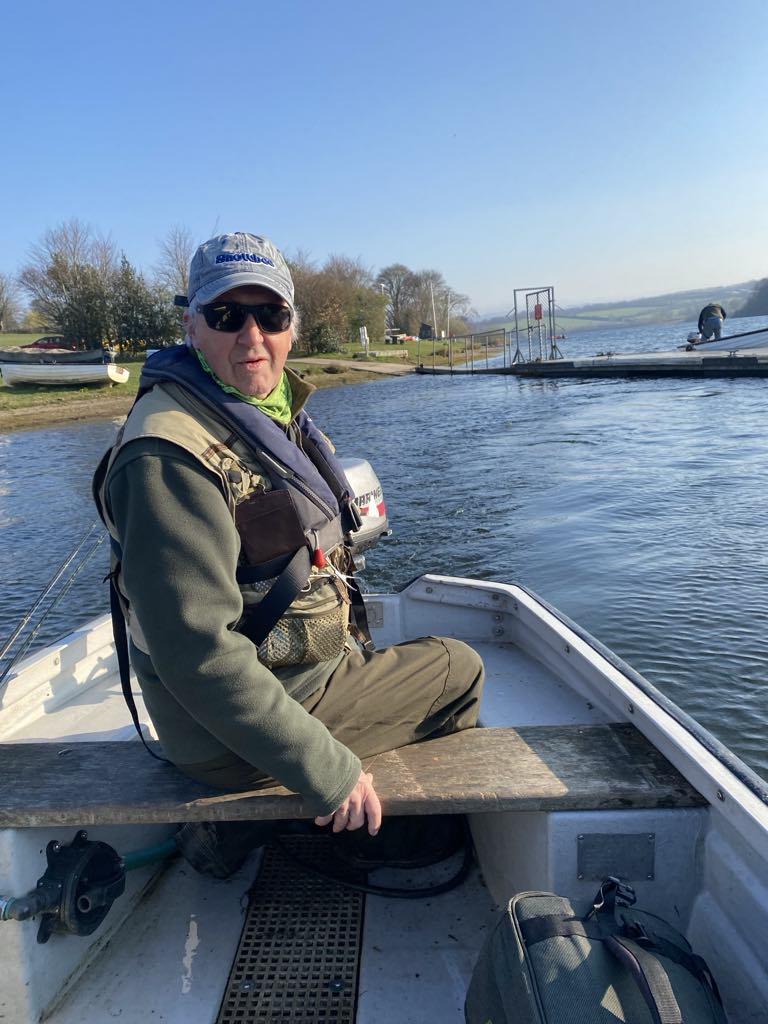
It was my turn as boat captain today and I suggested we start off with a drift or two in Cowmoor Bay that would offer a degree of shelter from the strong wind. We headed up into the wide bay towards the far end and commenced drifting using a drogue to slow the pace. I hooked a rainbow on the second drift that came adrift but this at least gave that much needed confidence boost.
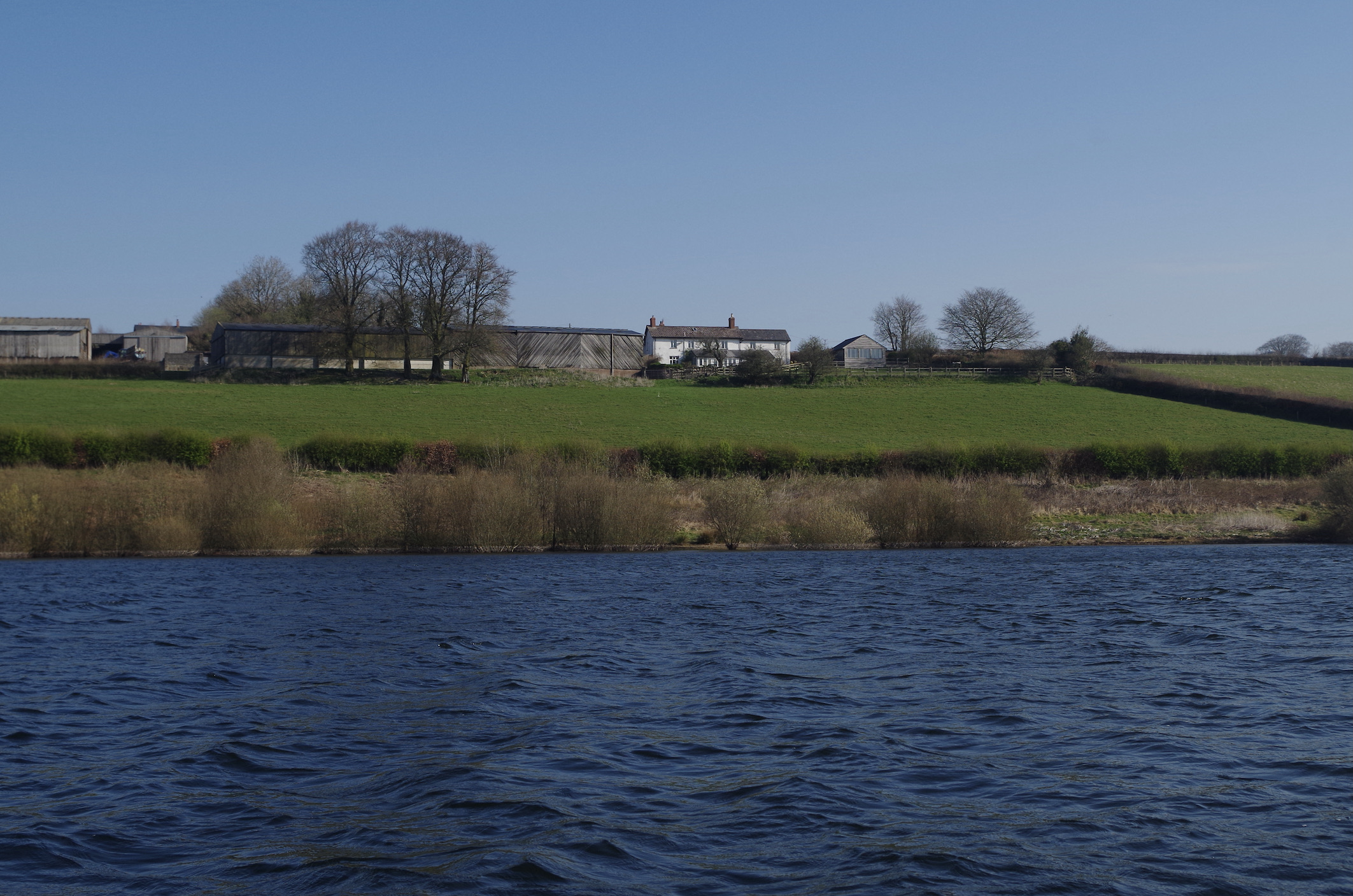
It was good to spot the first martins of the spring swooping over the water after their long migration from the African continent. The sighting of the spring migrants always boosts my spirits knowing that natures cycle is still turning as it should.
It soon became apparent that even with a drogue the drift was a bit too brisk and I suggested we head up to the dam end. We tied up to the rope that marks the dam area and spent half an hour searching the deep water to no avail.
I was using a fast sink Snowbee line with an olive damsel on the point and a bright orange blob on the dropper. Bruce was using a single black damsel.
The calmer waters of the Upton Arm beckoned we motored up into the wooded bay that always inspires. Wooded banks with branches trailing into deep clear water. Buzzards gliding high above and birdsong drifting in the spring air.
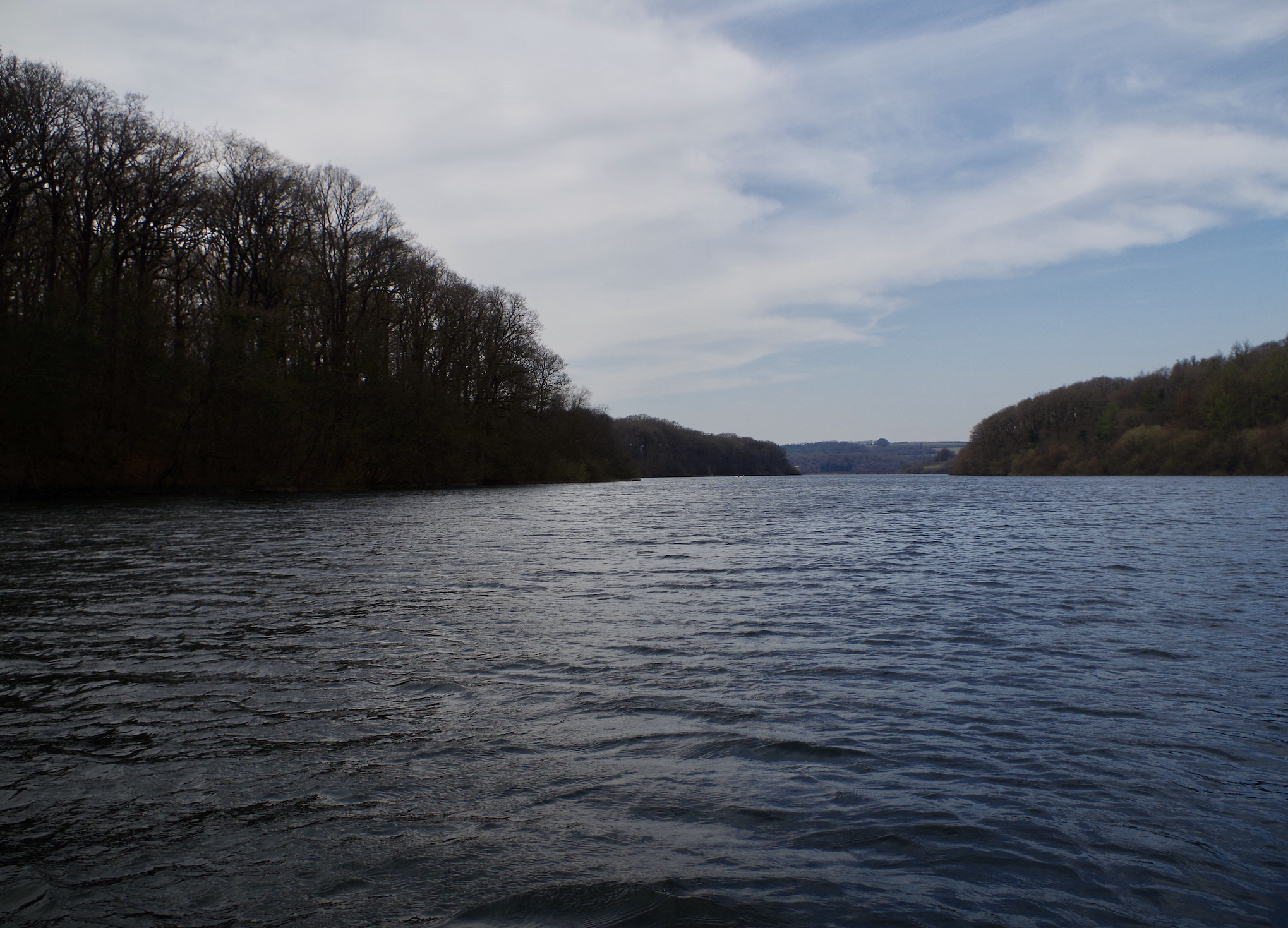
Action soon came our way as we drifted close to the bank with the trout seemingly close to the edge patrolling the steep drop off contours. We caught fish pretty well every drift throughout late morning. All hard fighting fish averaging between 2lb and 3lb.
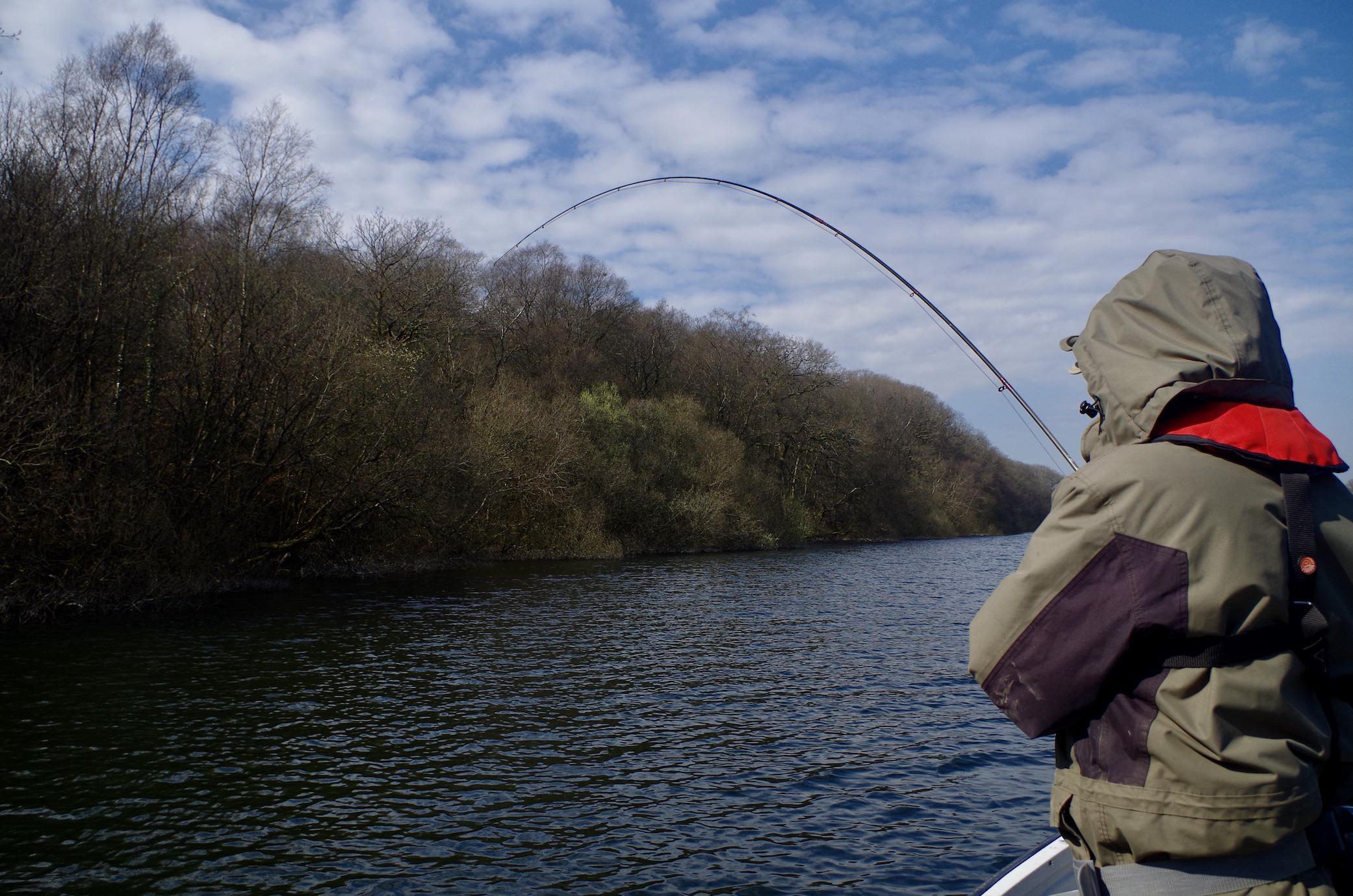
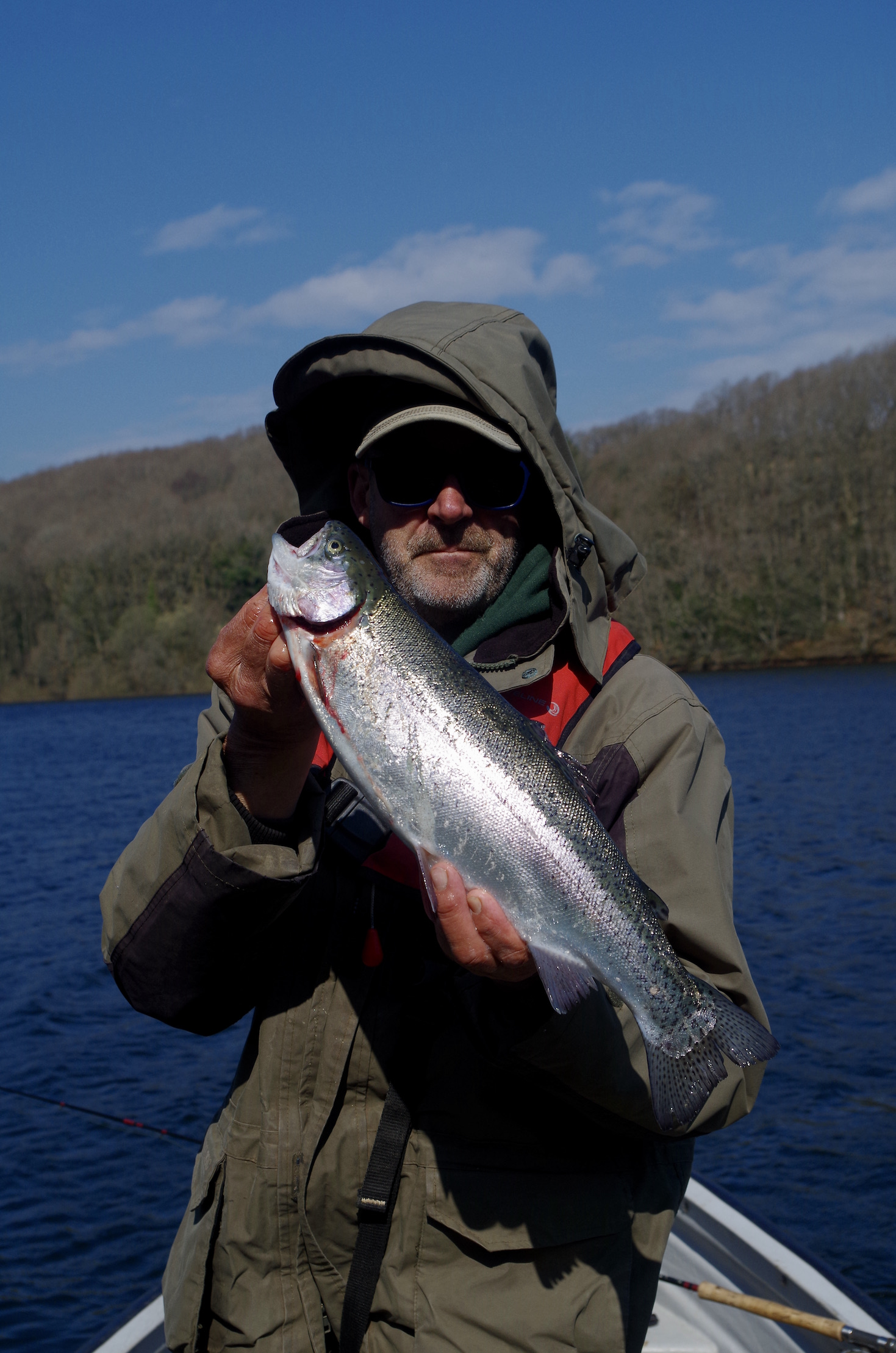
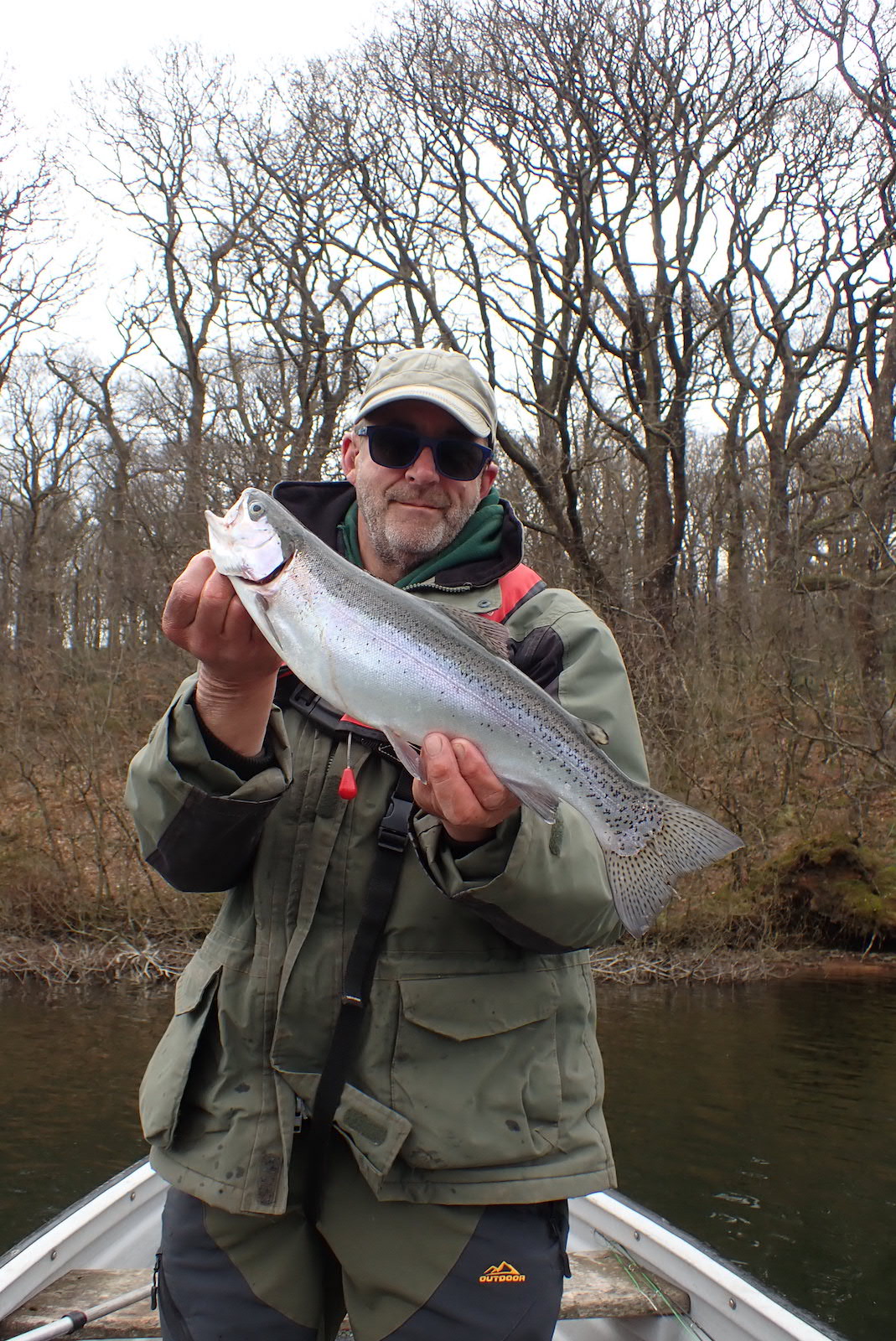
When our catch rate eased we decided to try the opposite bank where the wind was blowing harder. First cast I noted a swirl behind my fly as a trout lunged at the fly. The wind was pushing us rapidly into the bank and as I lifted the rod a huge rainbow appeared behind the lure turning away as I ran out of water. Bruce and I both gasped in awe at its size. One of those would certainly make our day!
With the wind making it very difficult we decided to take a break and return to the calmer bay we had been fishing and take a bit of lunch with the anchor lowered. I grabbed a sandwich and an iced coffee between casts. Bruce set up a nymphing set up with a sight indicator and allowed the set up to drift gently just off the overhanging tree line.

Bruce missed a couple of takes but it was third time lucky when he tightened into a fish that took off with a stunning turn of speed. Bruce hung on and relished the pulsing rod as line was ripped from the reel on a couple of long runs out into the bay. Eventually the fish settled into a closer range tussle a couple of rod lengths from the boat. Each time Bruce encouraged the fish close to the net it would surge off again. It was obviously a good fish that we estimated at around 7lb. It wasn’t until it slid over the rim of the net that we got an idea of its true size. A deep flanked fish in perfect condition with wide and powerful tail. Bruce decided to keep the fish and we were both stunned when the scales told a weight of 9lb 14oz!
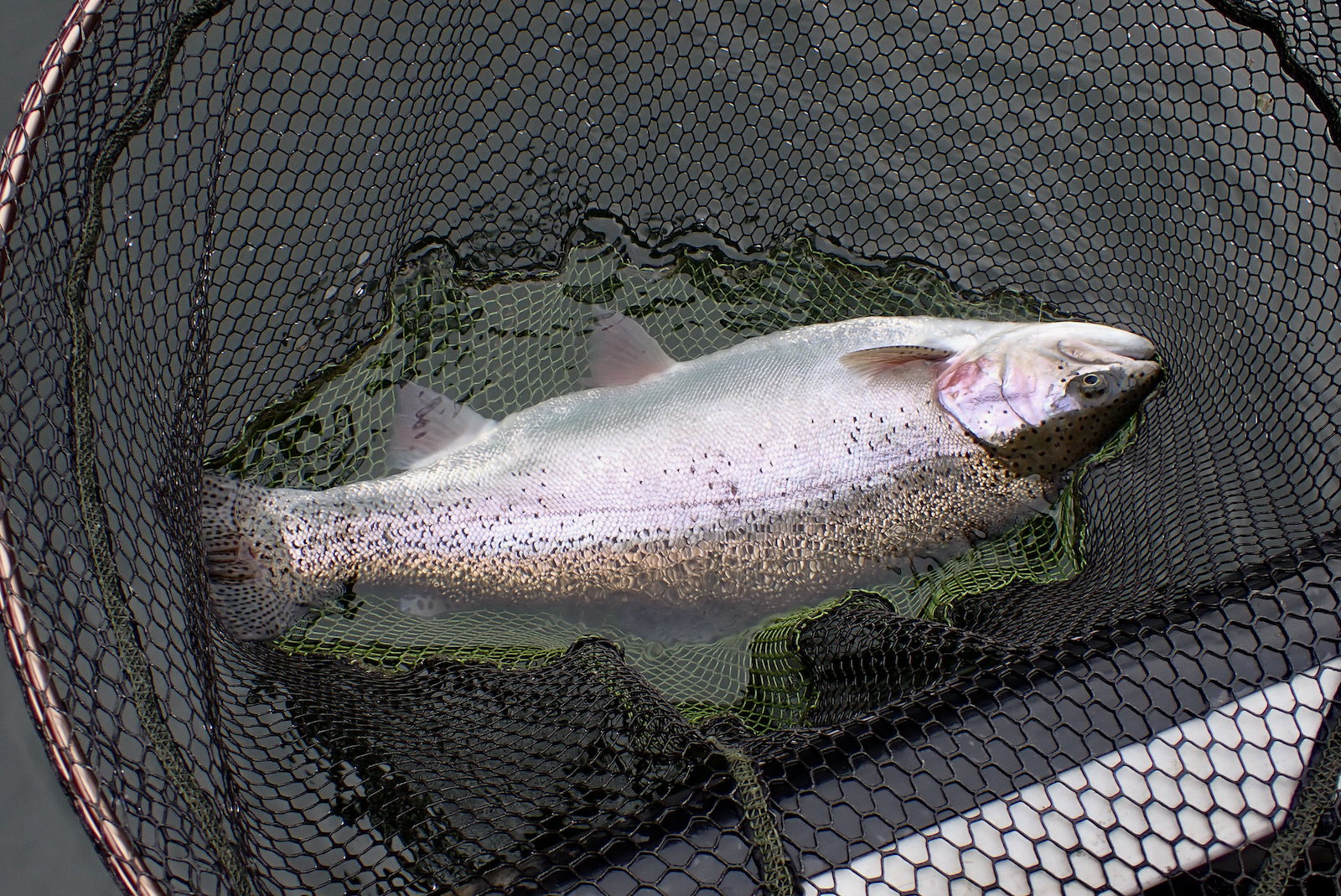
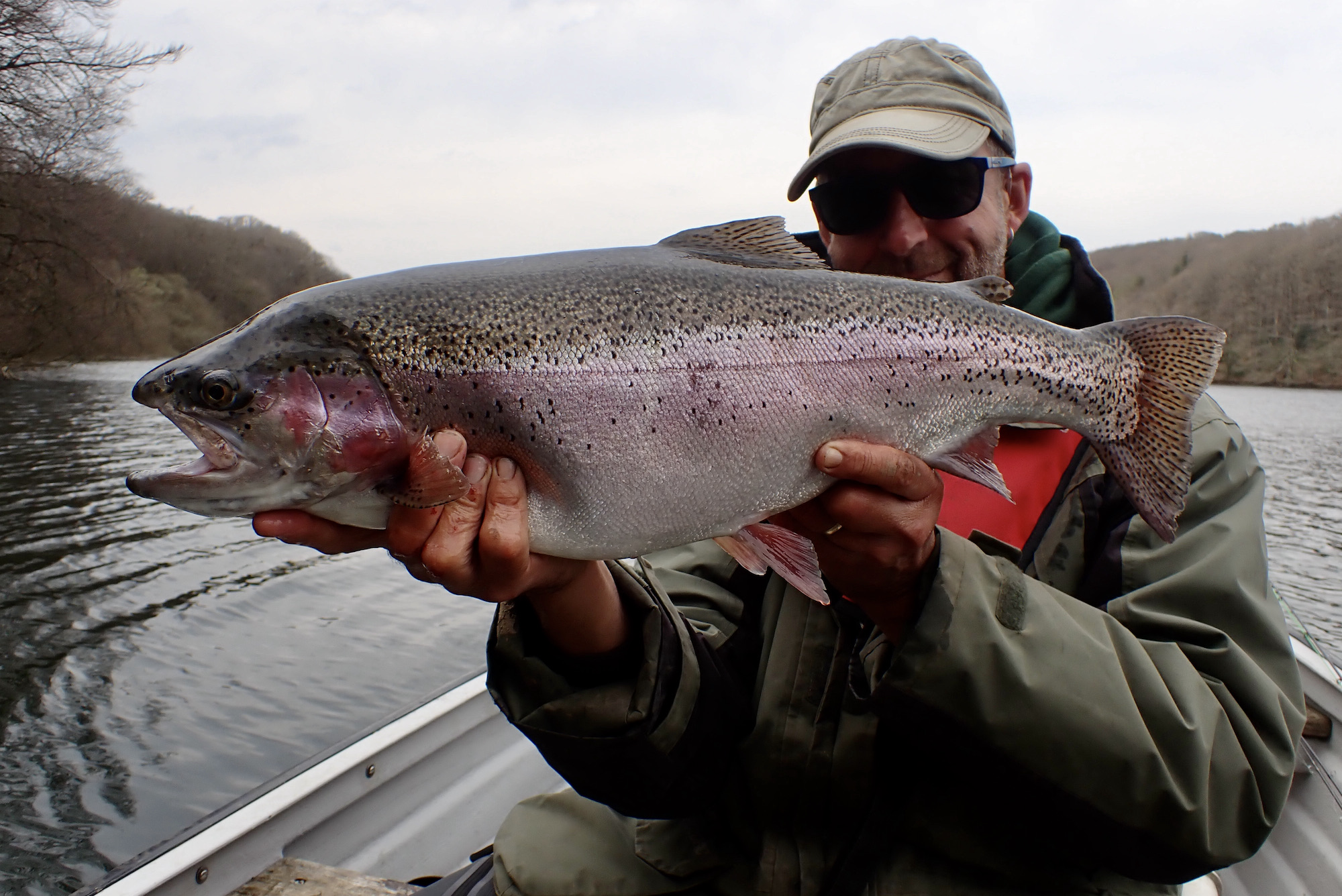
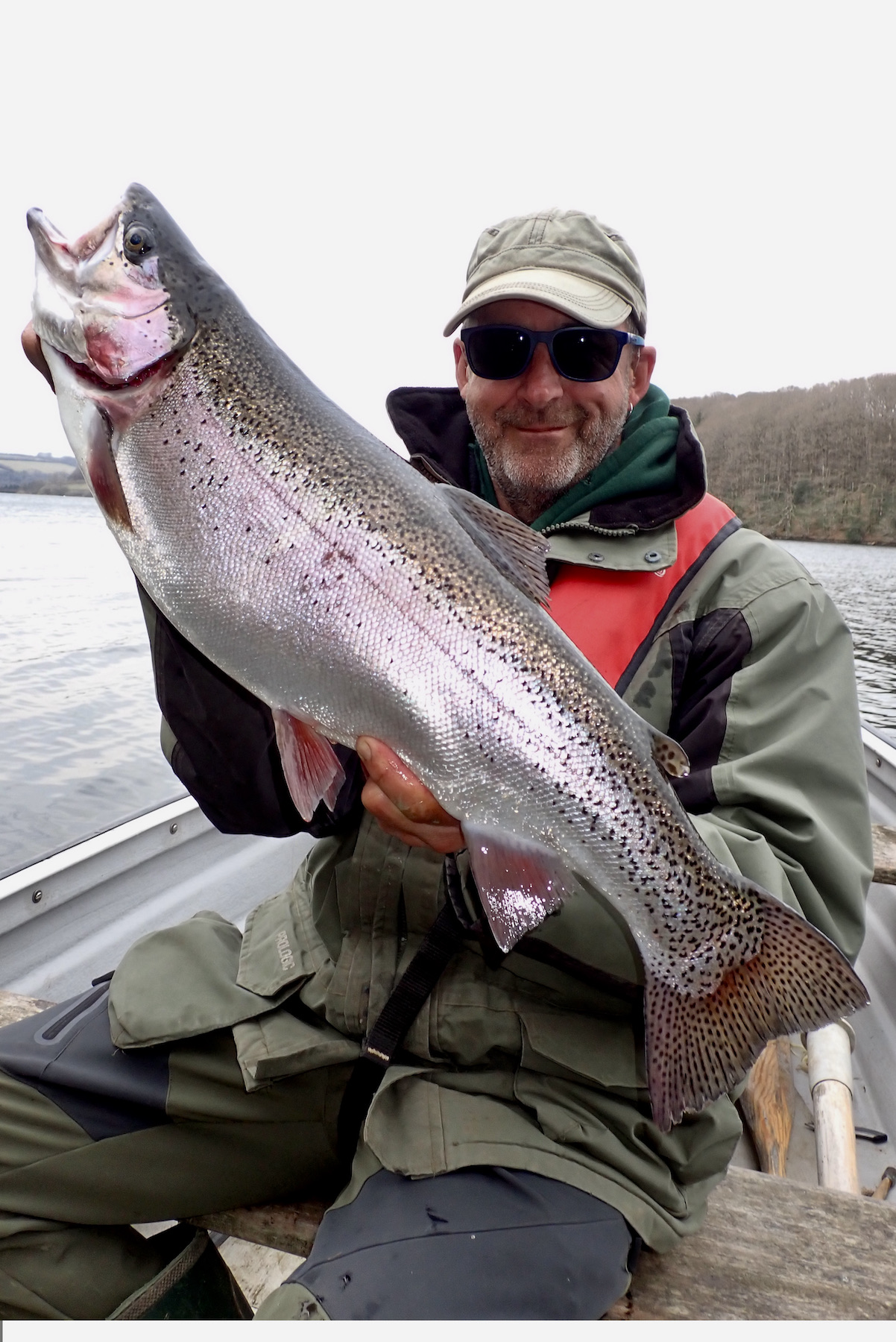
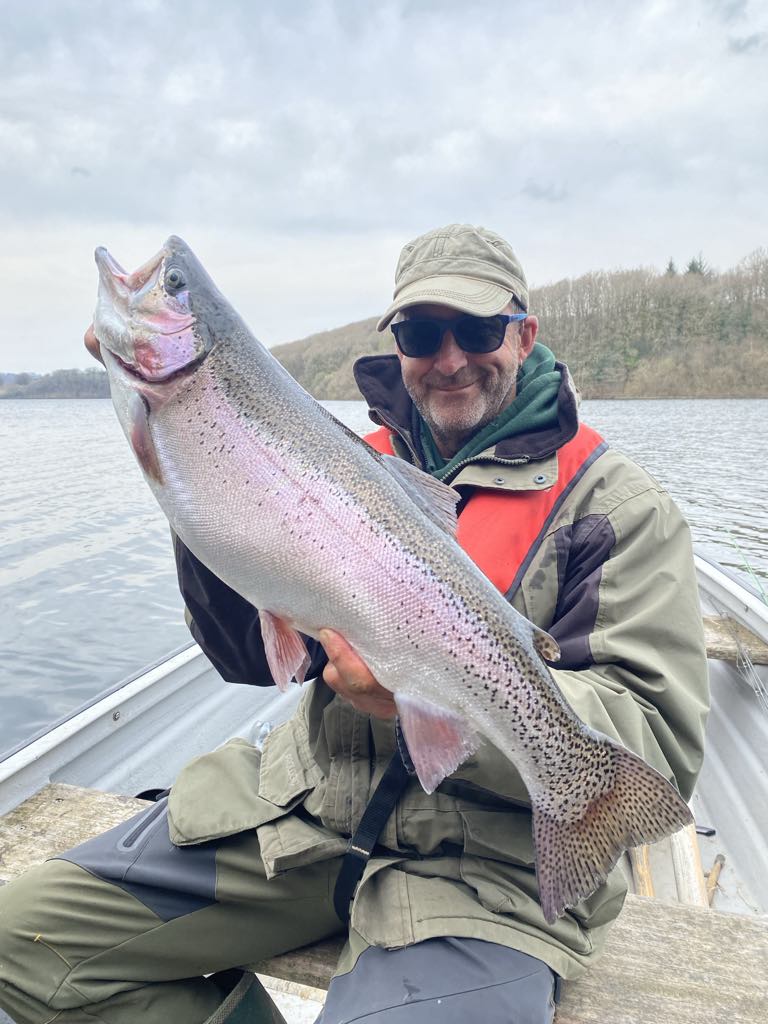
What was most thought provoking was that the fish we had seen earlier appeared much bigger than this one. We caught a few more in the bay and then embarked upon a search back on the far side where we had seen the big fish.
We found that if we positioned the boat carefully thirty yards or so off the bank we could drift into the shoreline where the trout were lurking then start the motor and push back out to drift back in; zig zagging along the bank like this we searched the margin adding trout or missing takes most drifts. I also glimpsed another monster of a rainbow that missed my damsel by an inch as we ran out of water at the end of a drift.
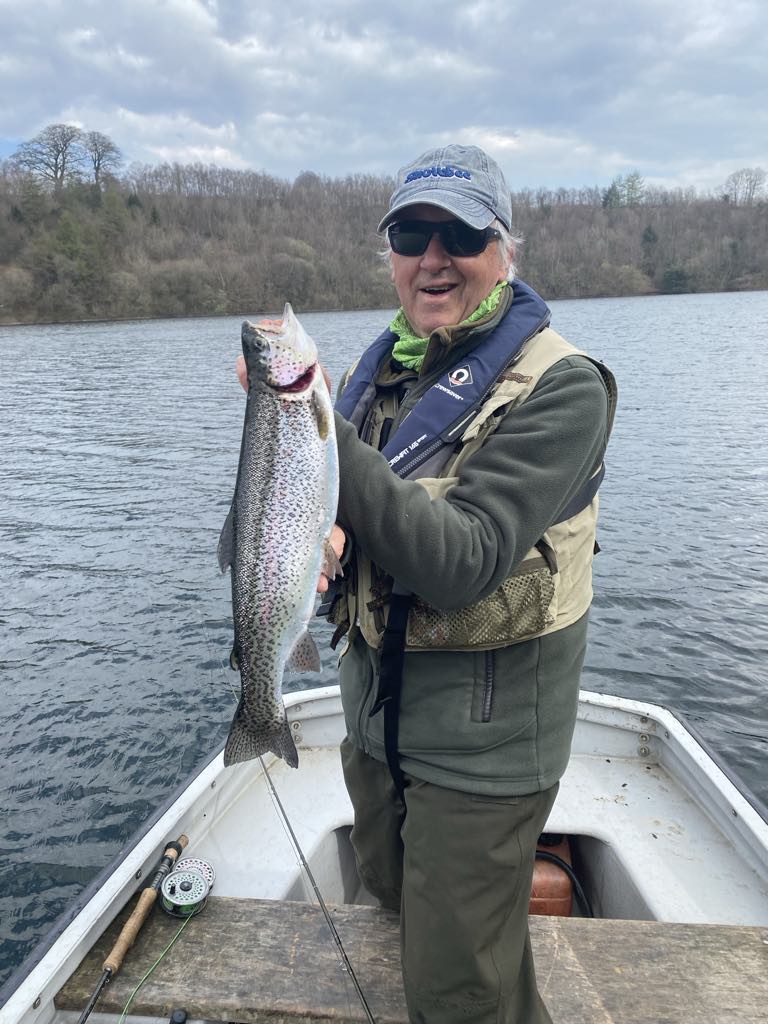

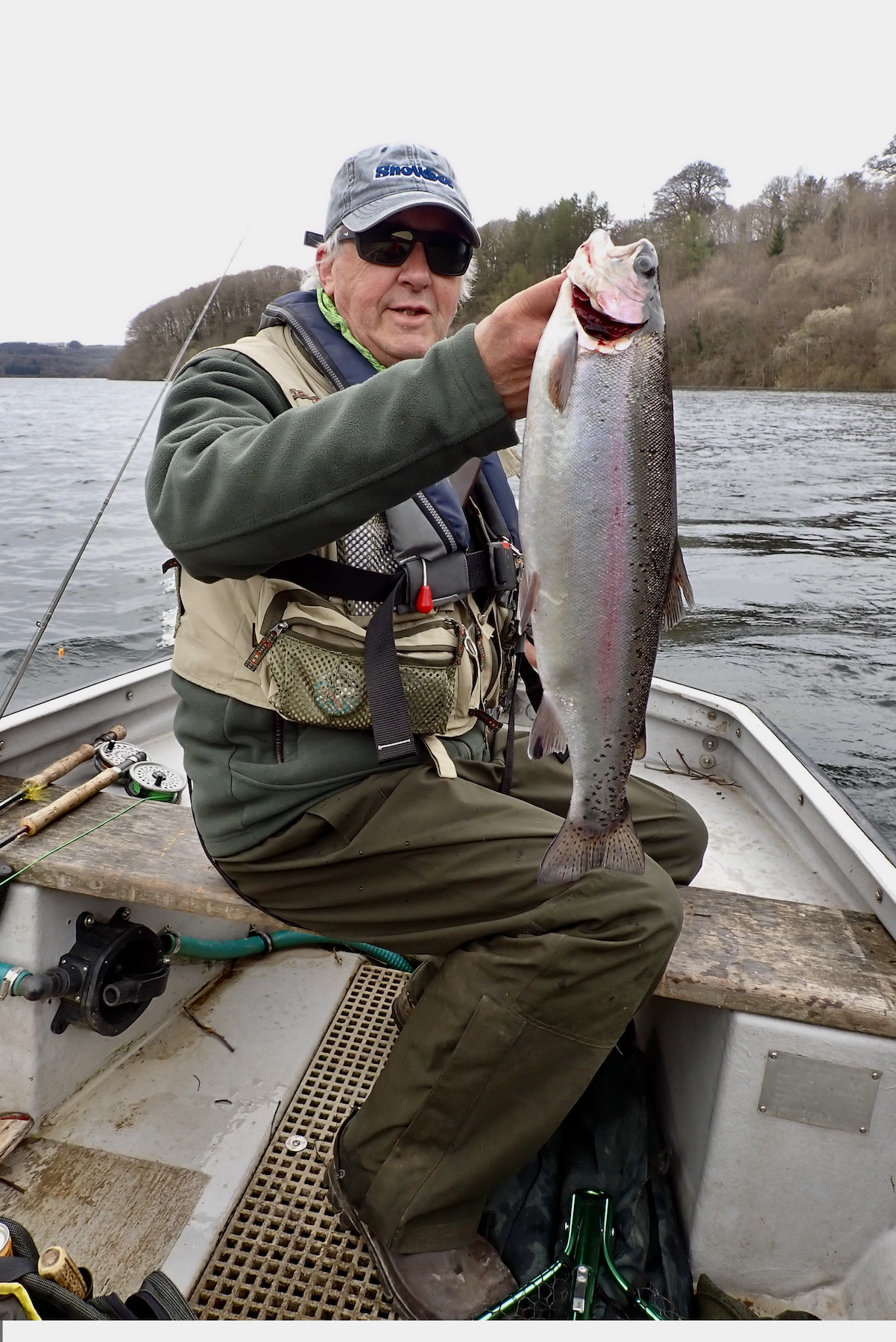
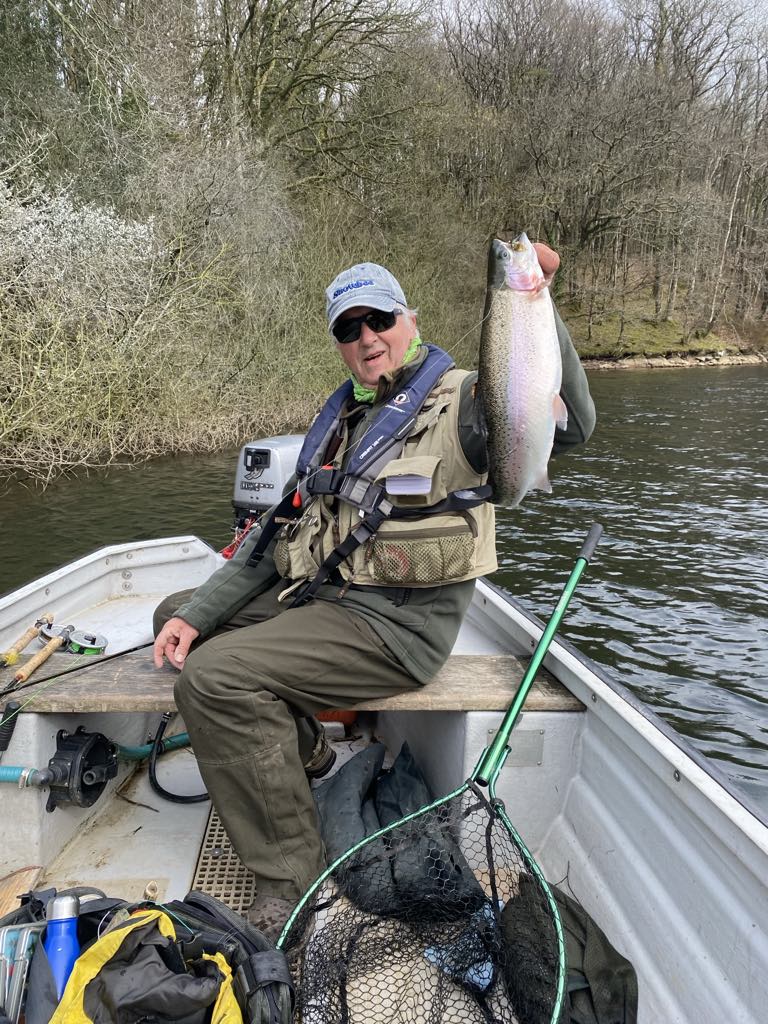
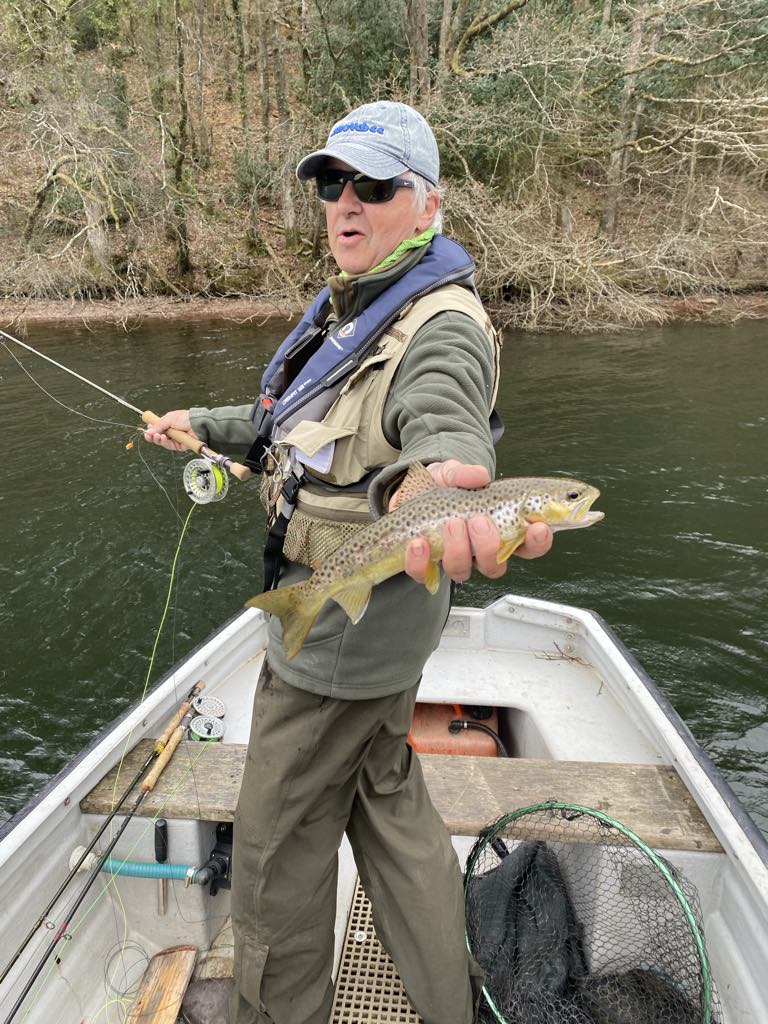
Sport eased for the last hour as rain started to fall. Bruce commented that it had been his best days trout fishing ever and he relished the exciting tug of the trout smashing into the lure. We headed back to the pontoon arms aching slightly, reflecting upon another day of memories made. We ended the day on seven trout each averaging close to 3lb with one solitary wild brown trout. The coming months should bring plenty of great days on this wonderfully wild water. Its stunning rainbows testament to an ambitious stocking program.
In addition to the stocked rainbows there are also some stunning wild brown trout that undoubtedly exceed 10lb! Now that really would be the fish of dreams….





